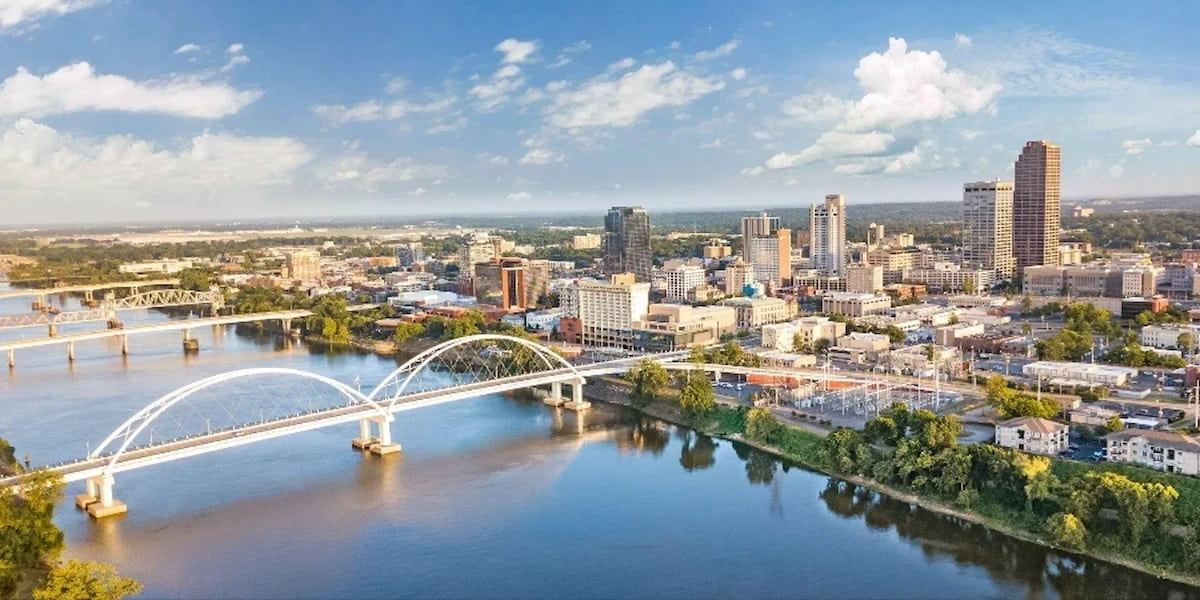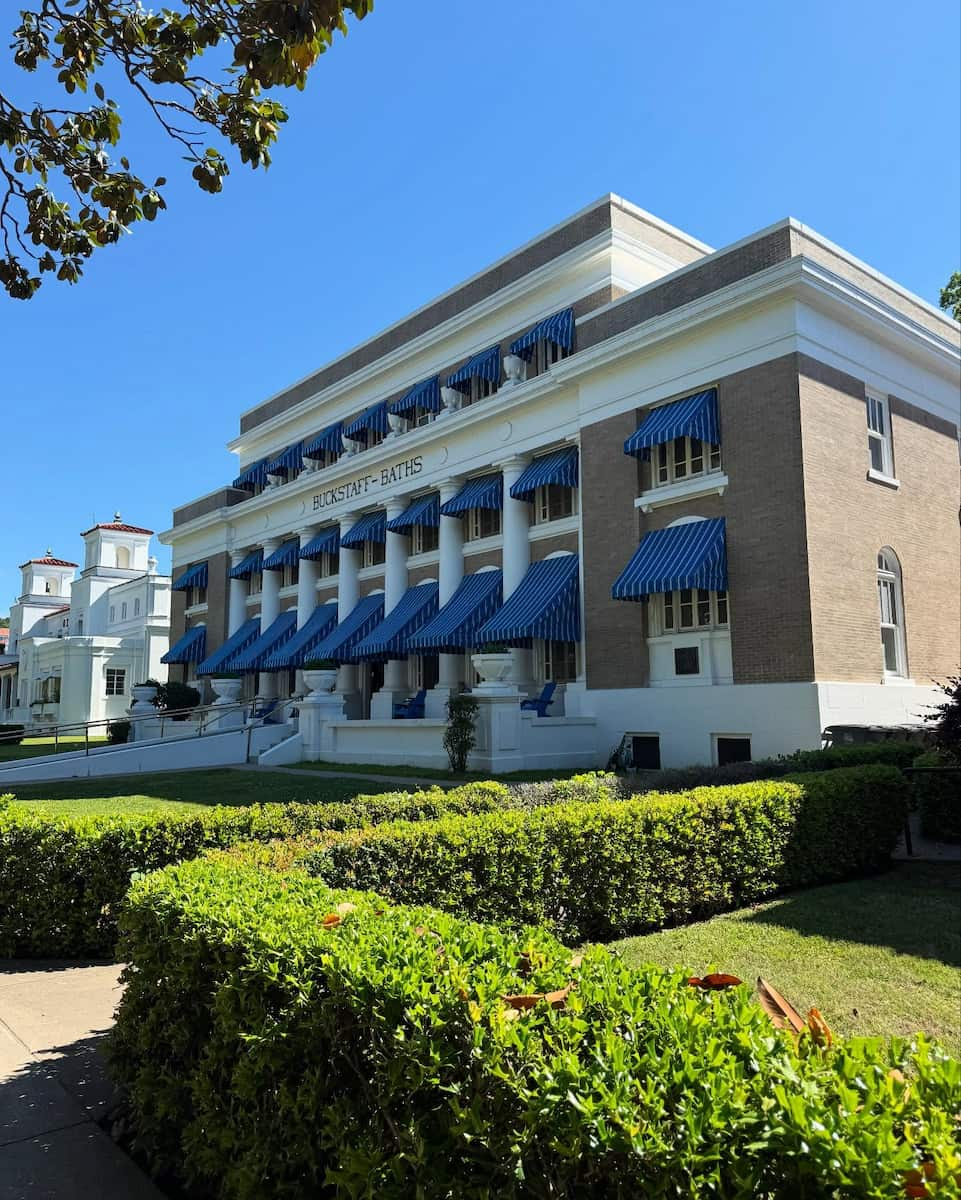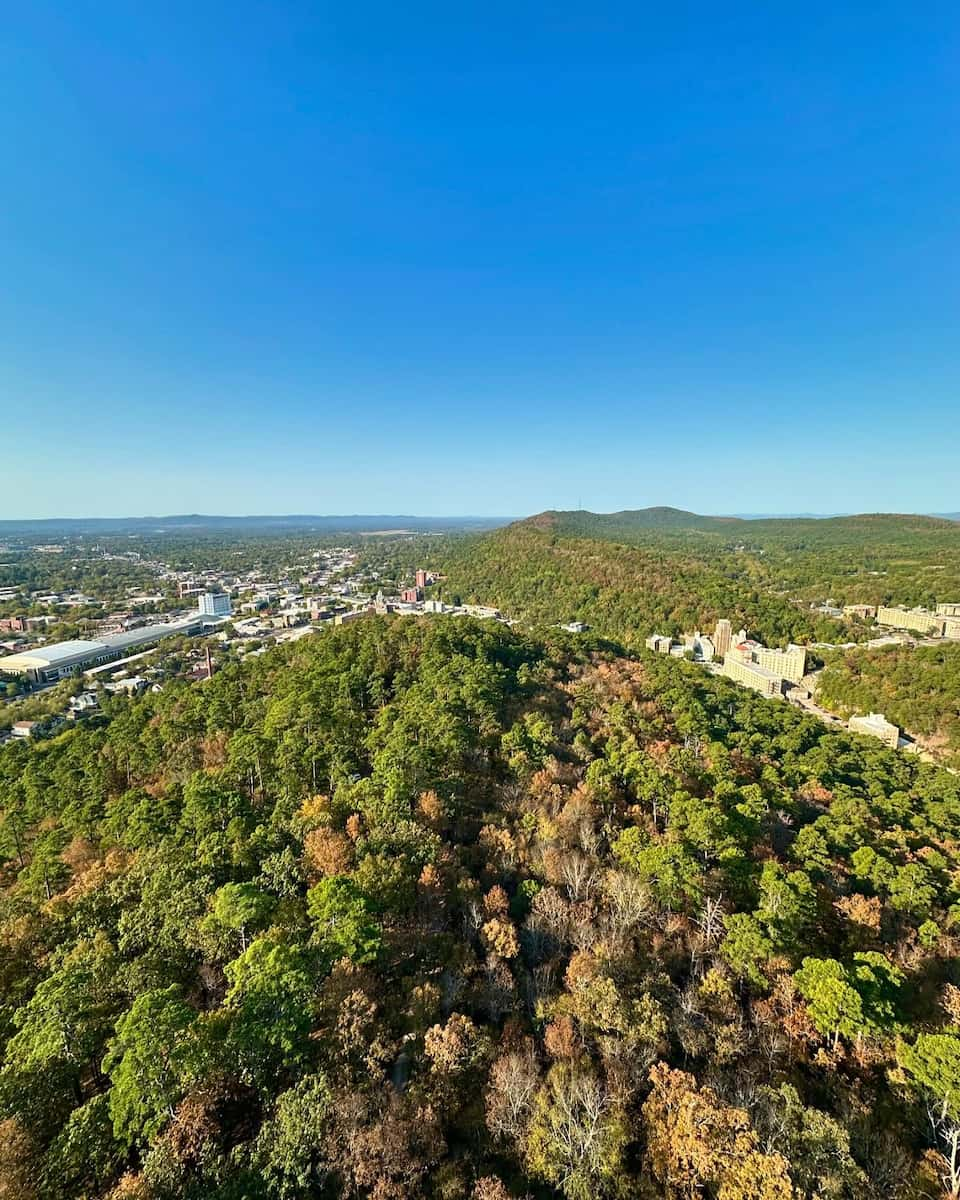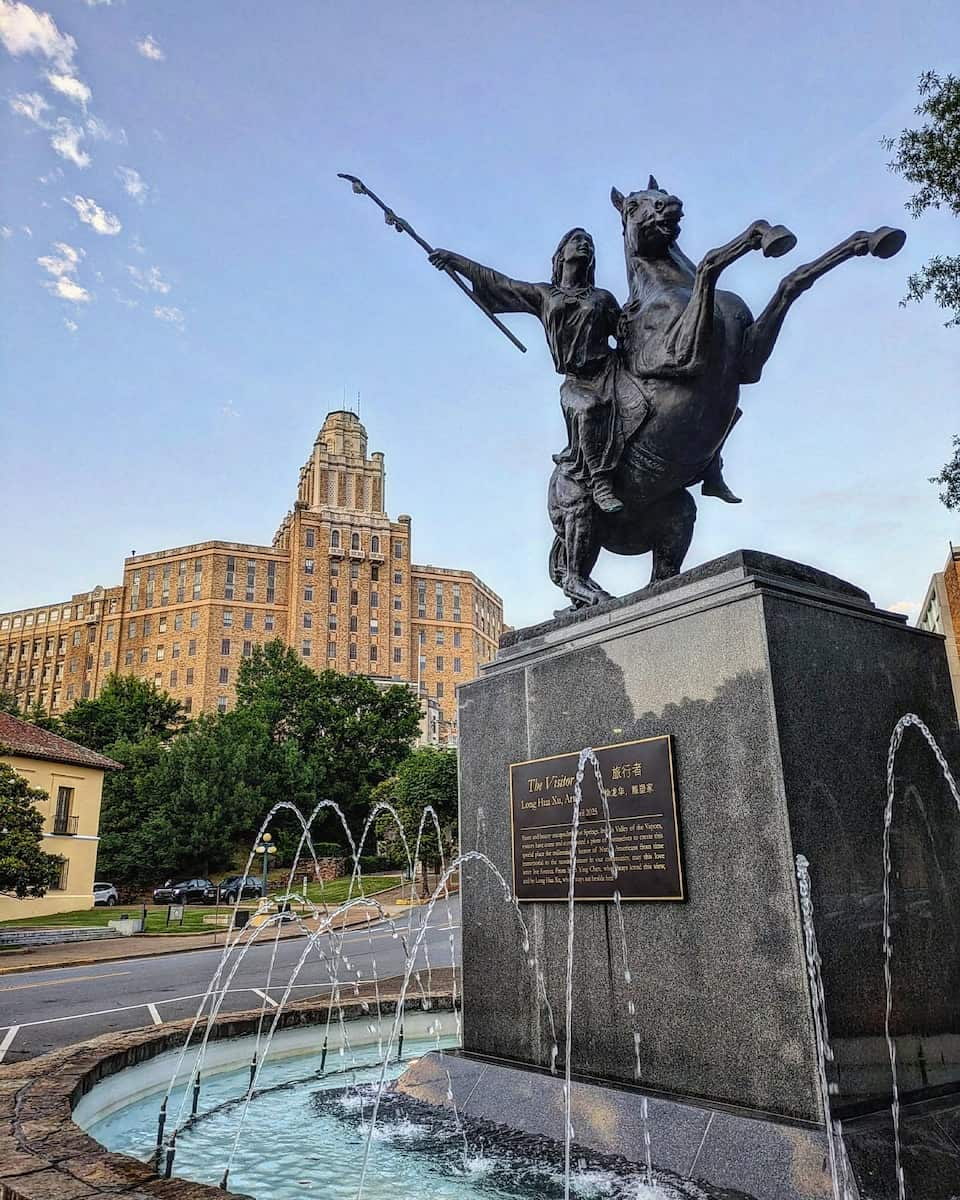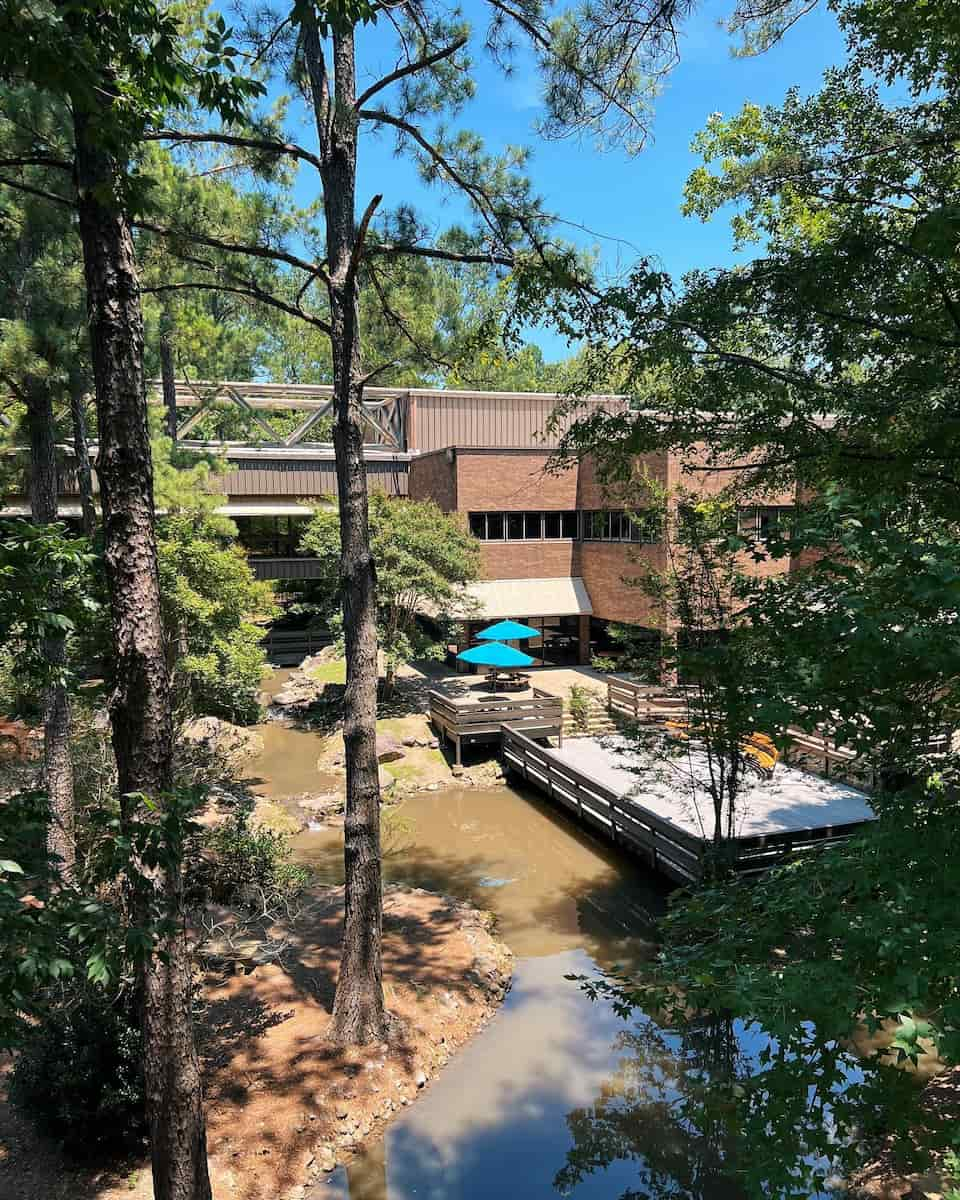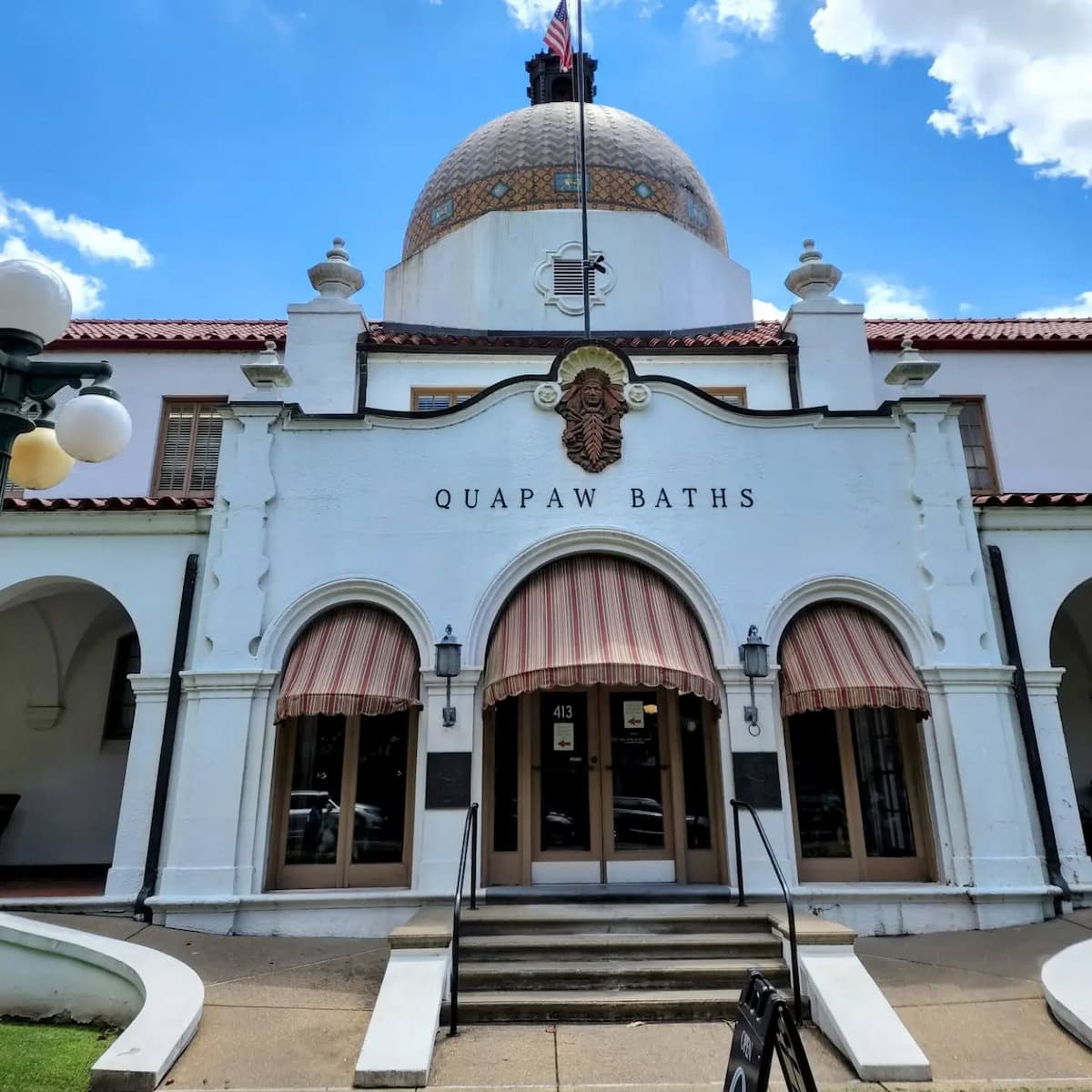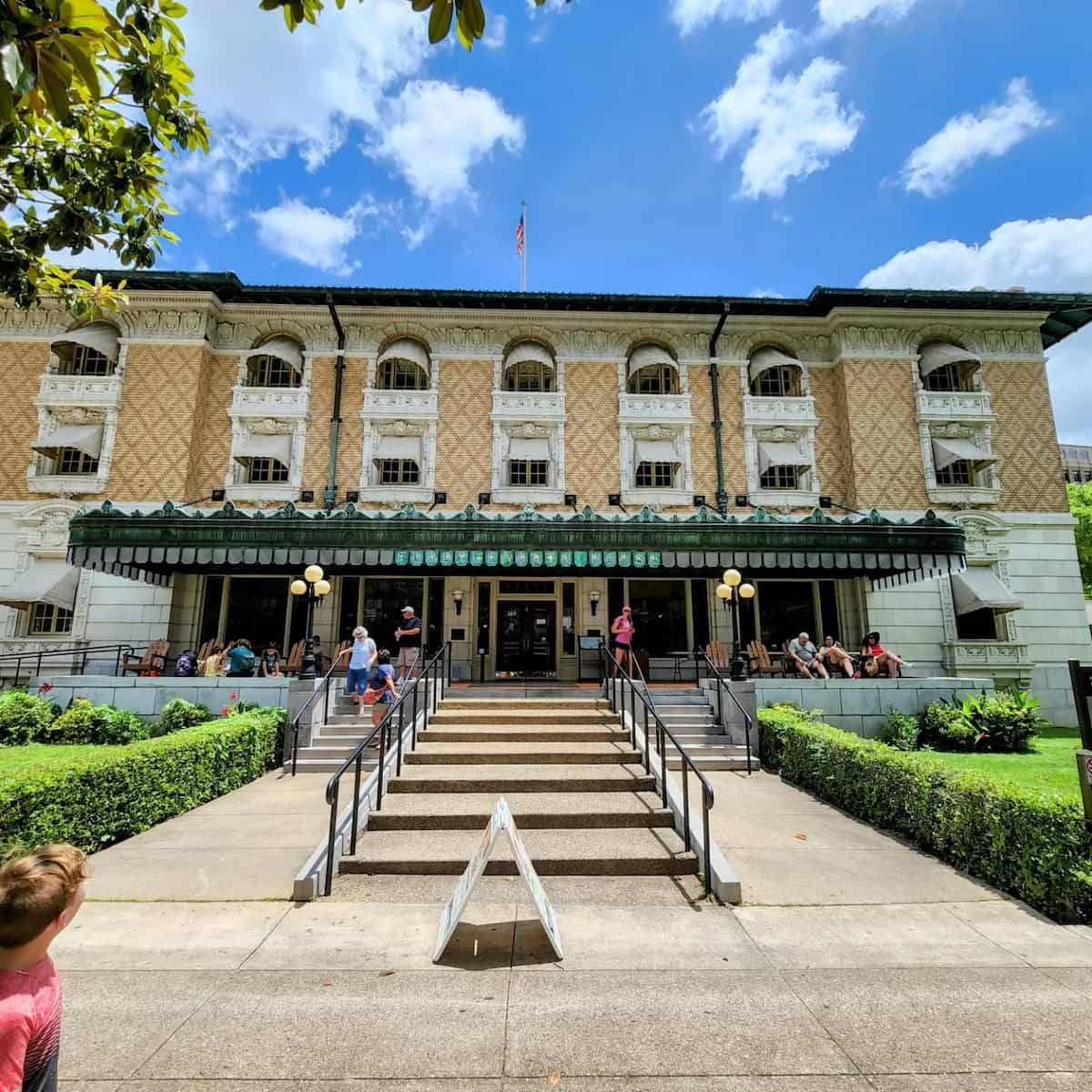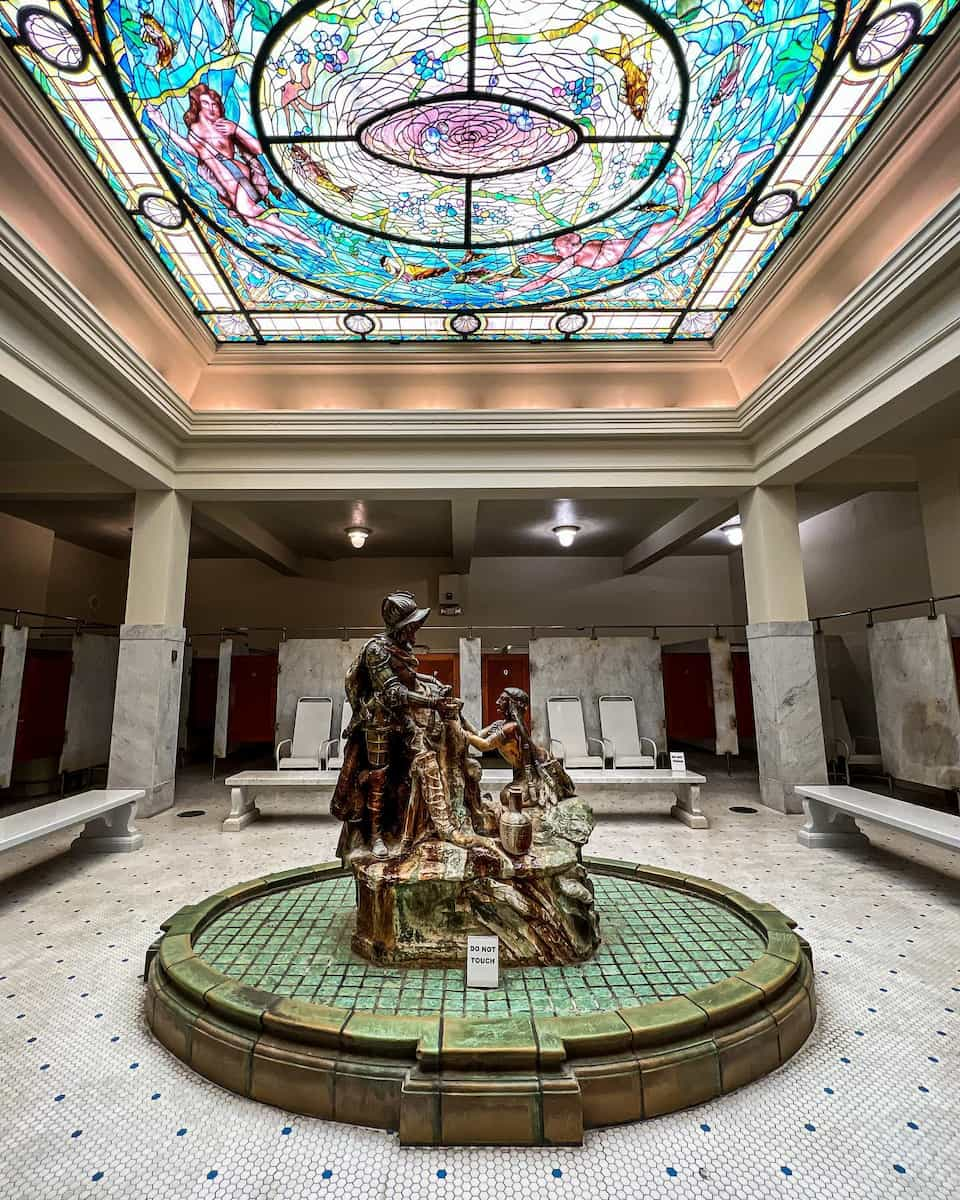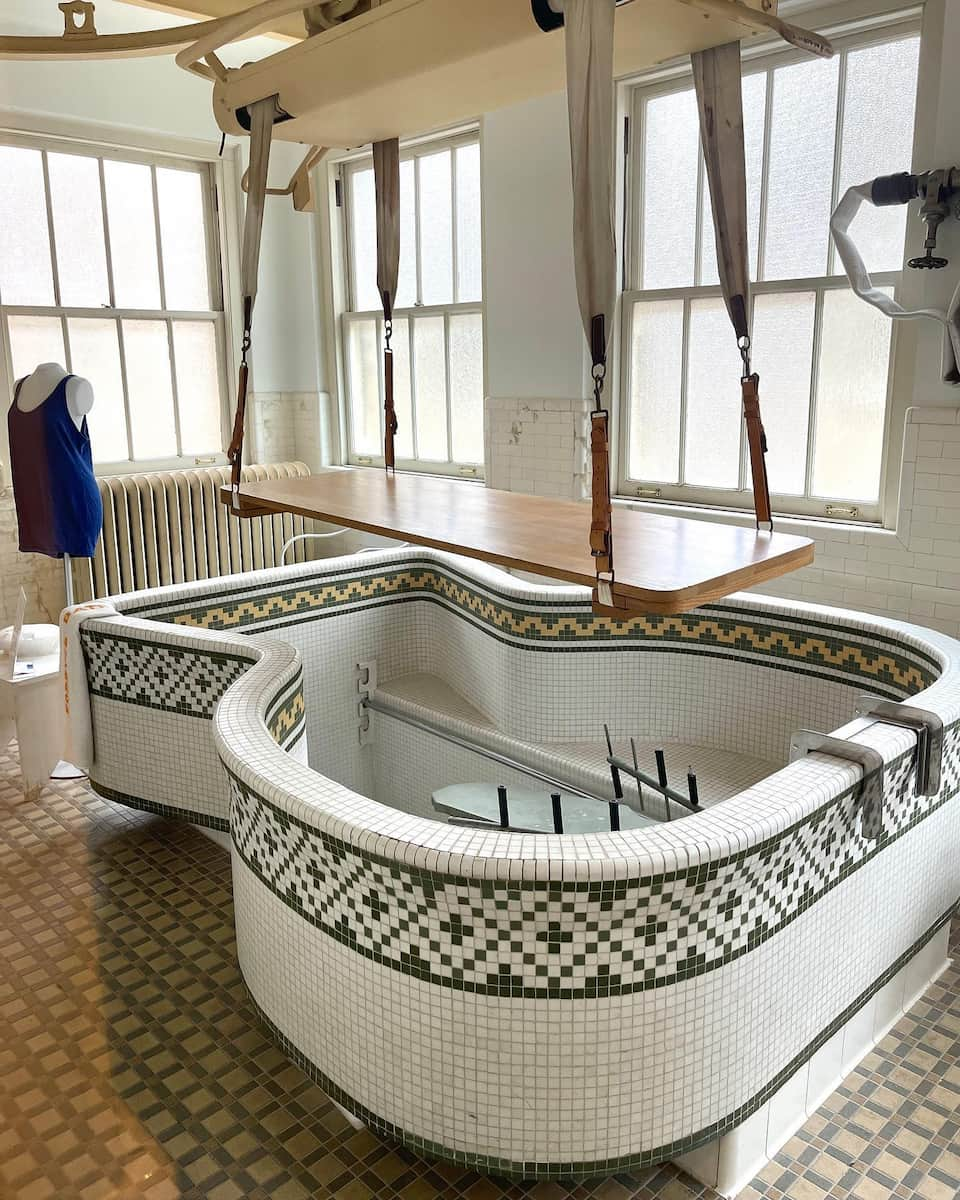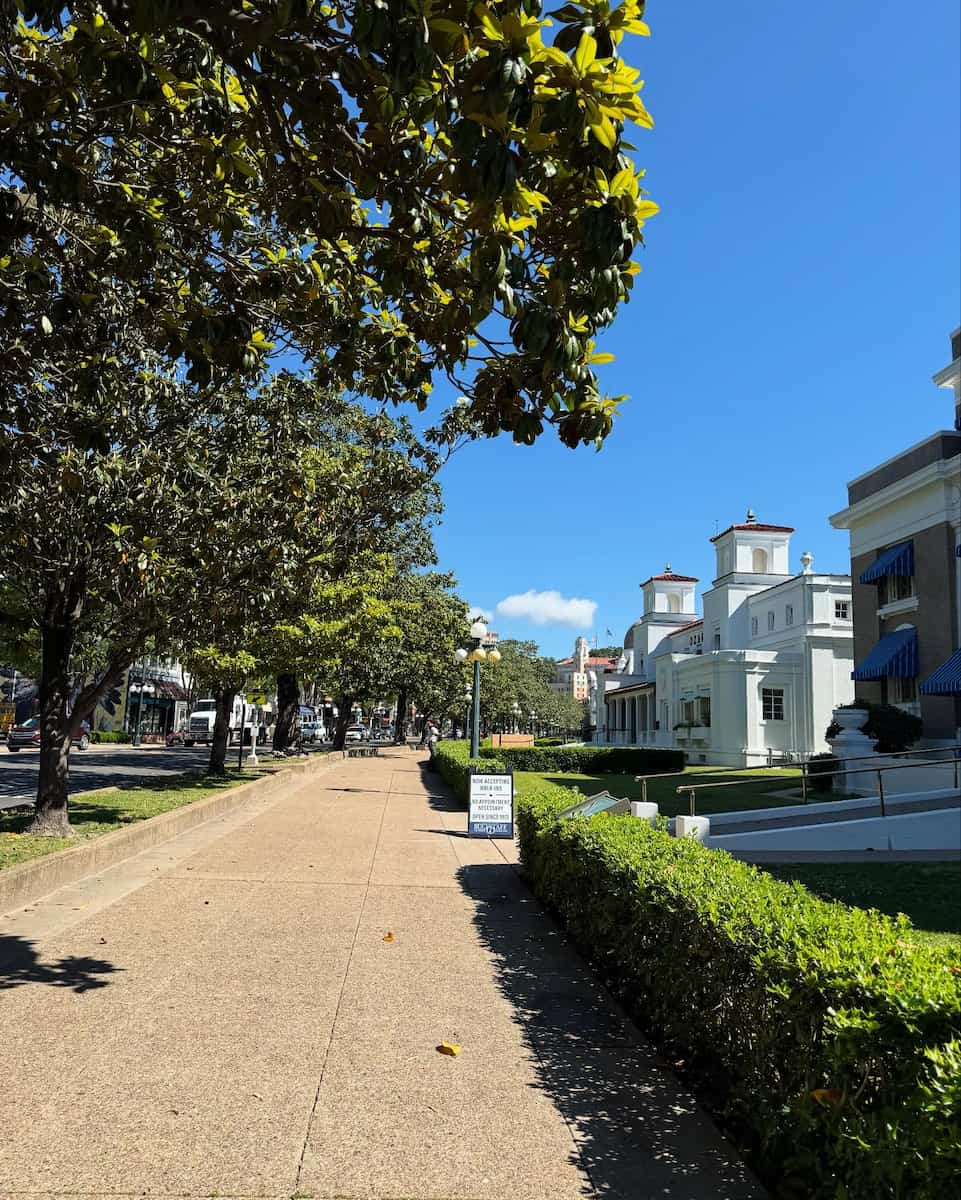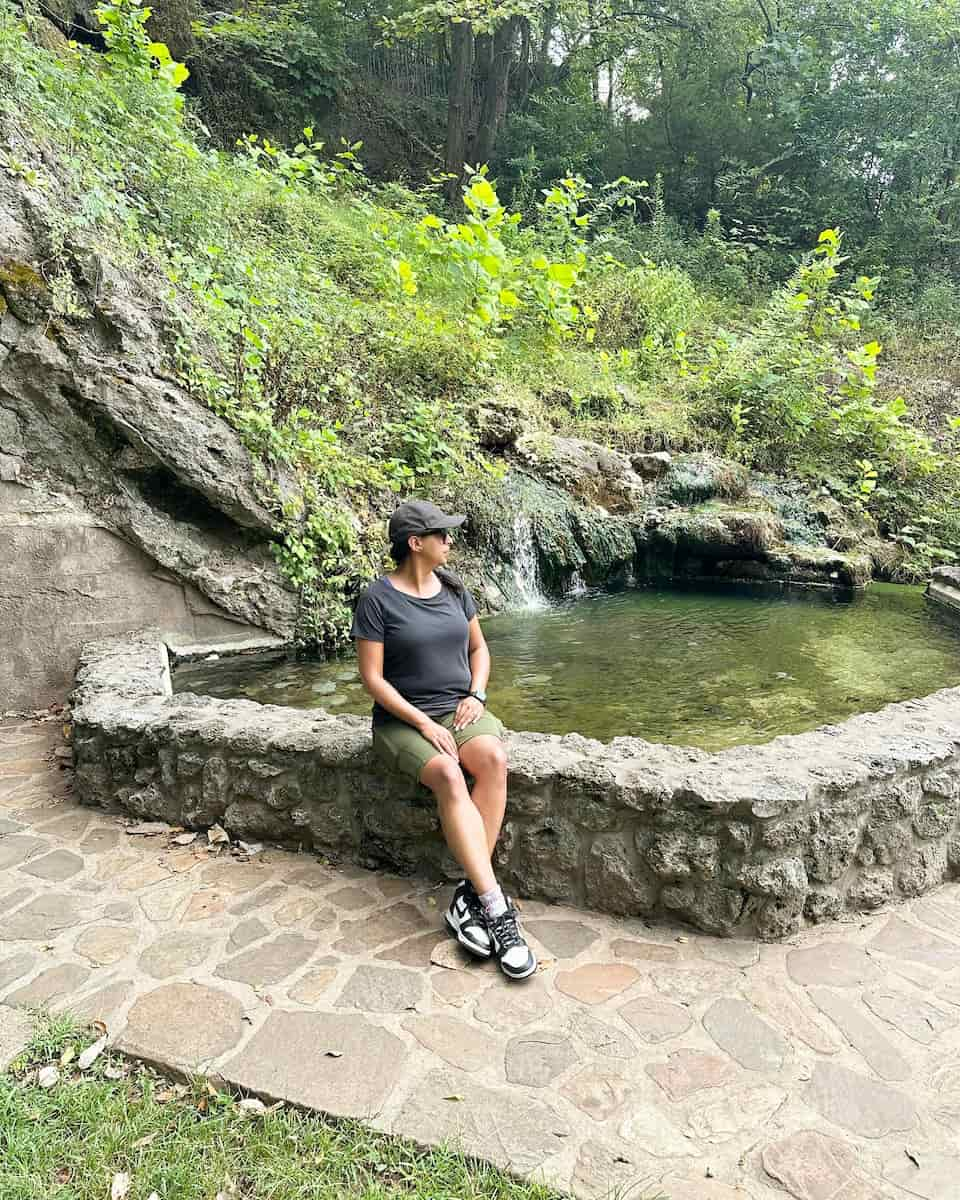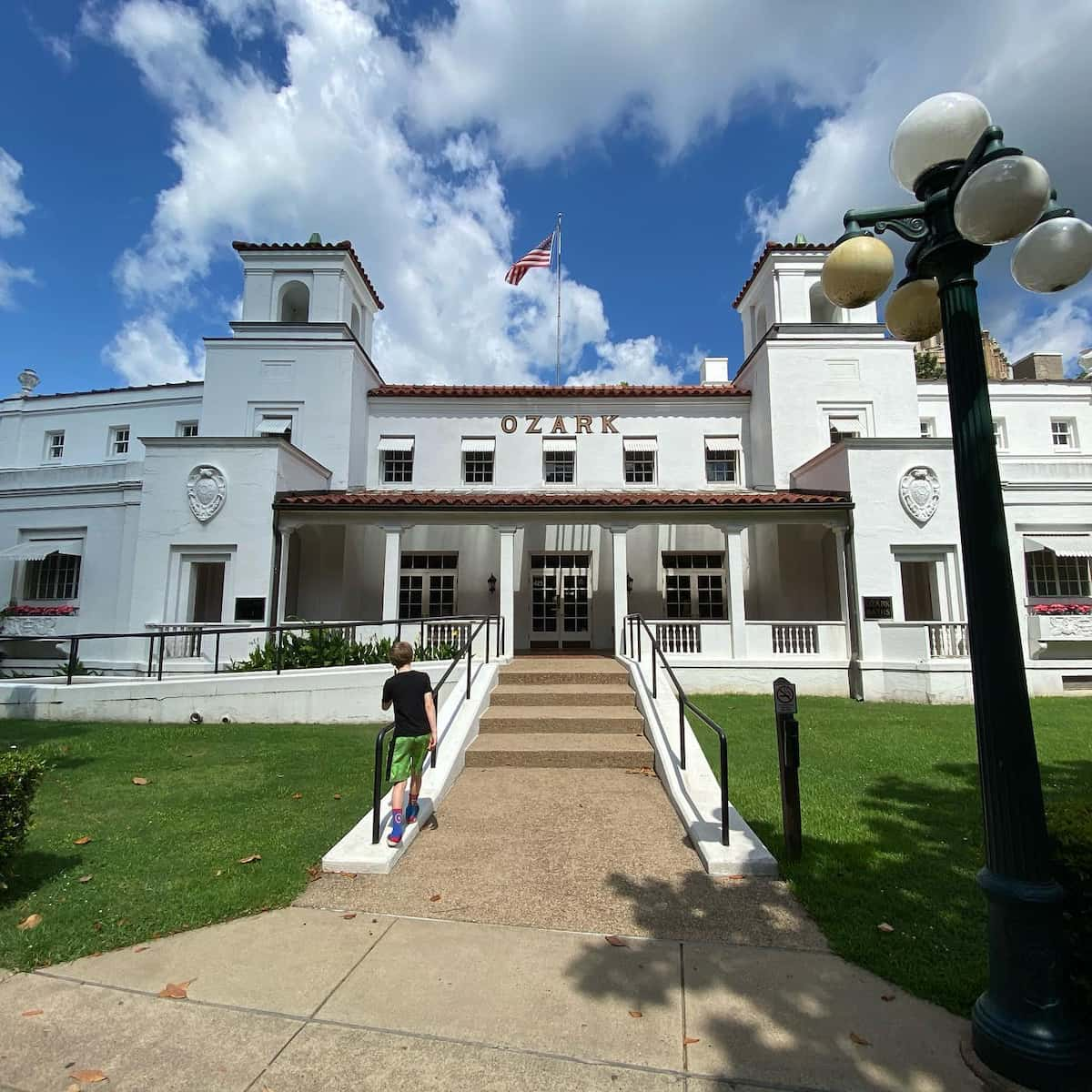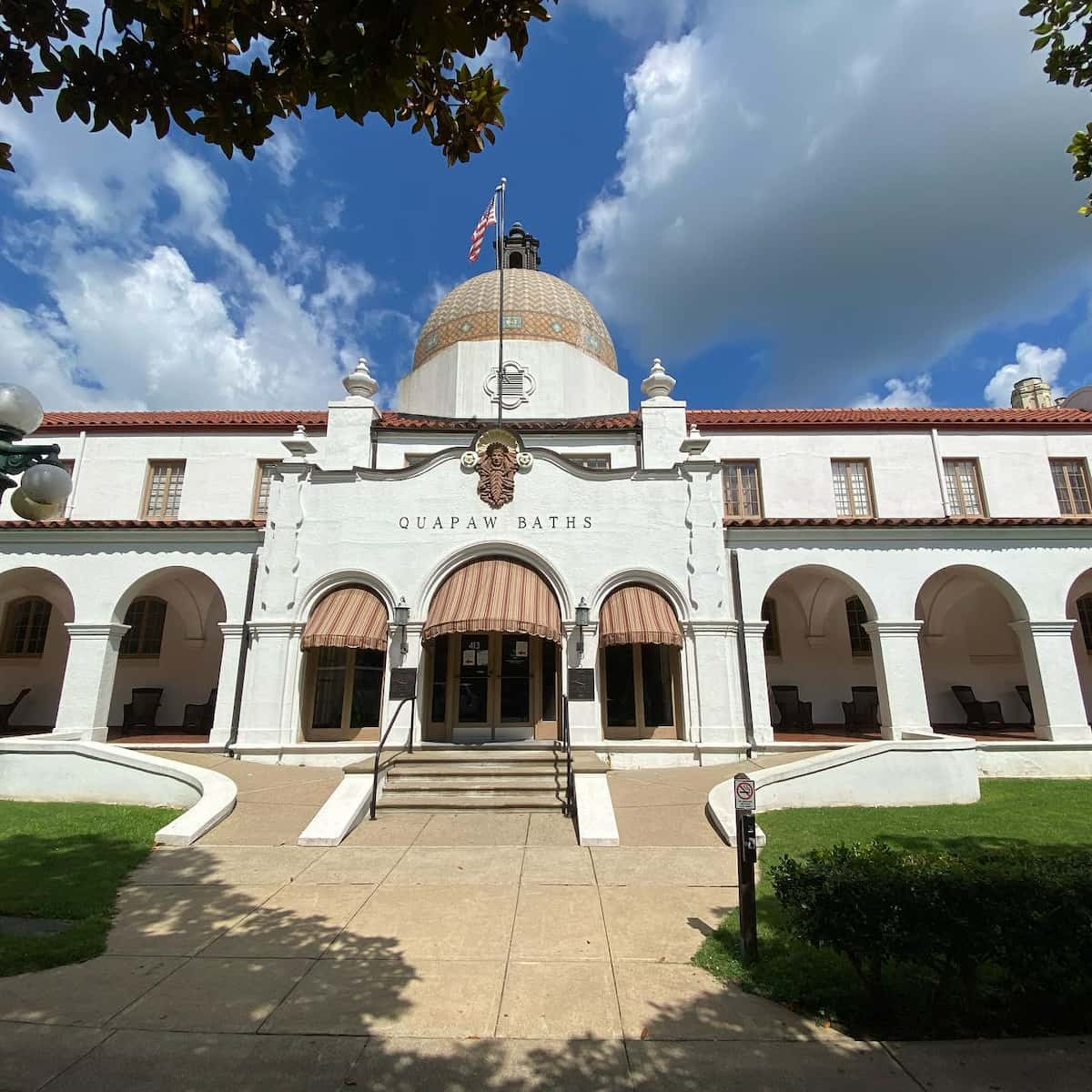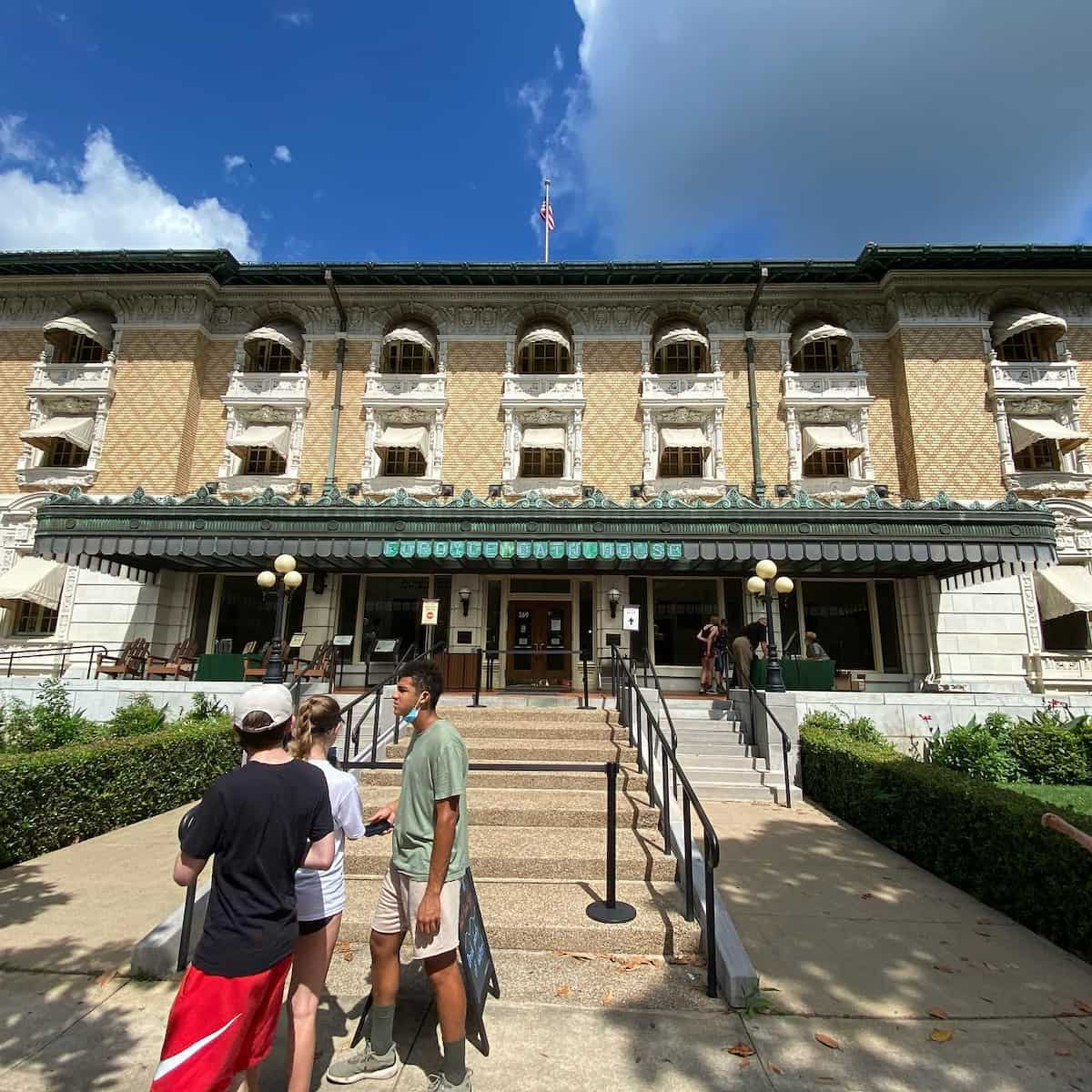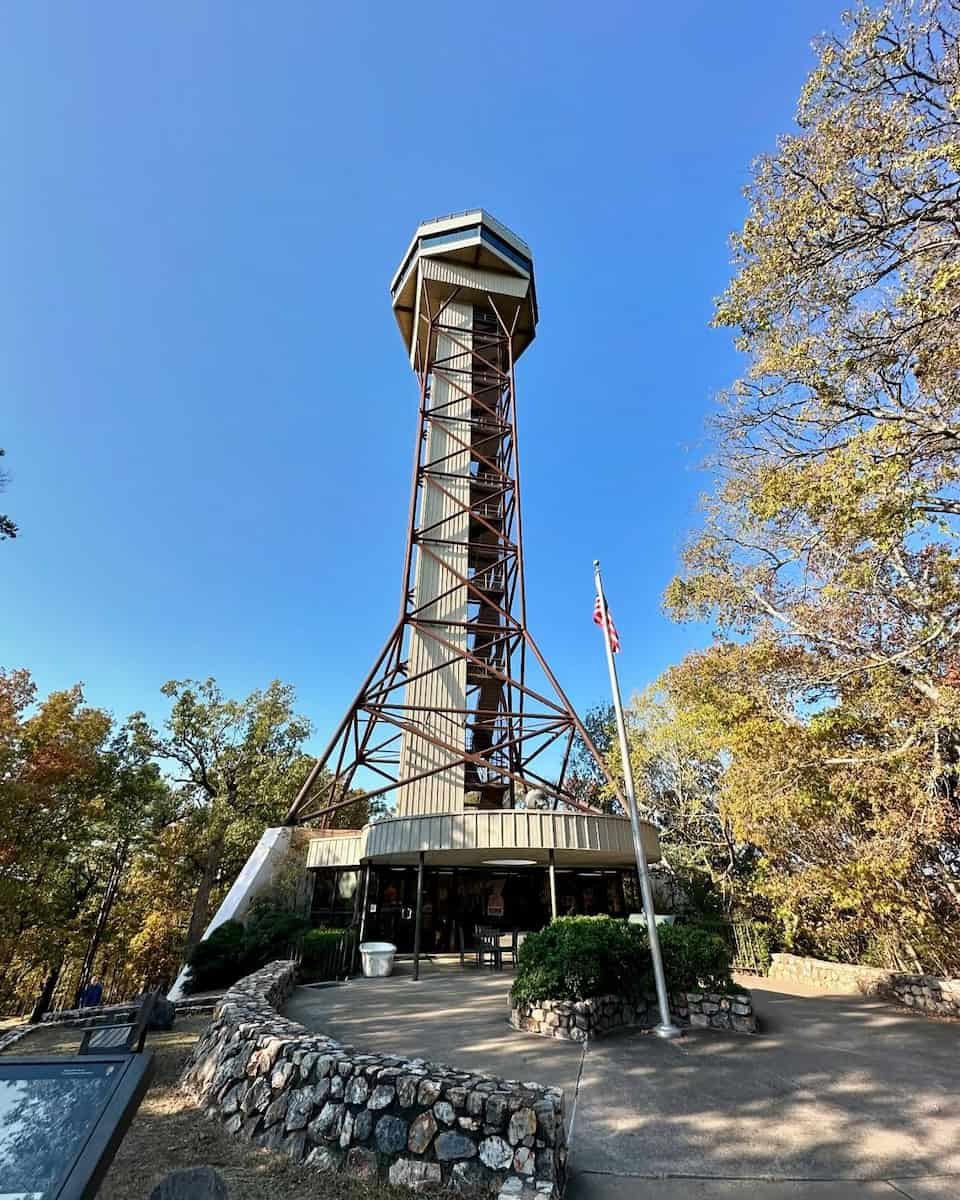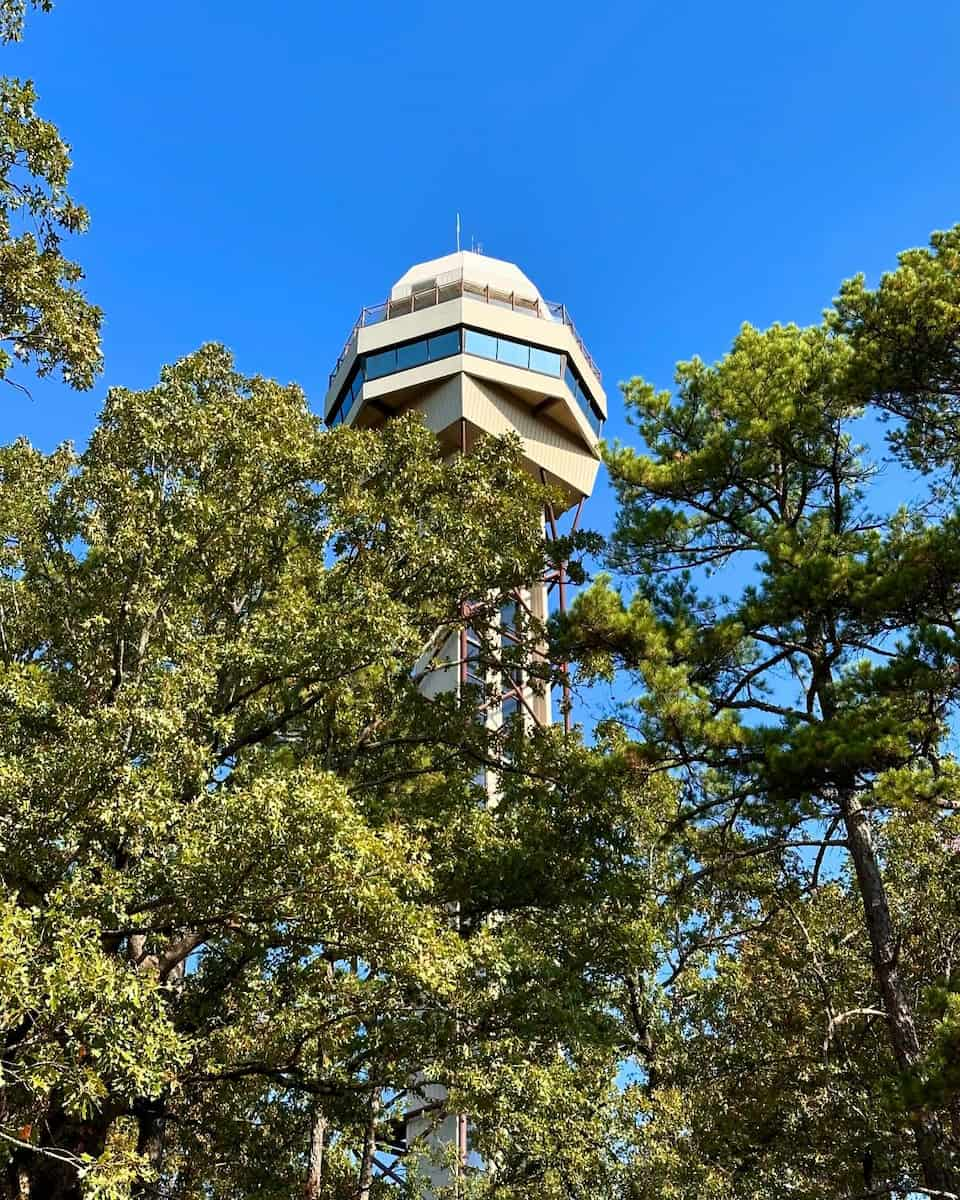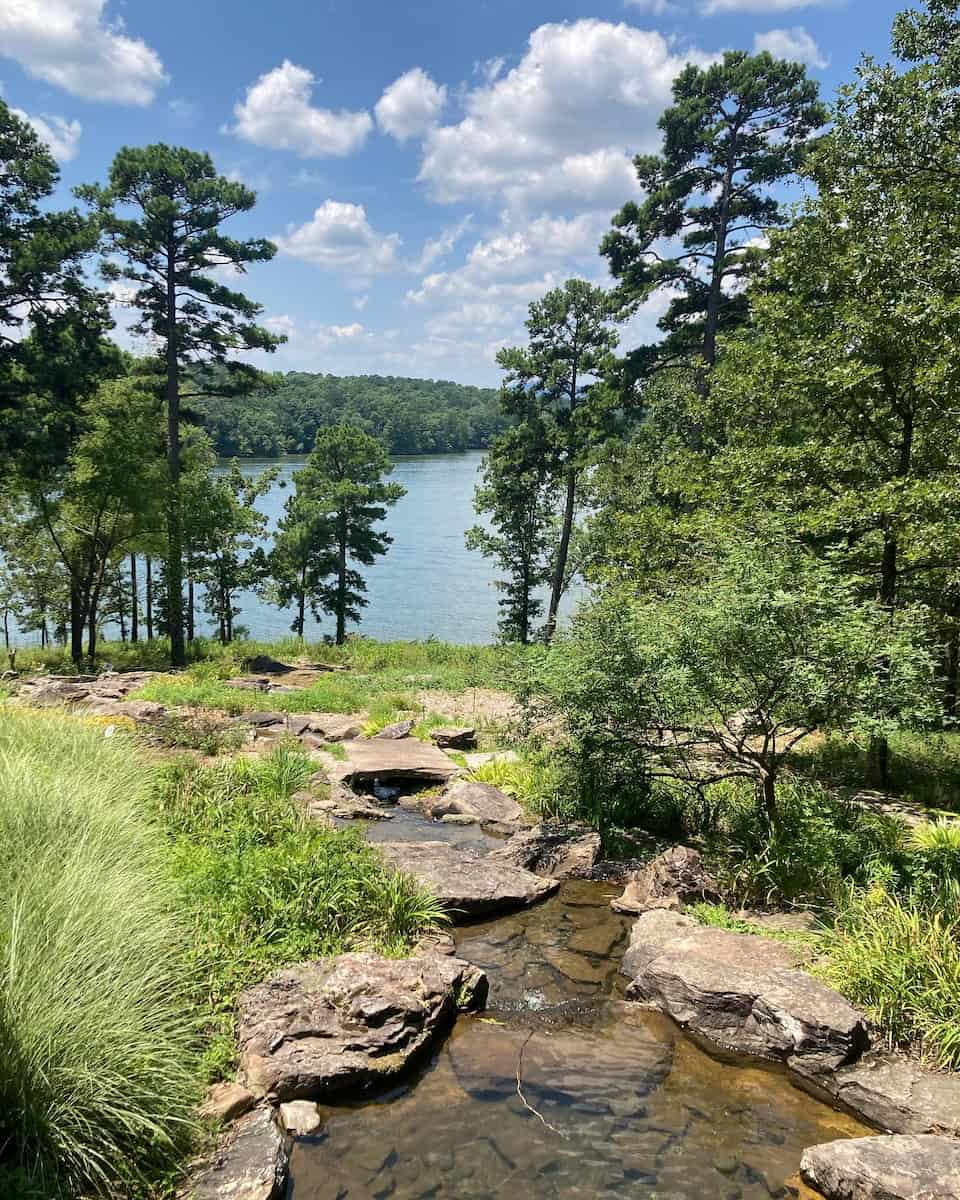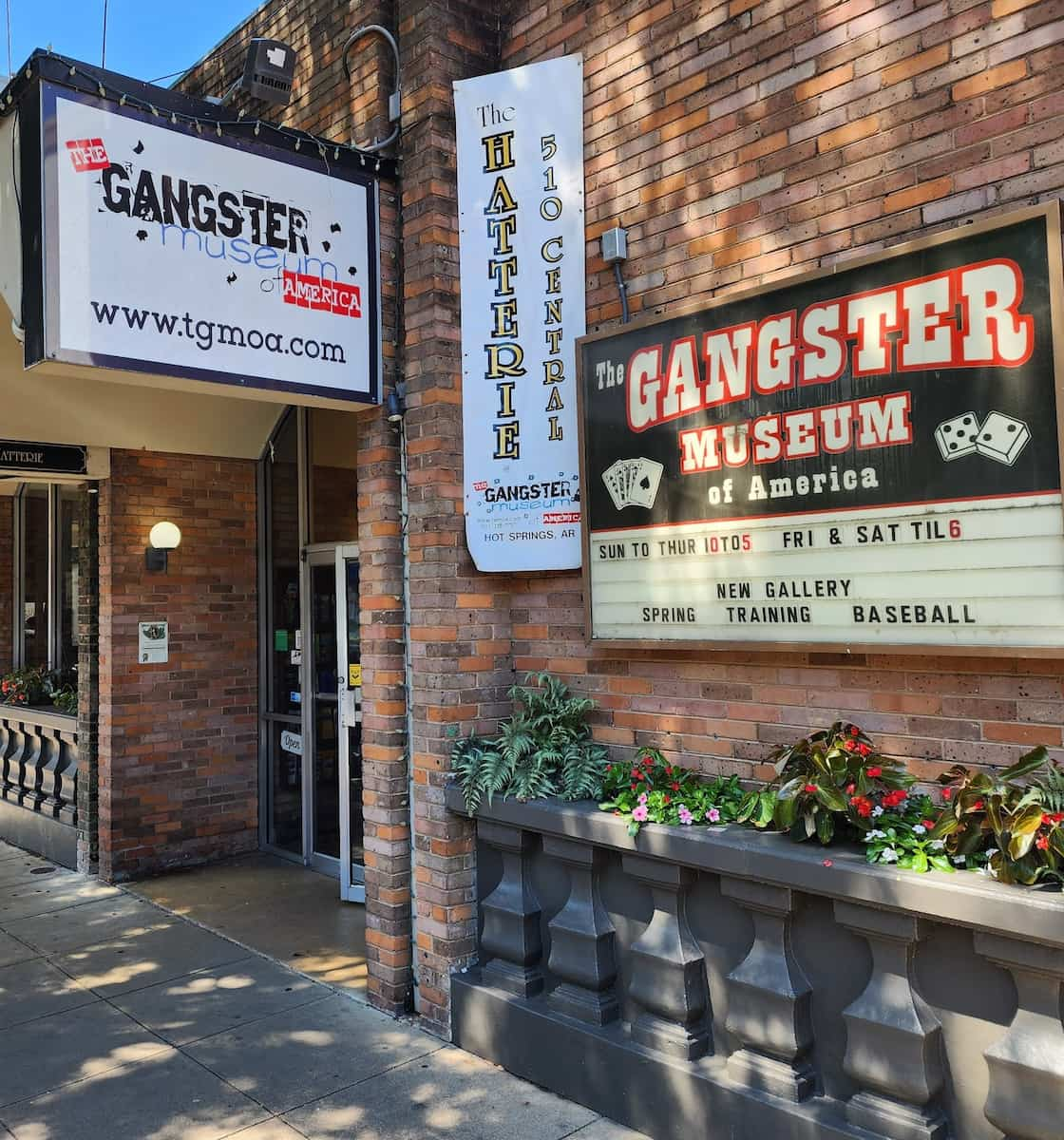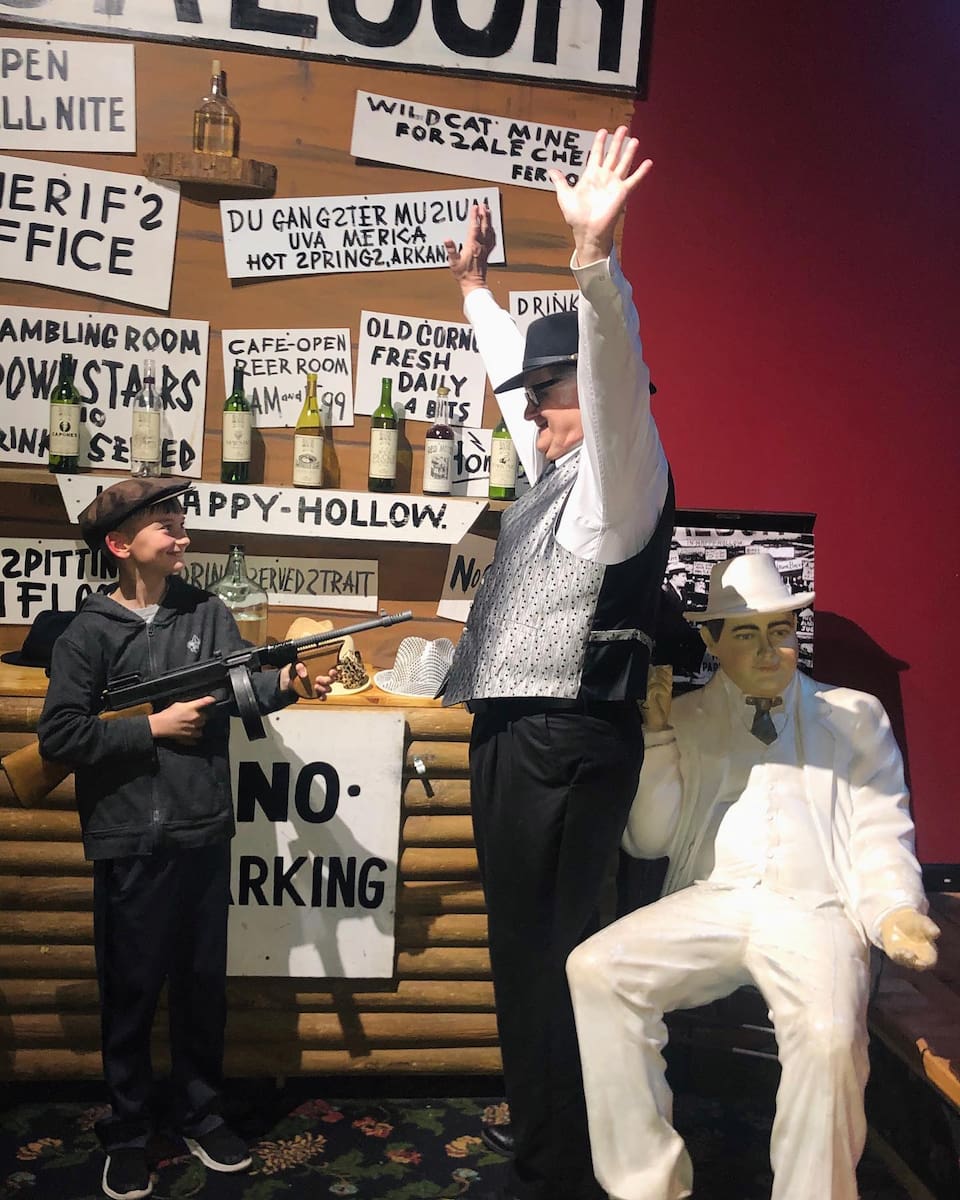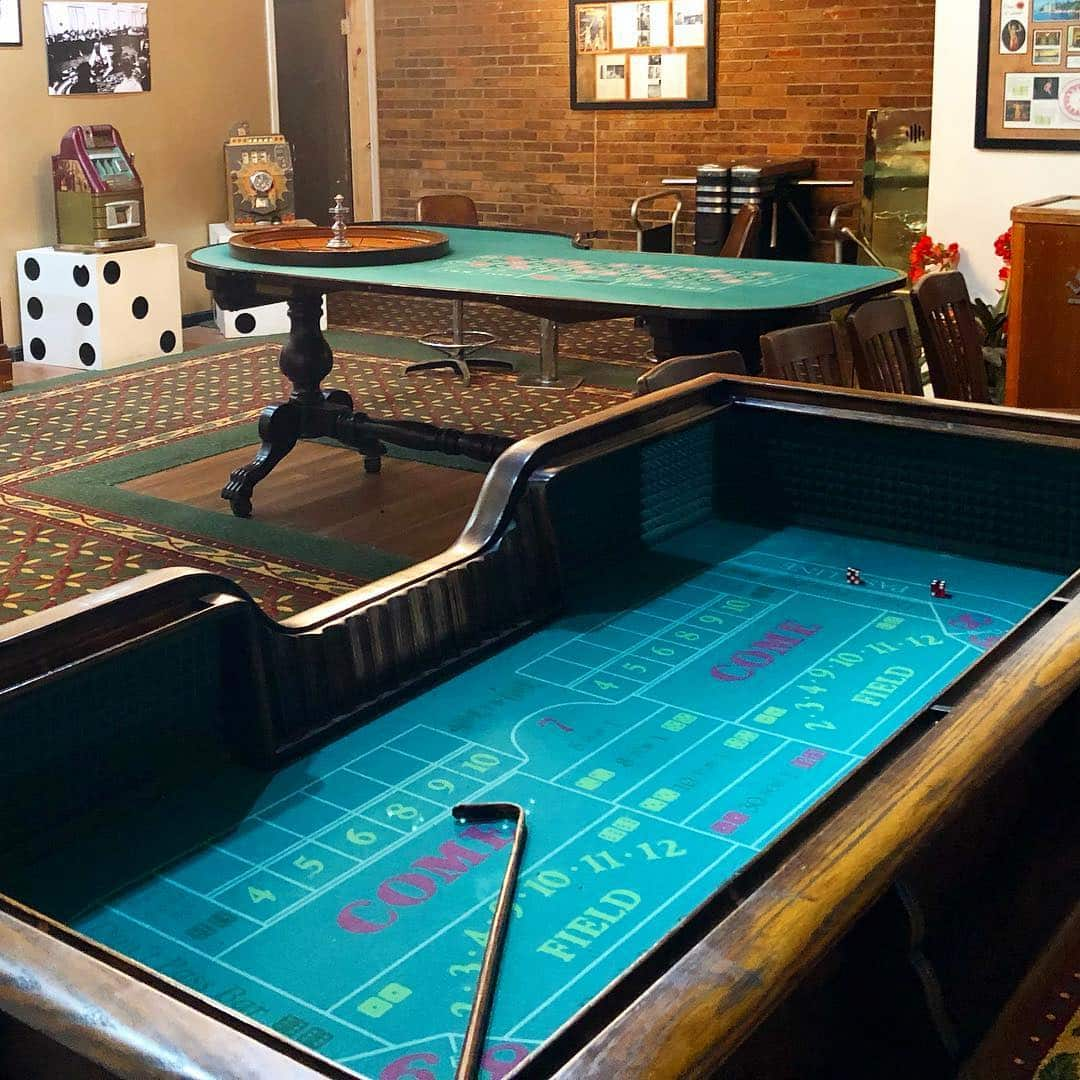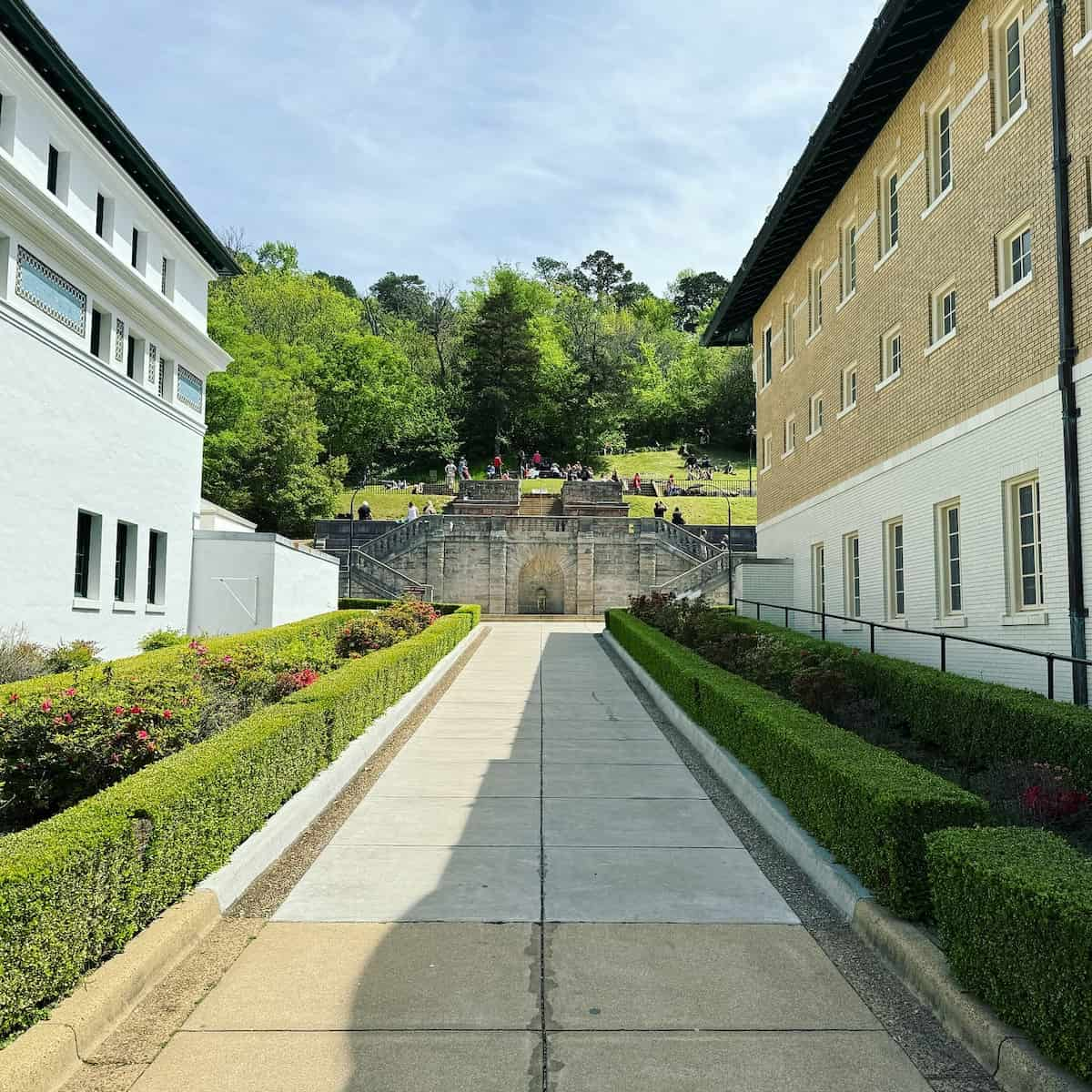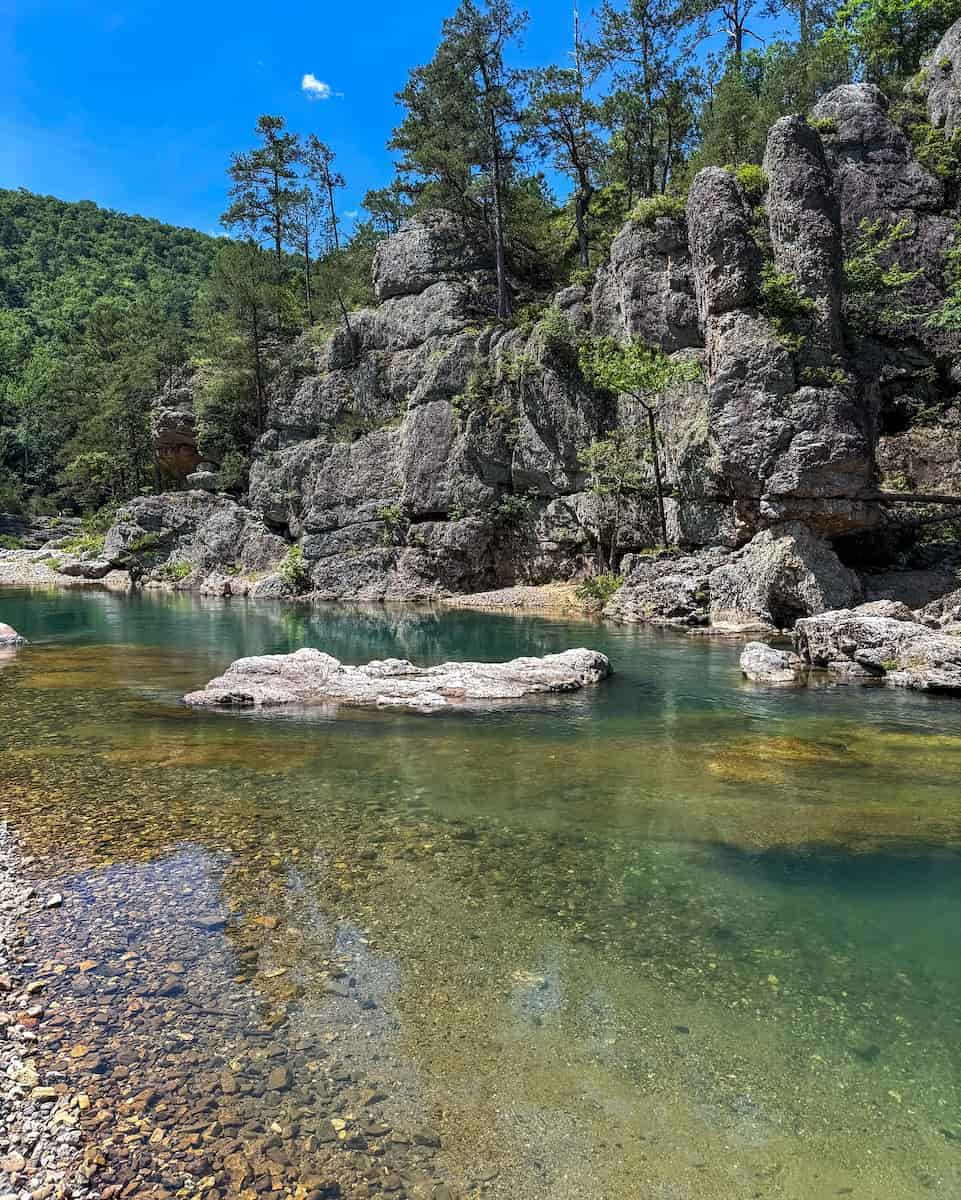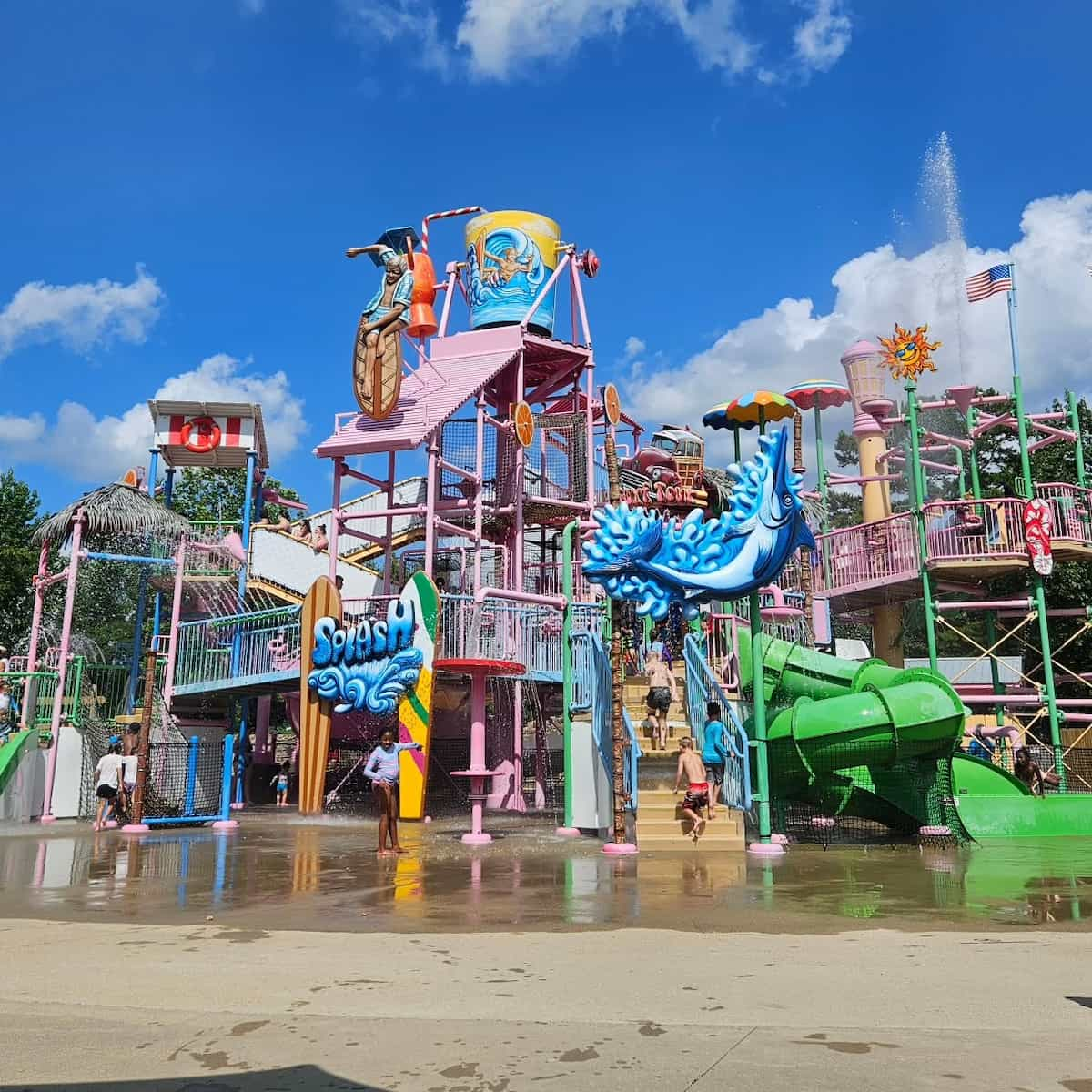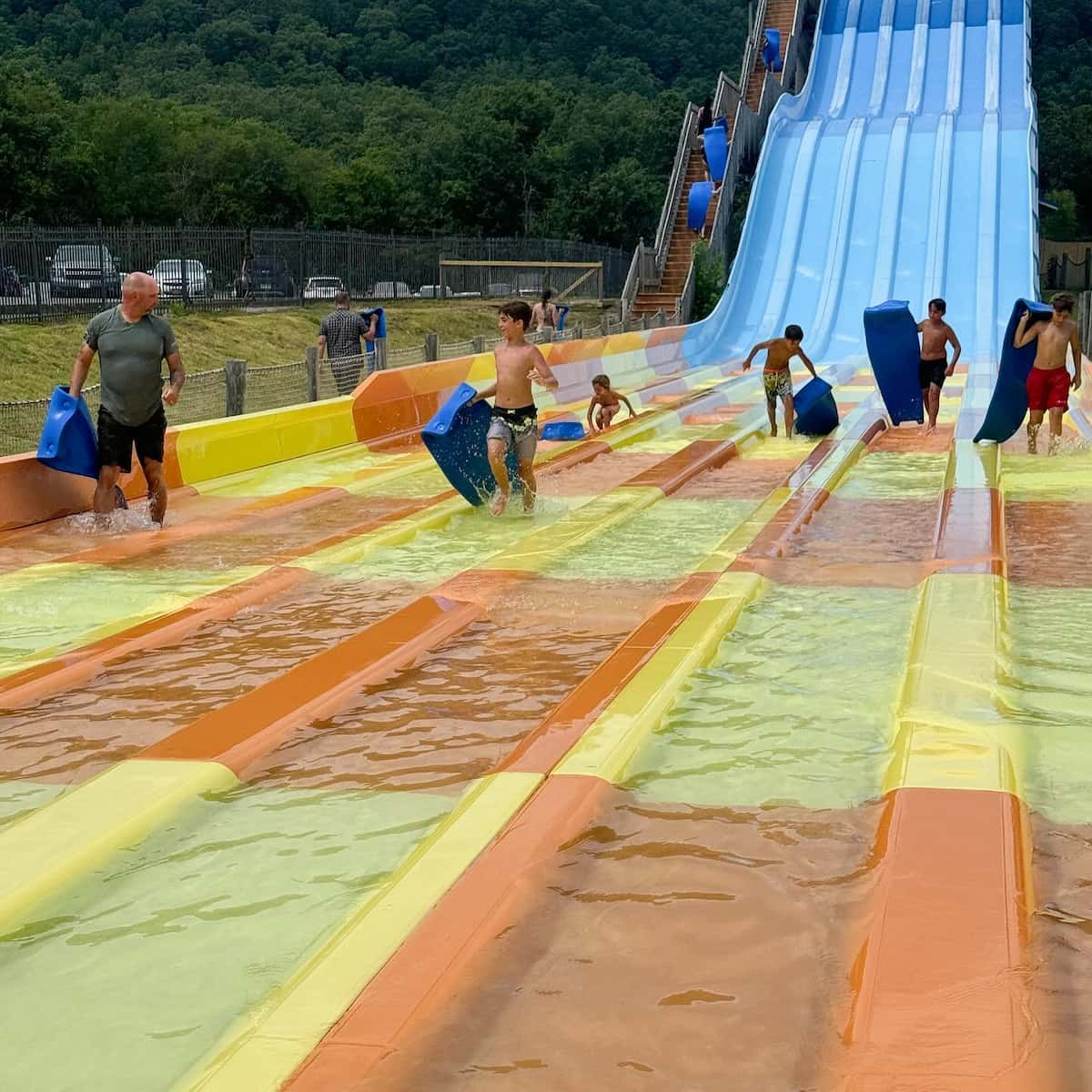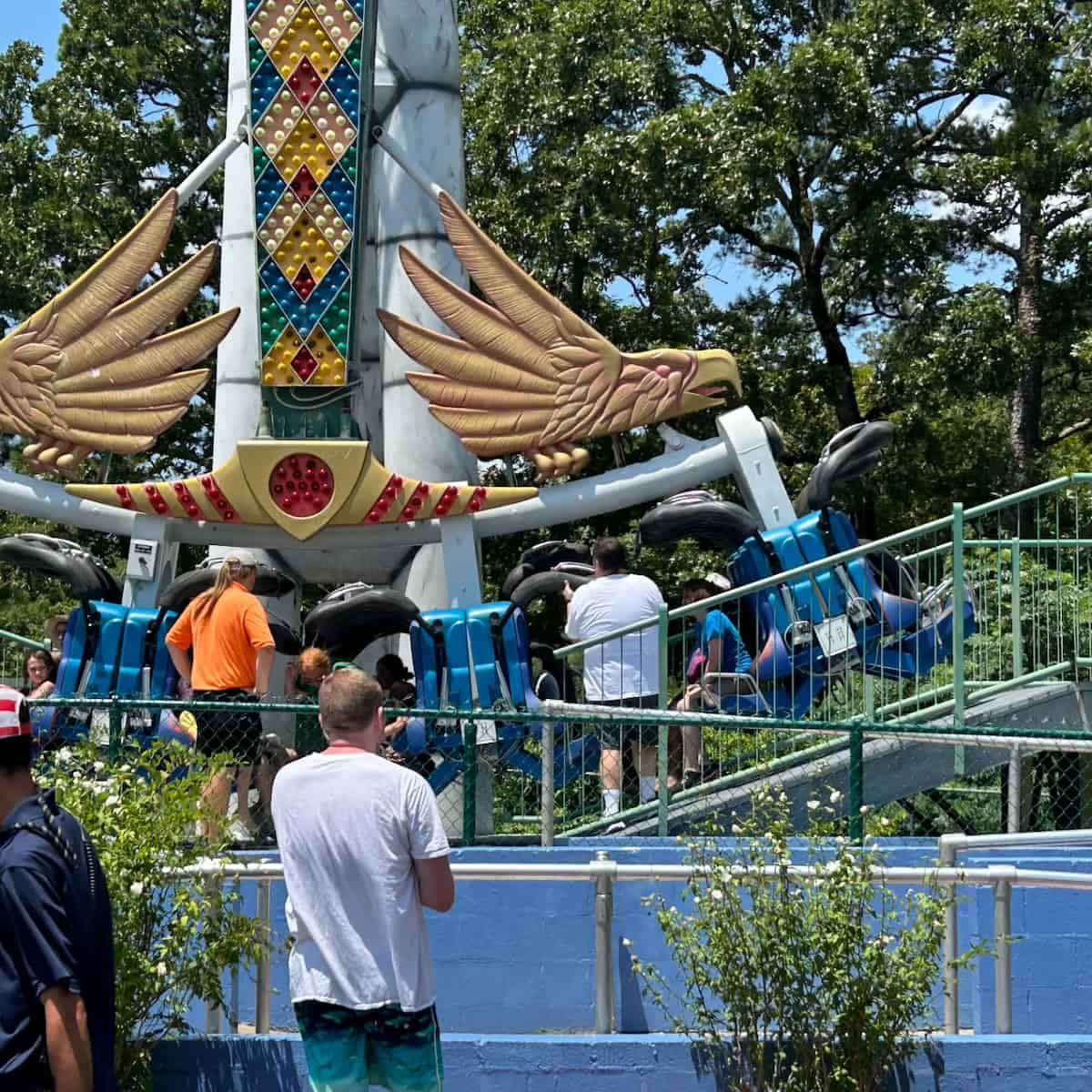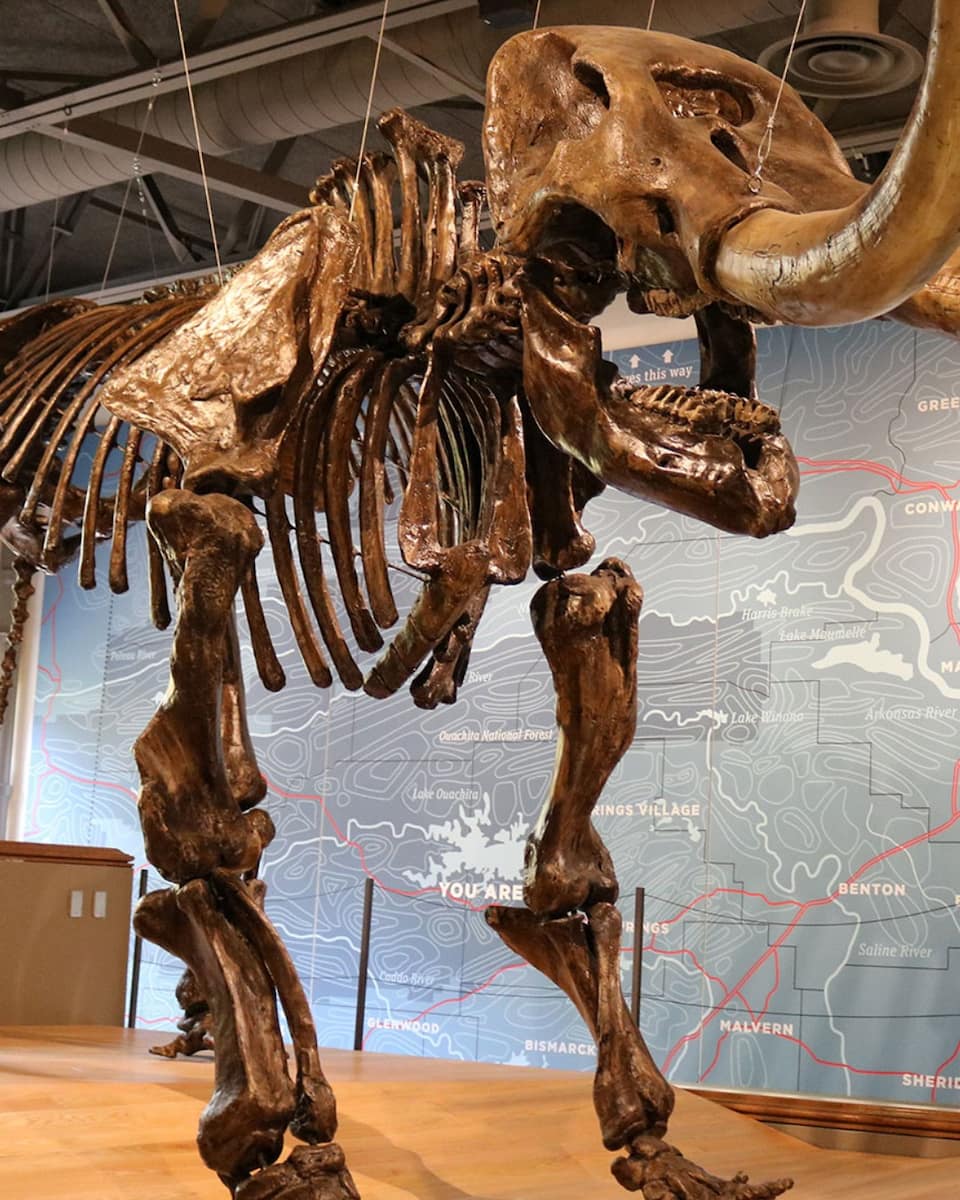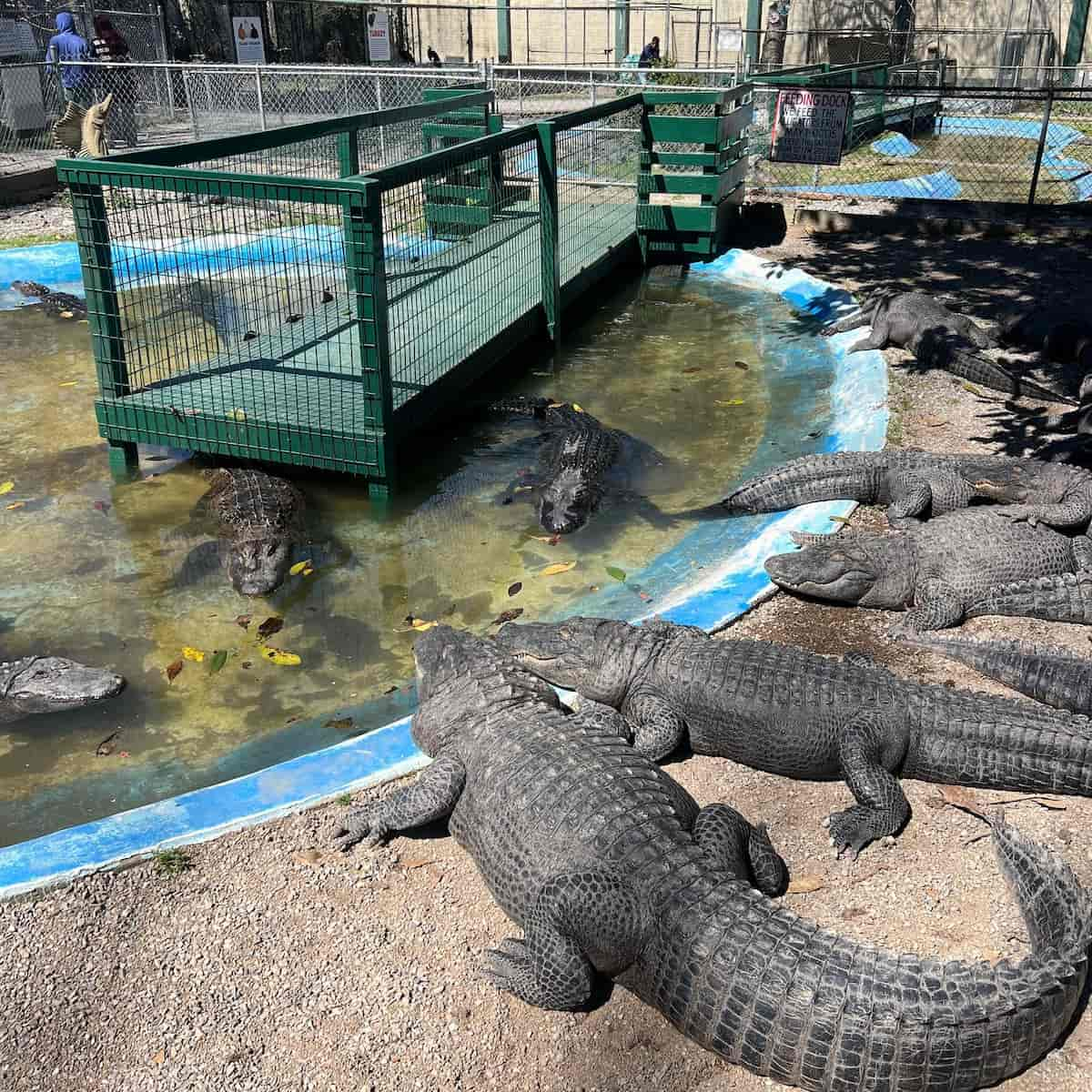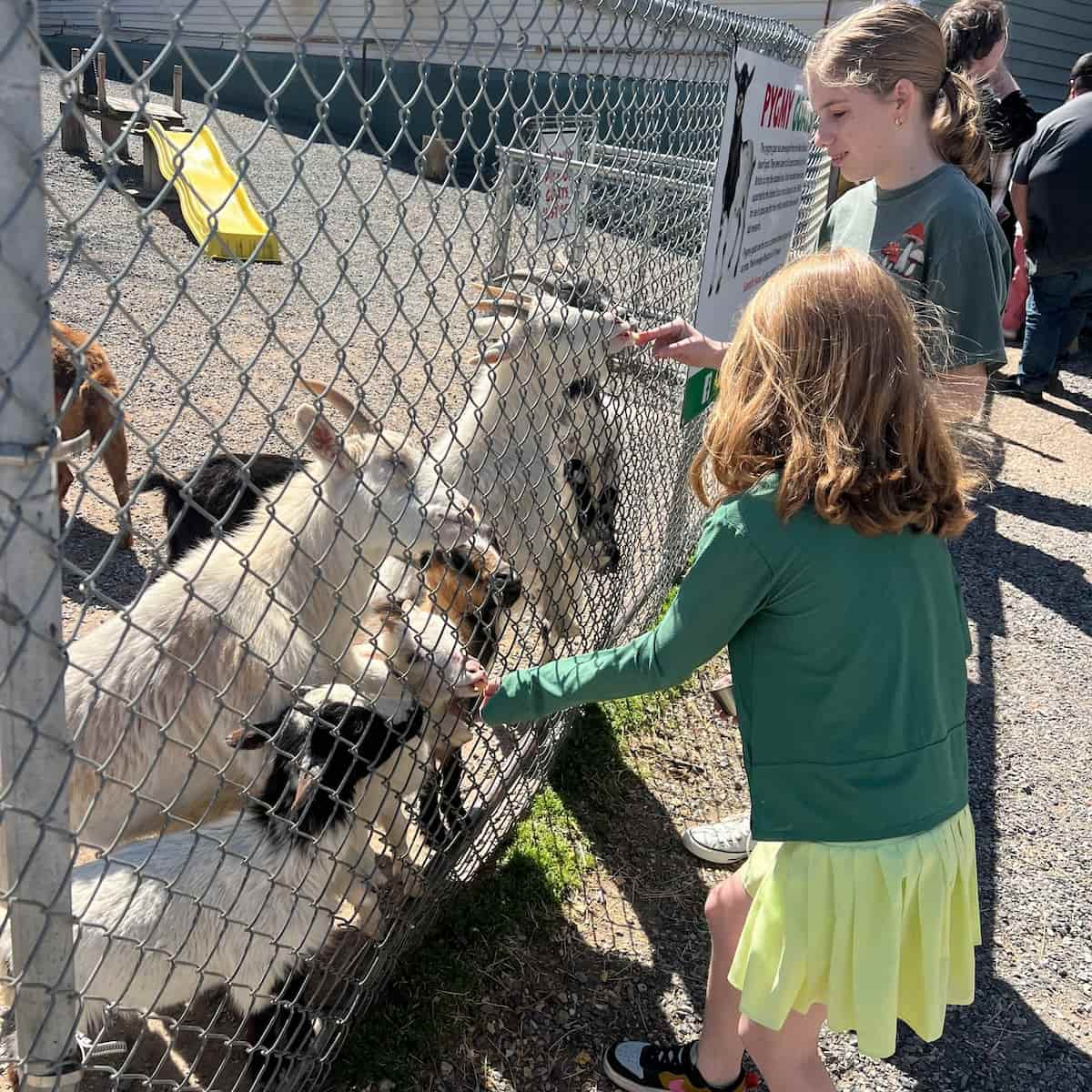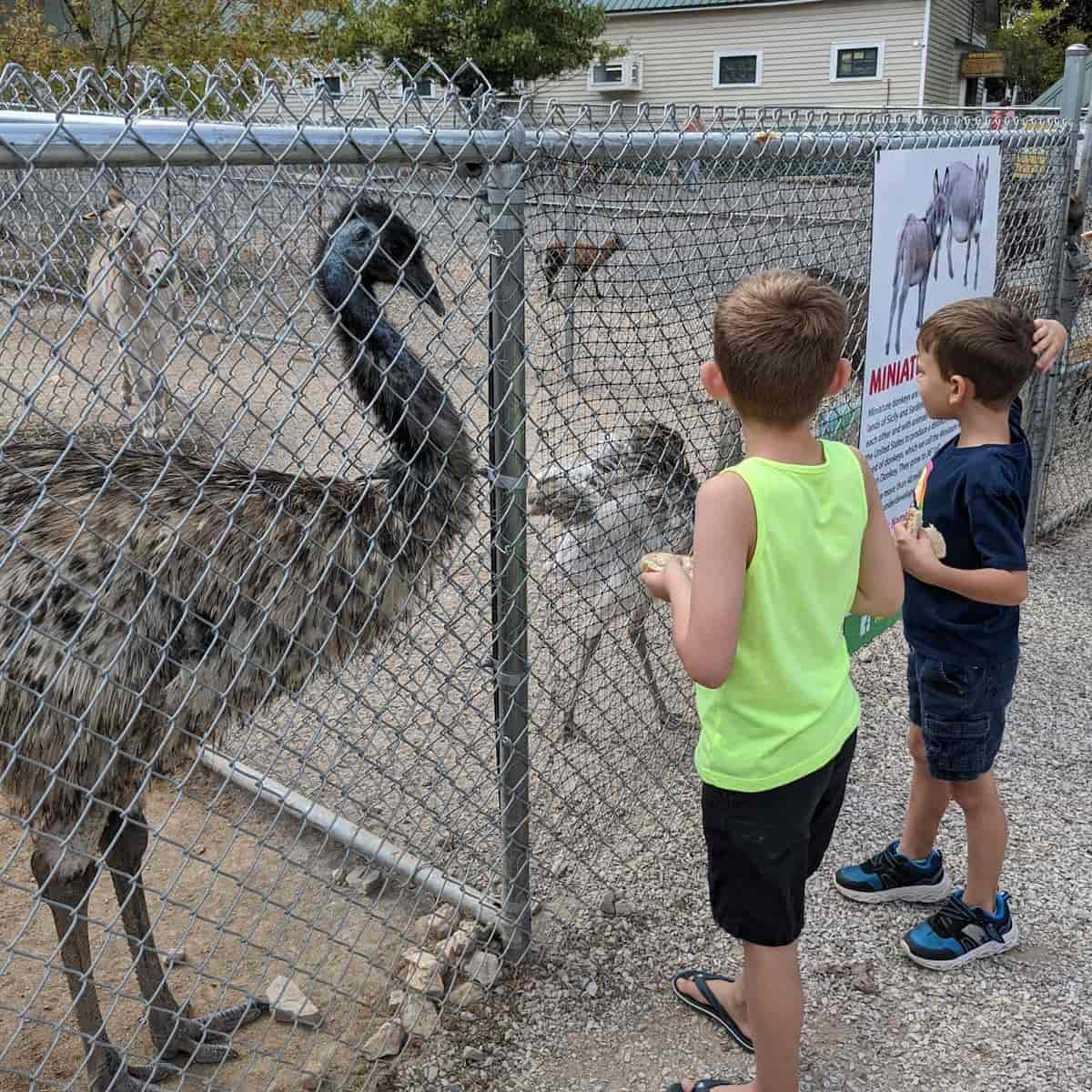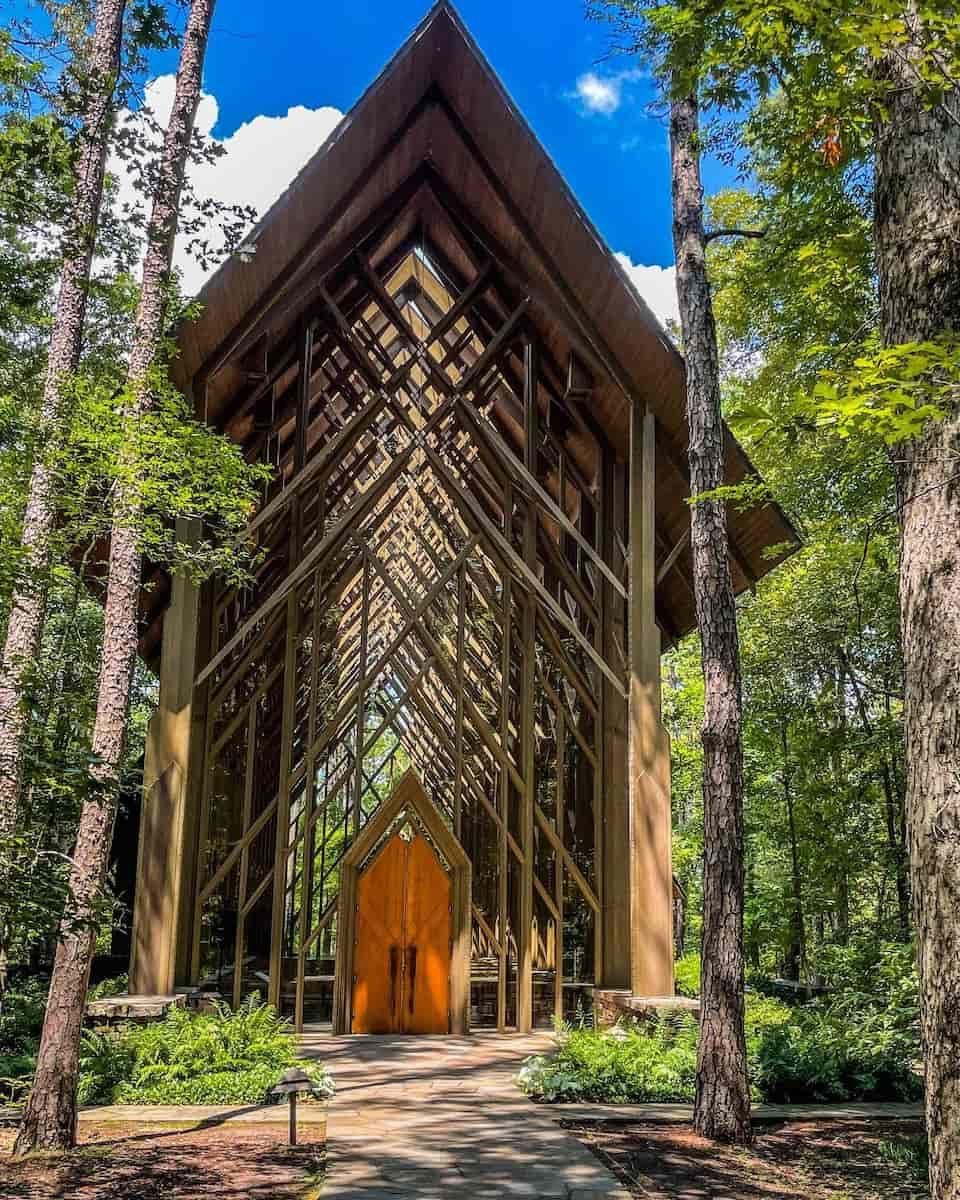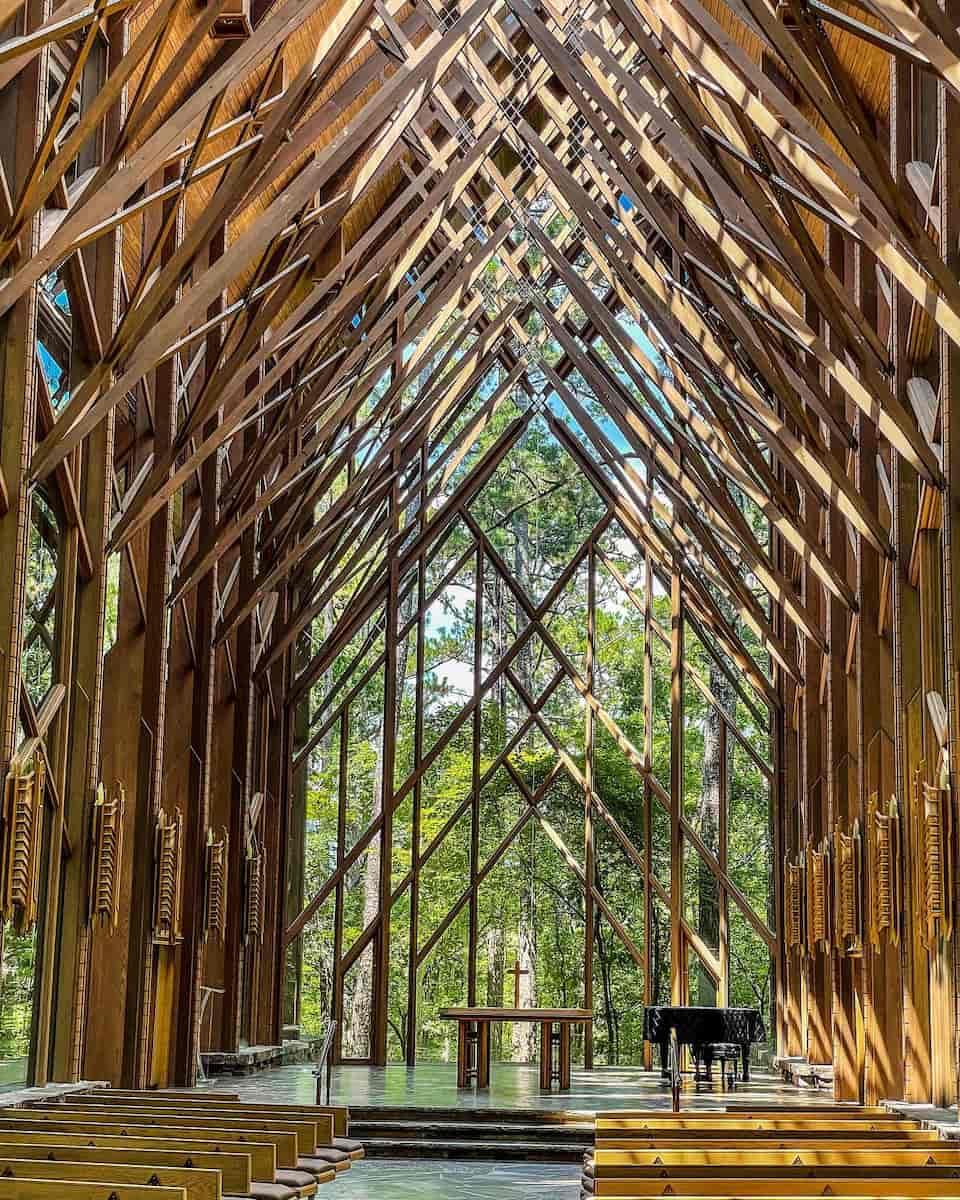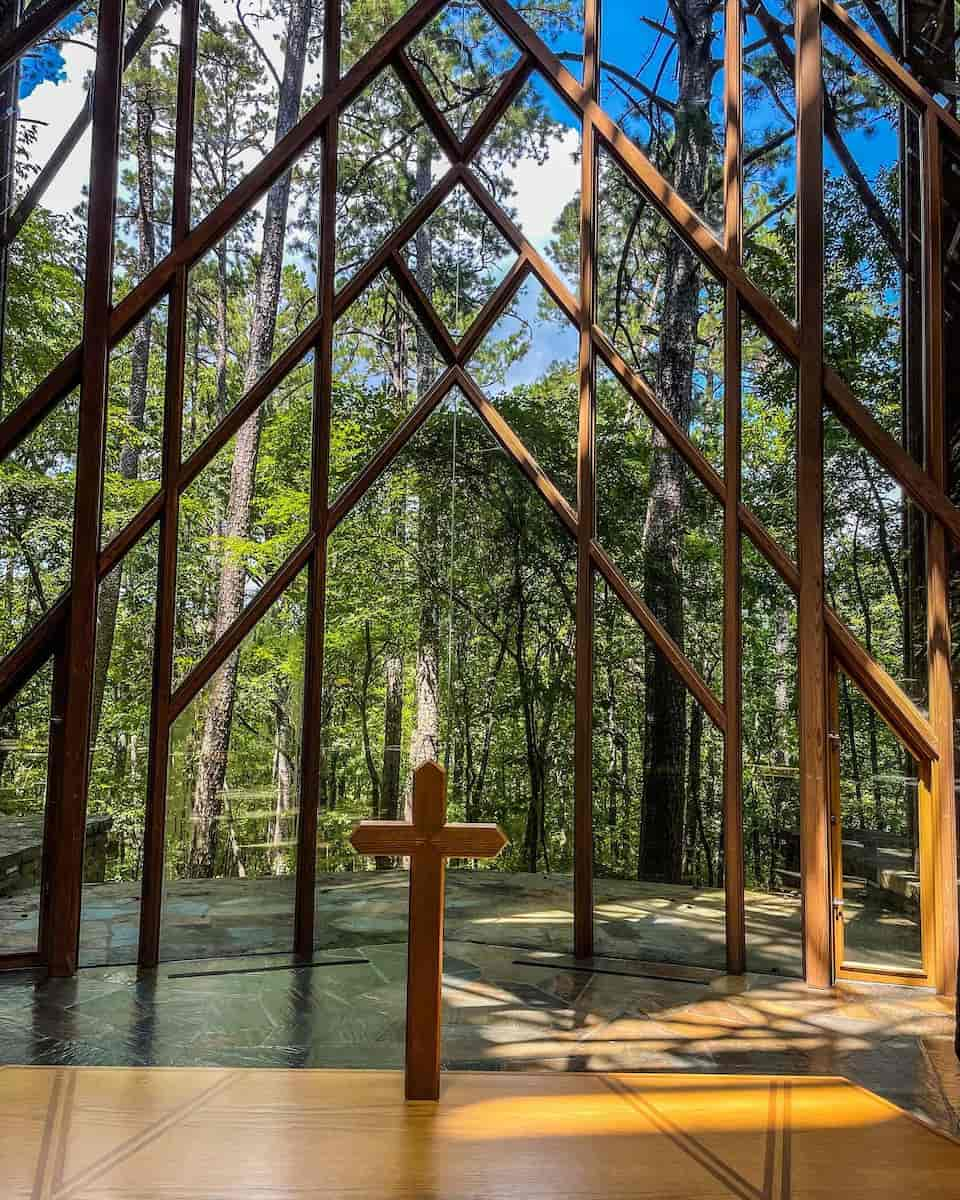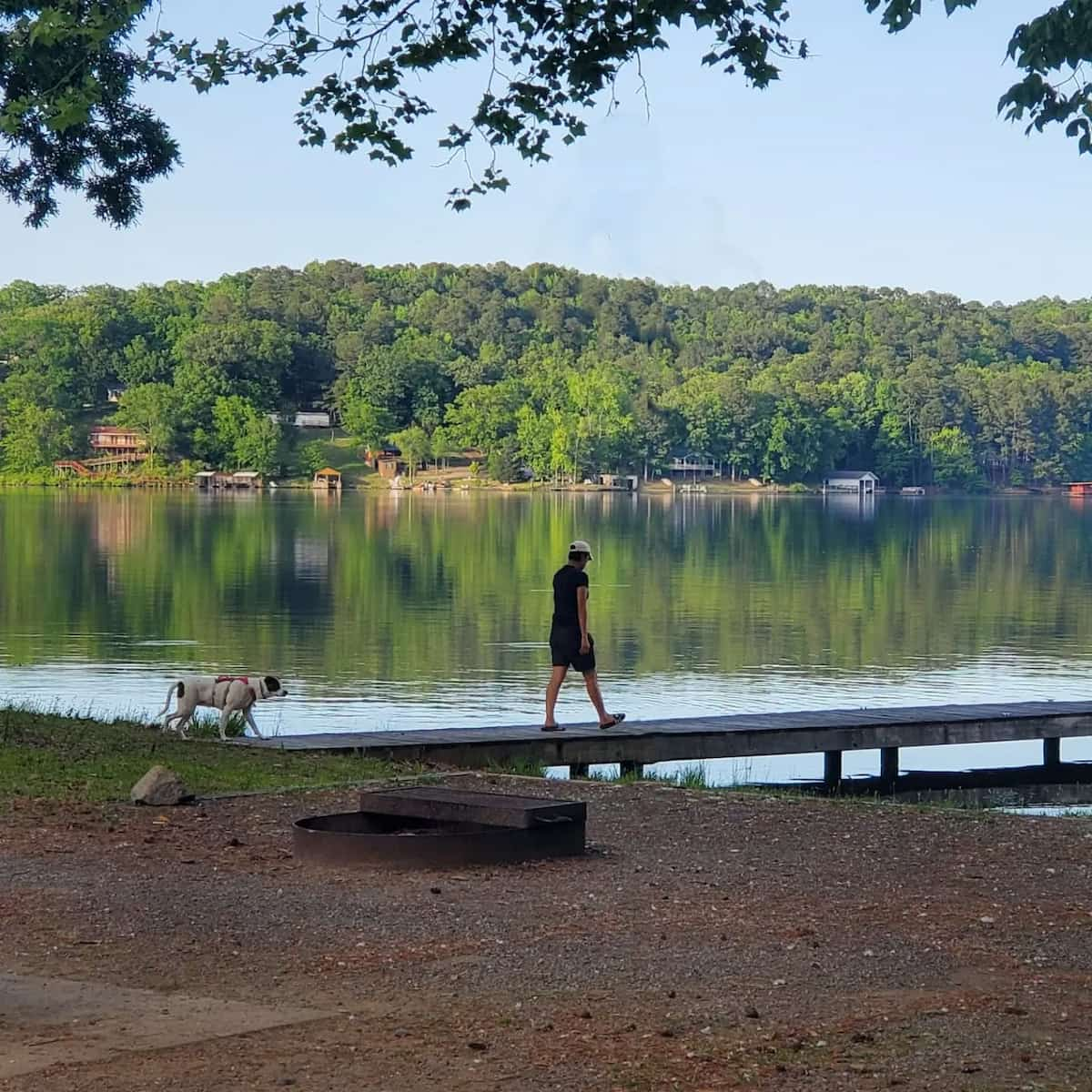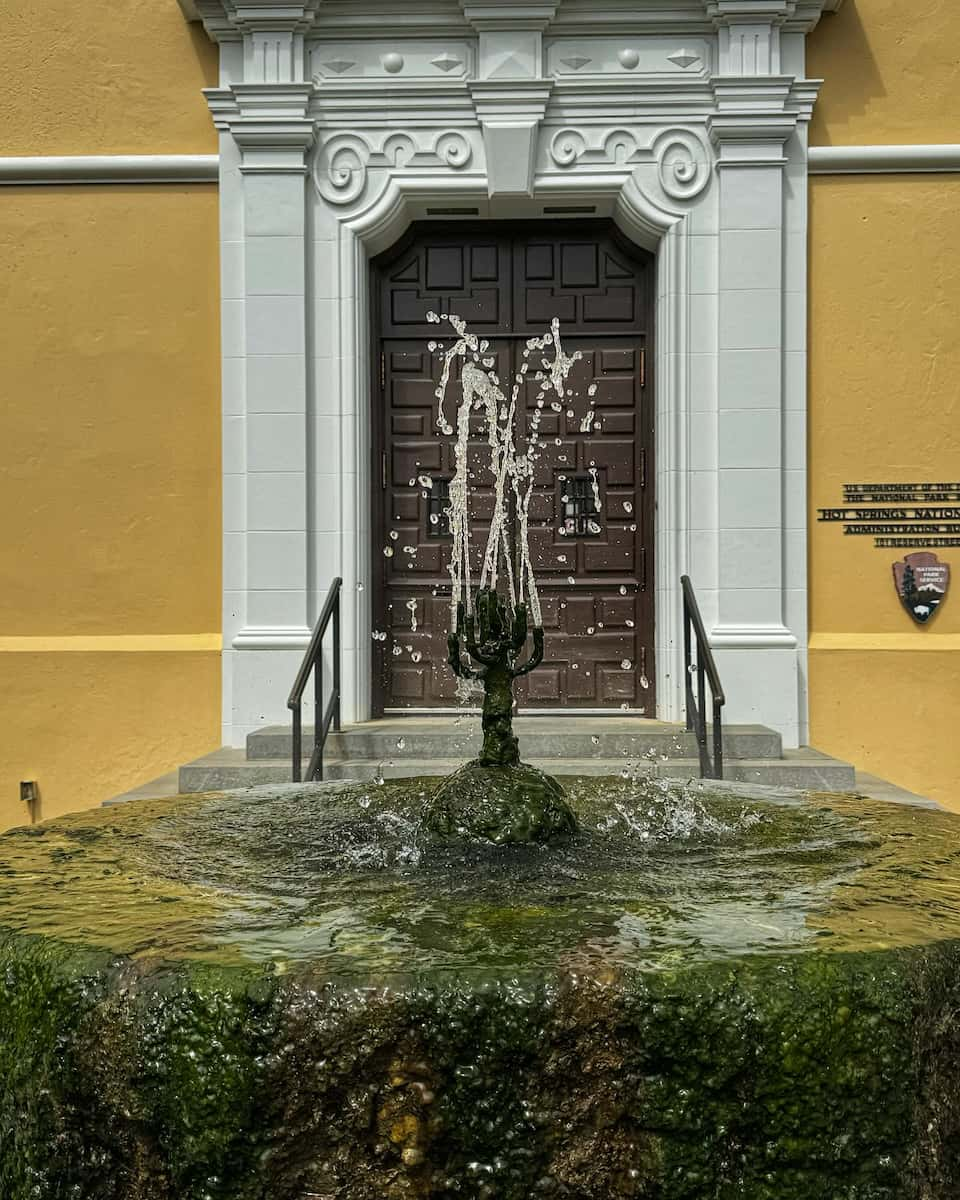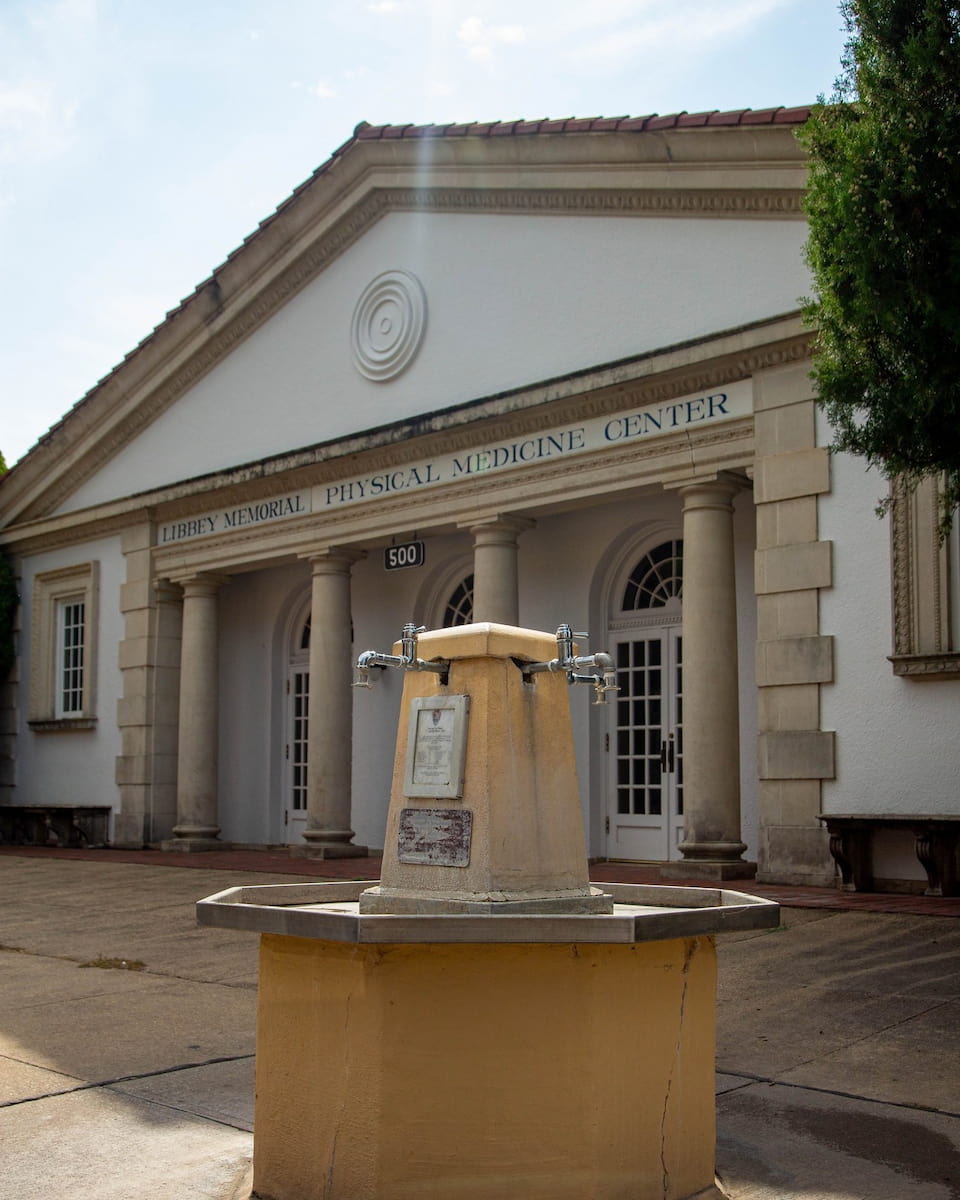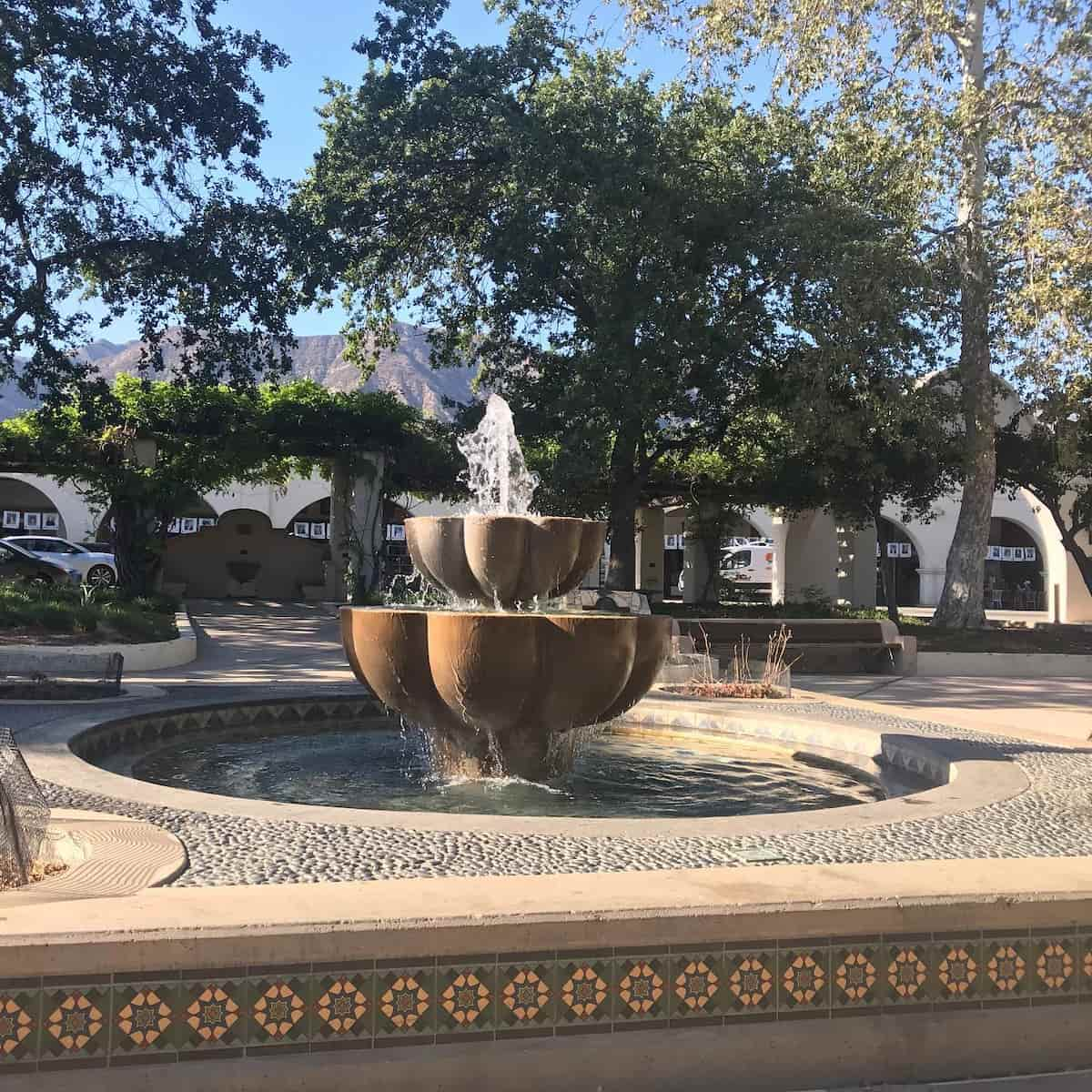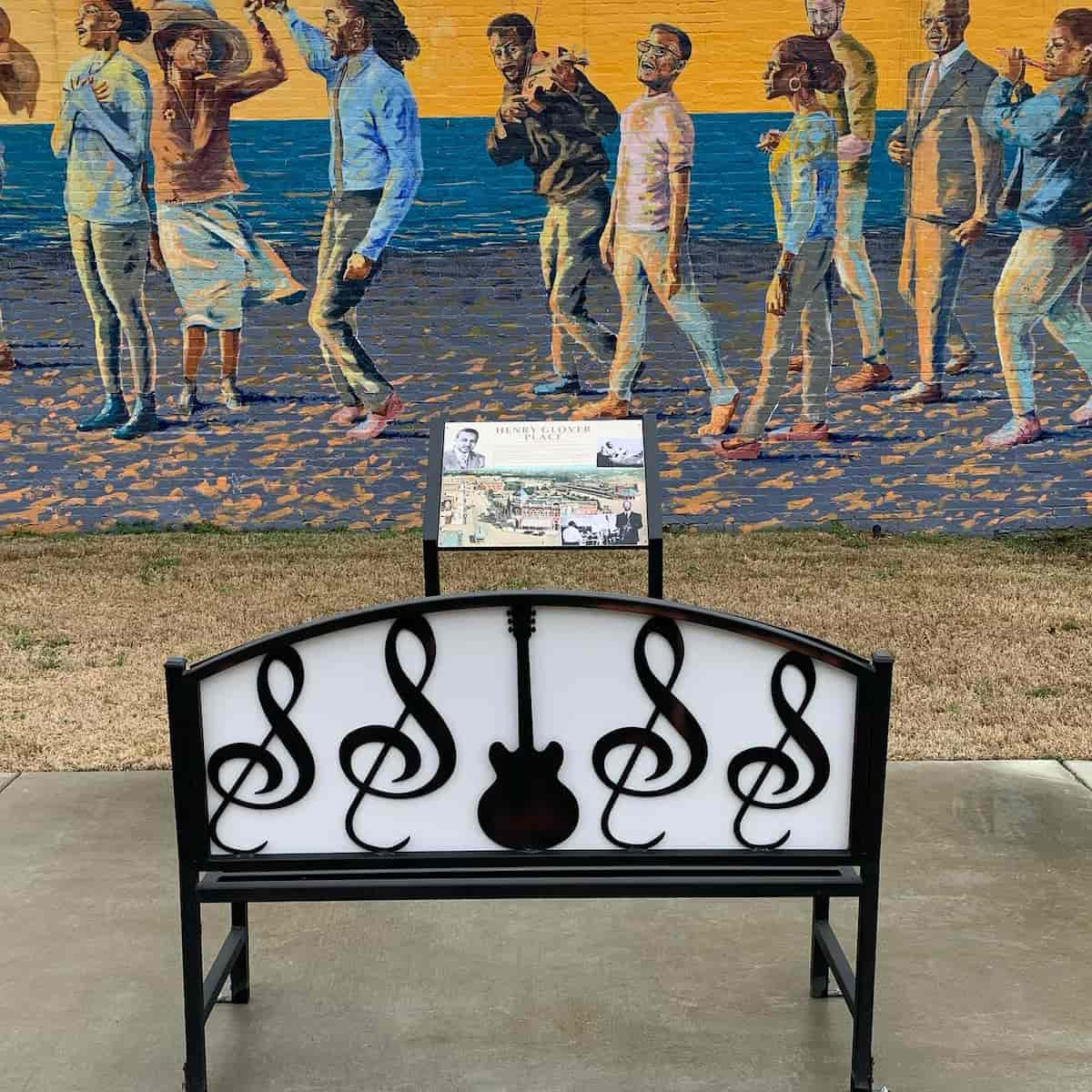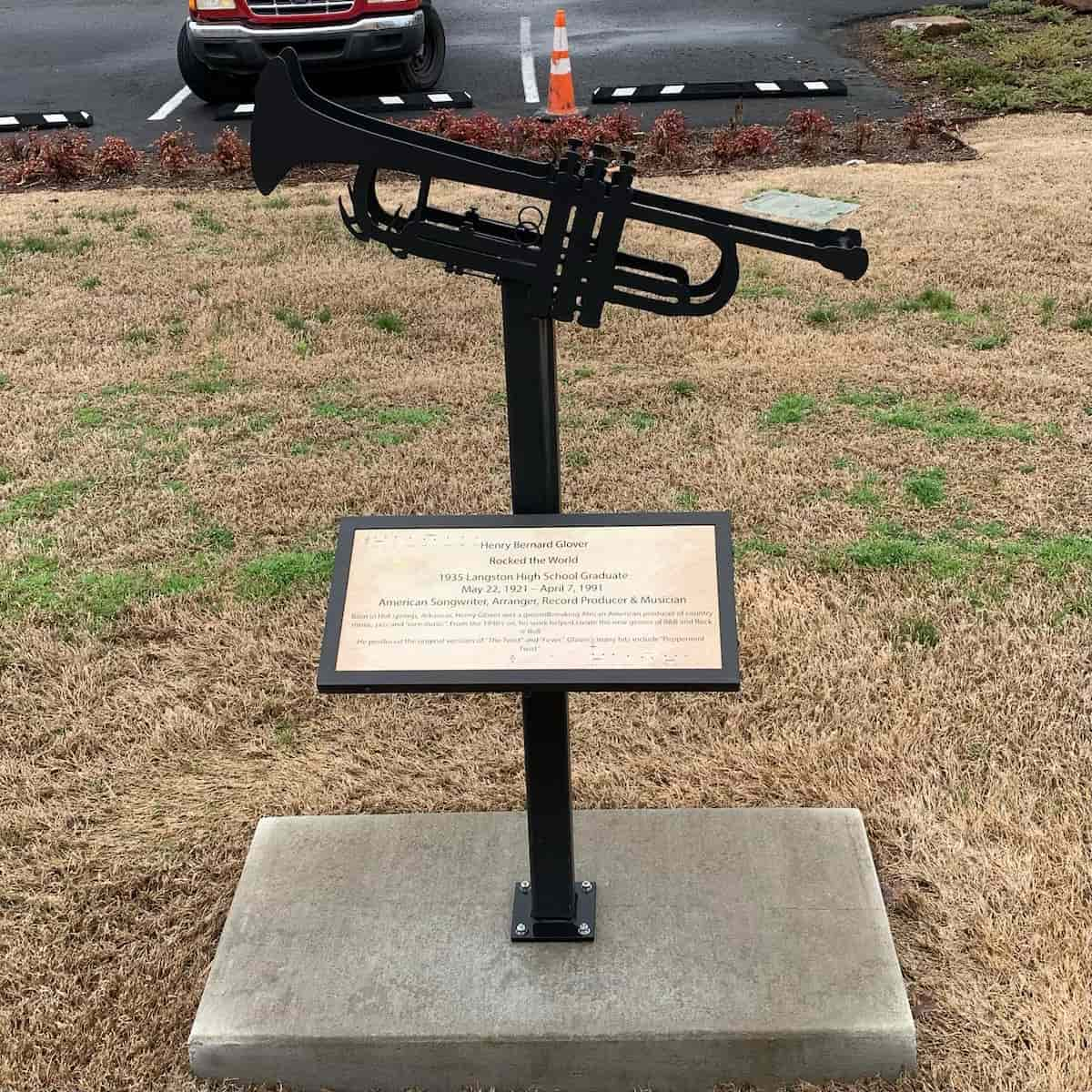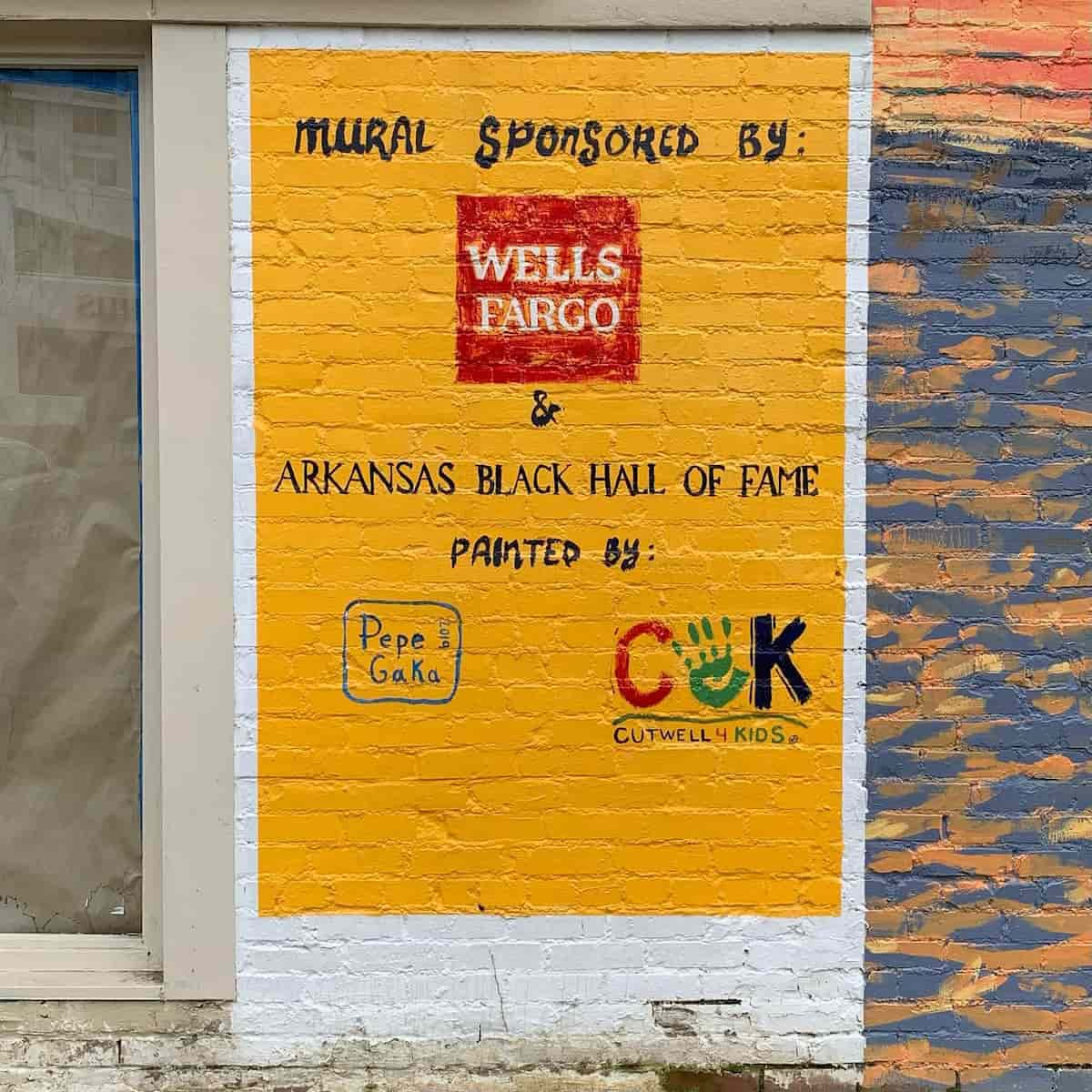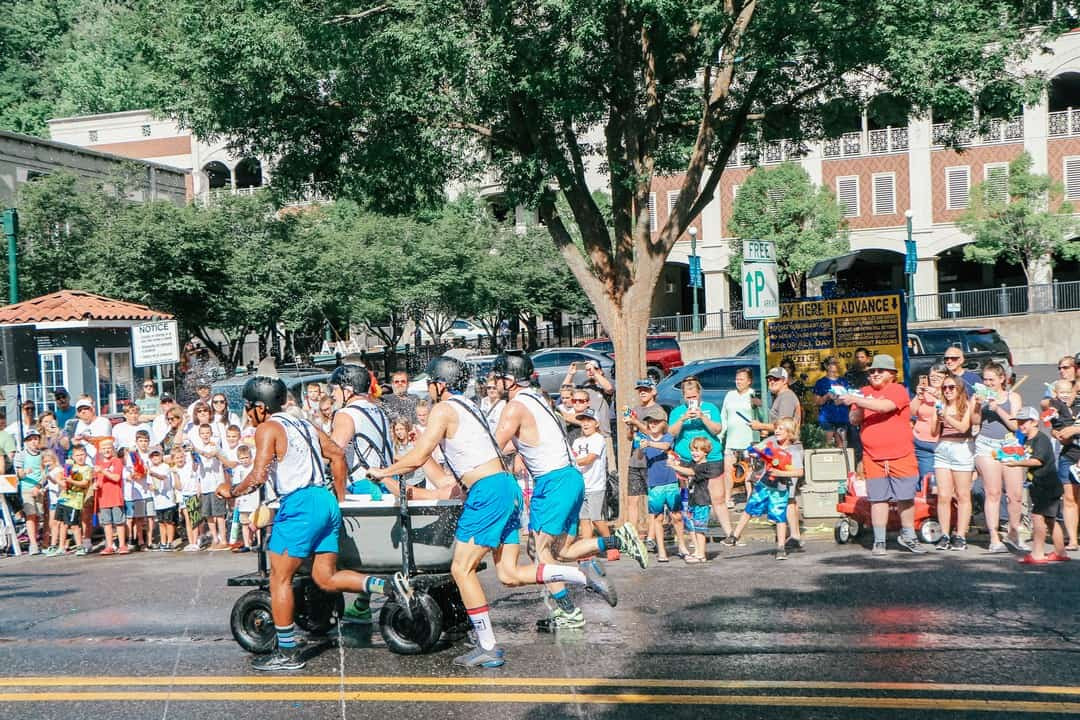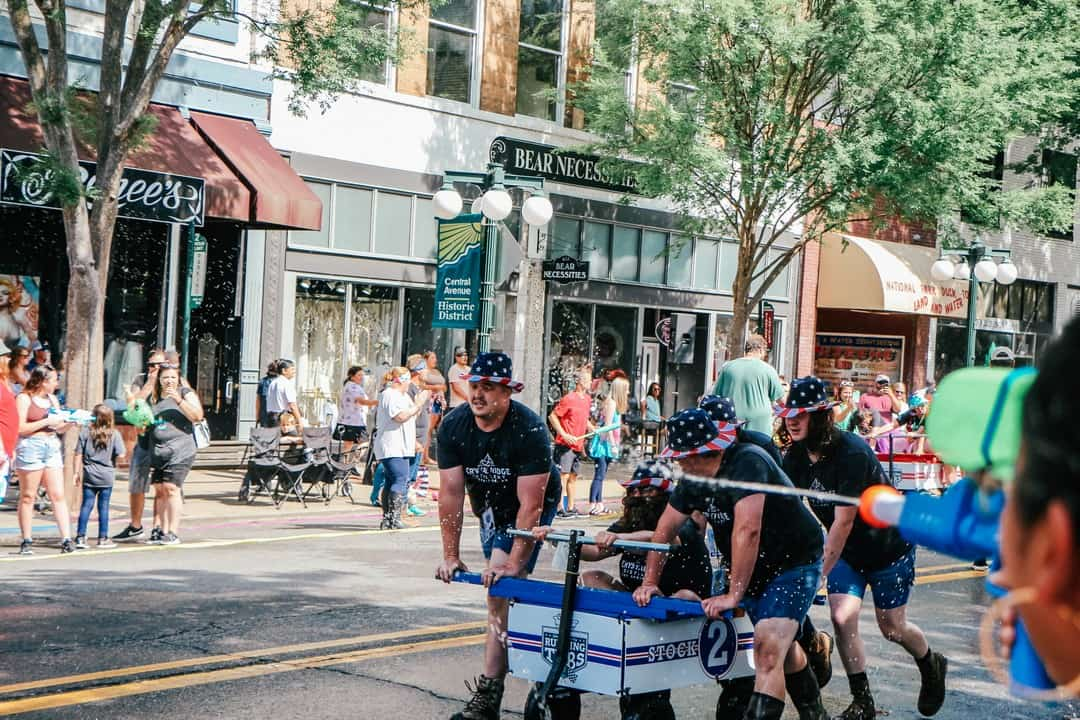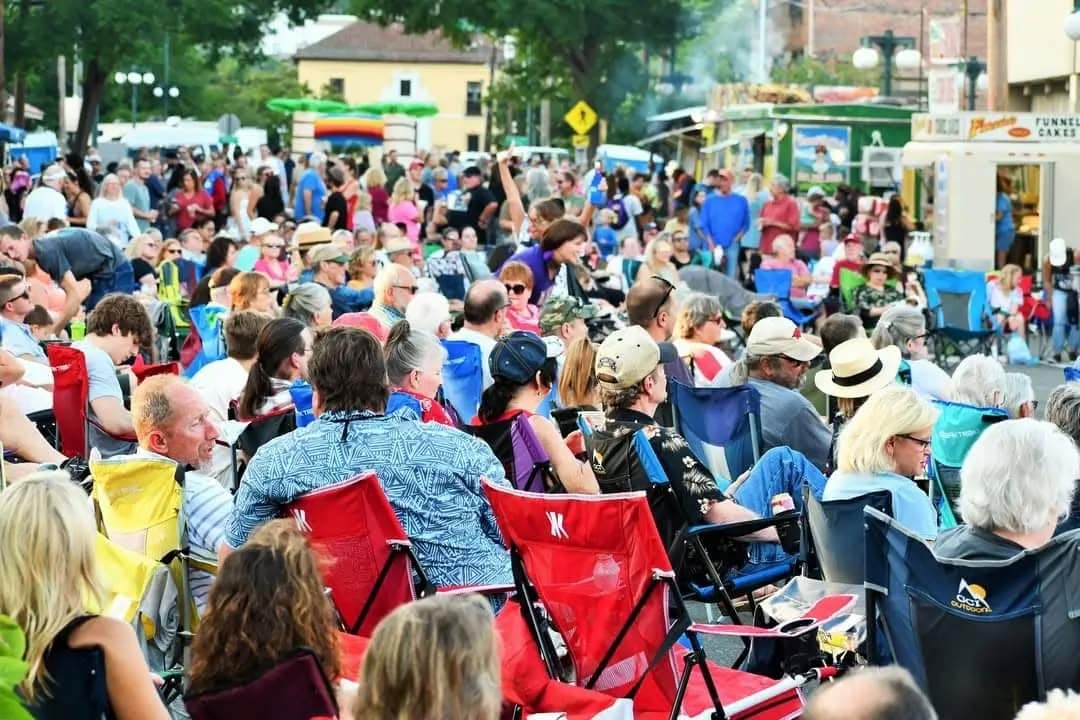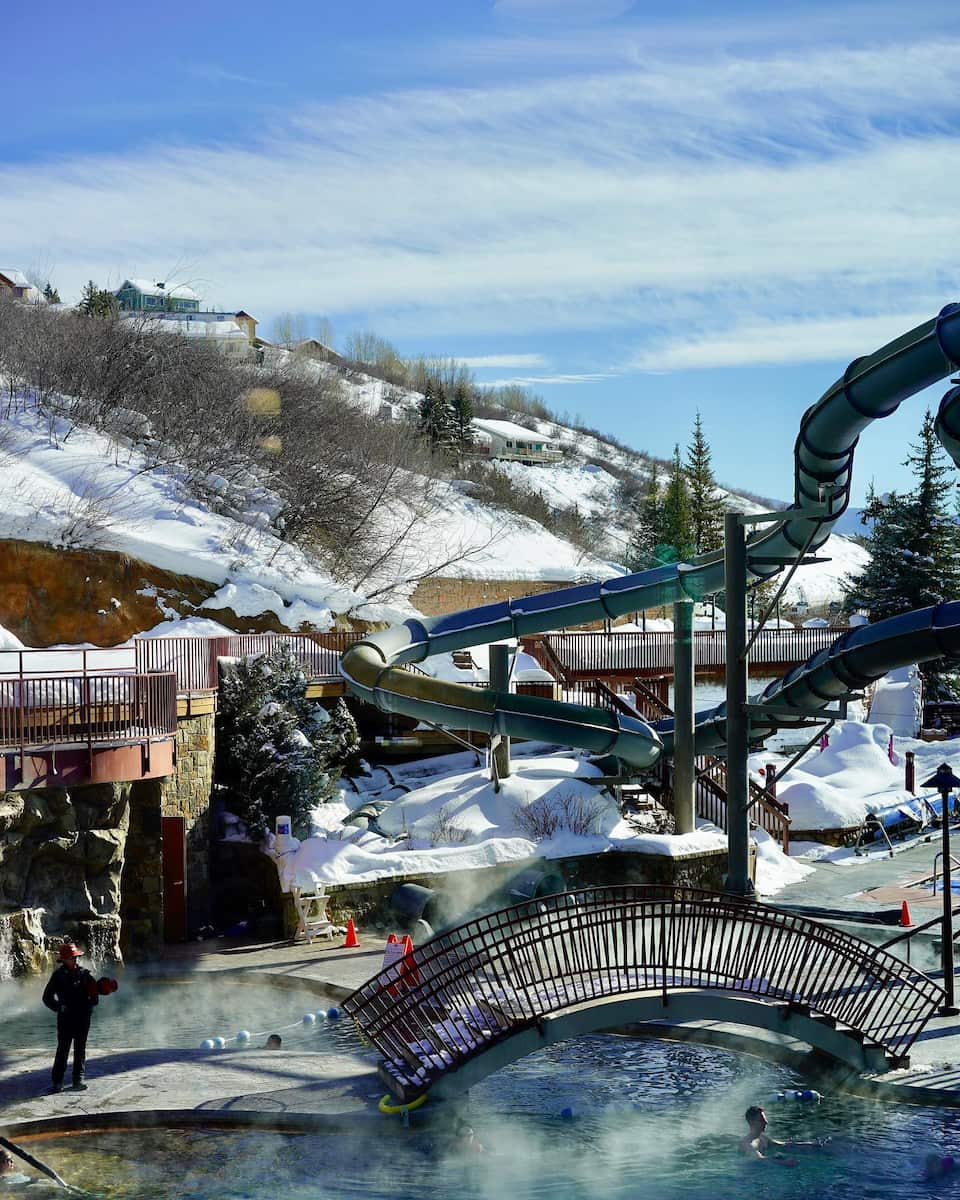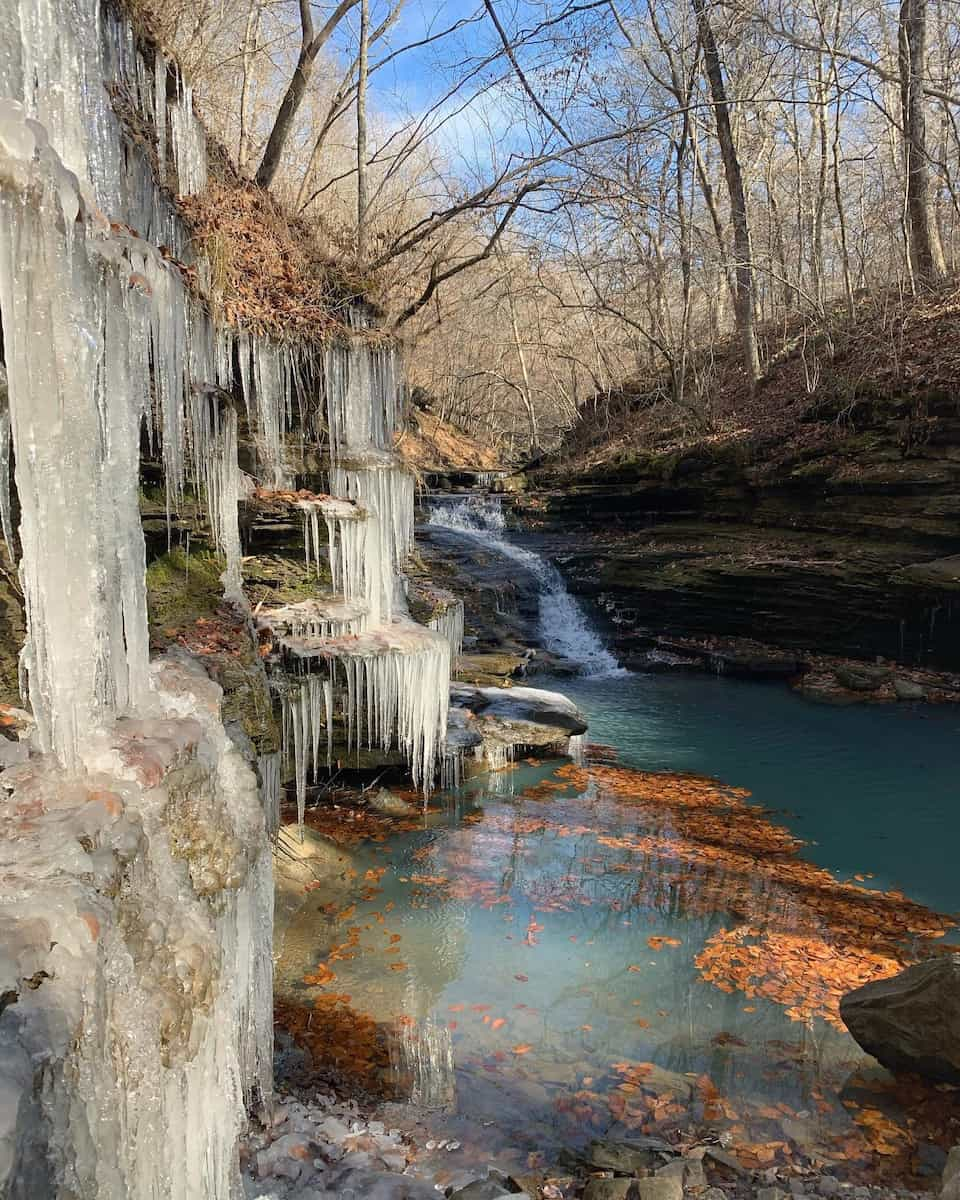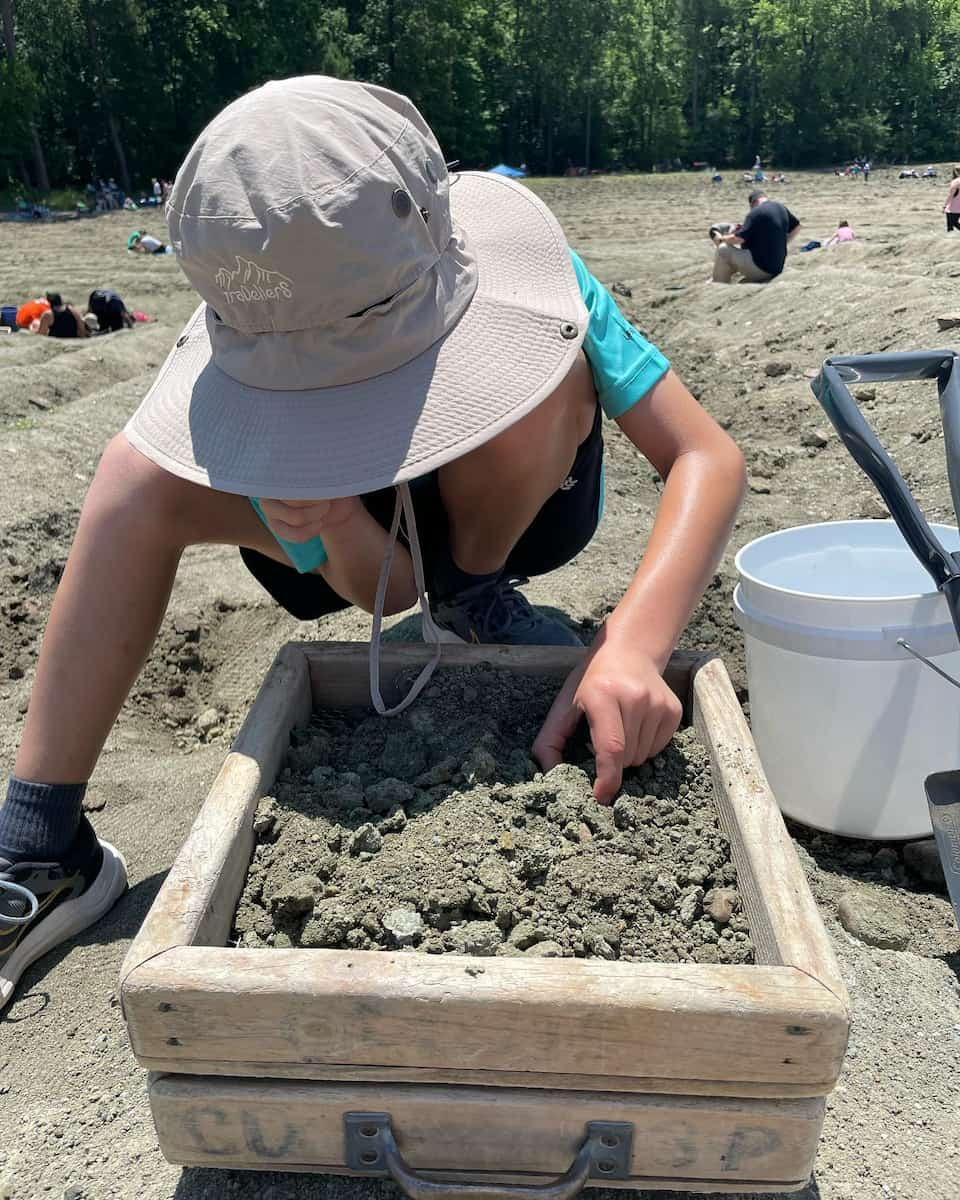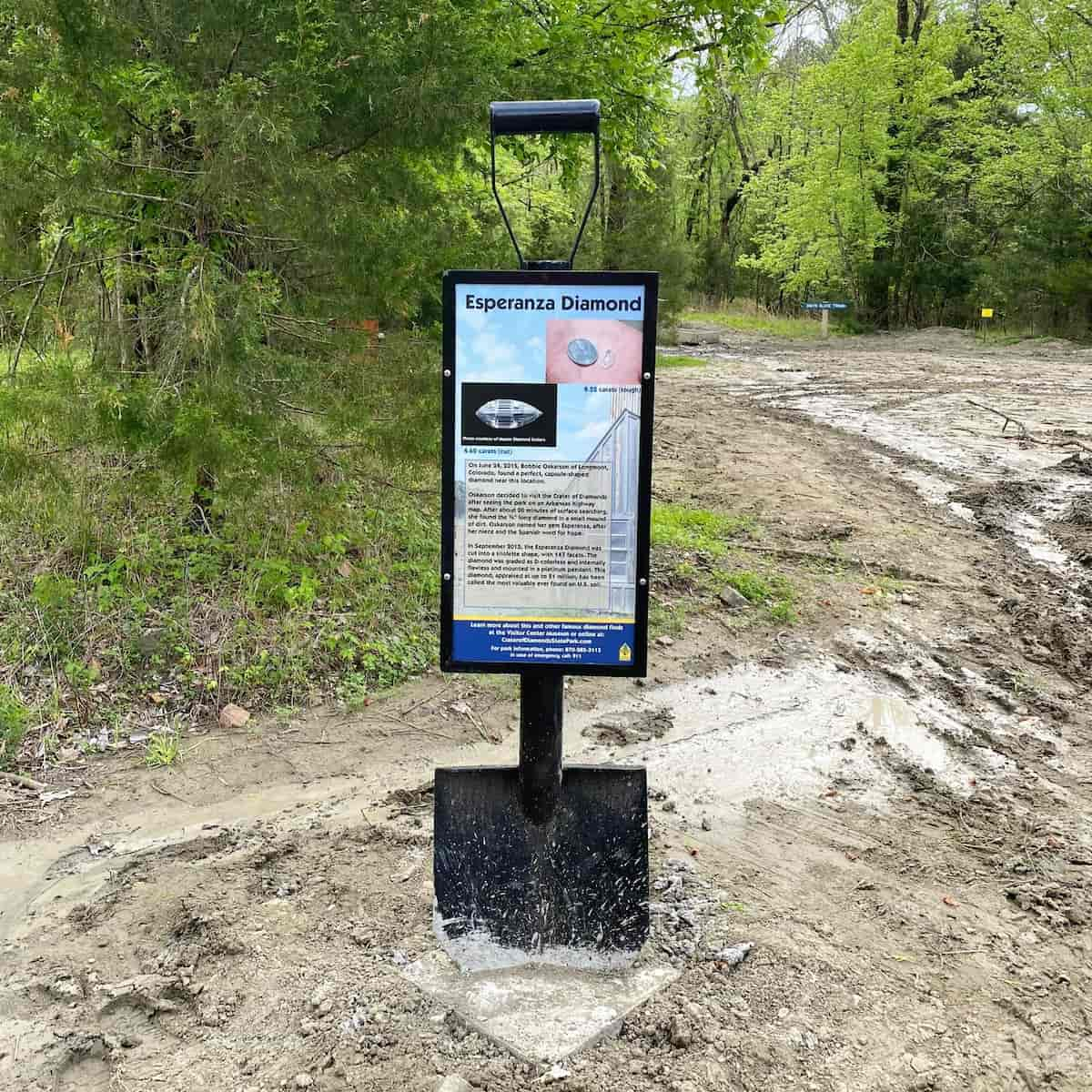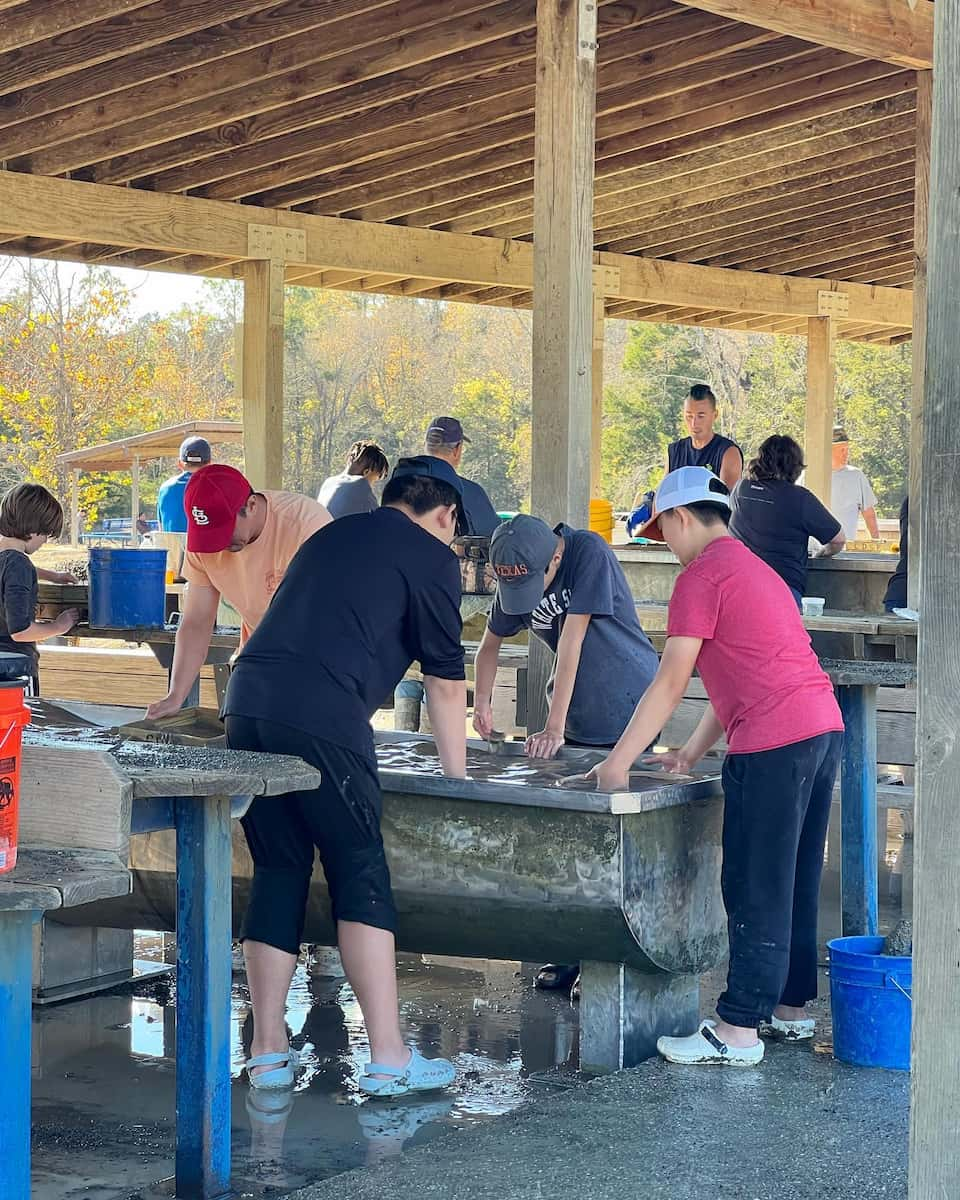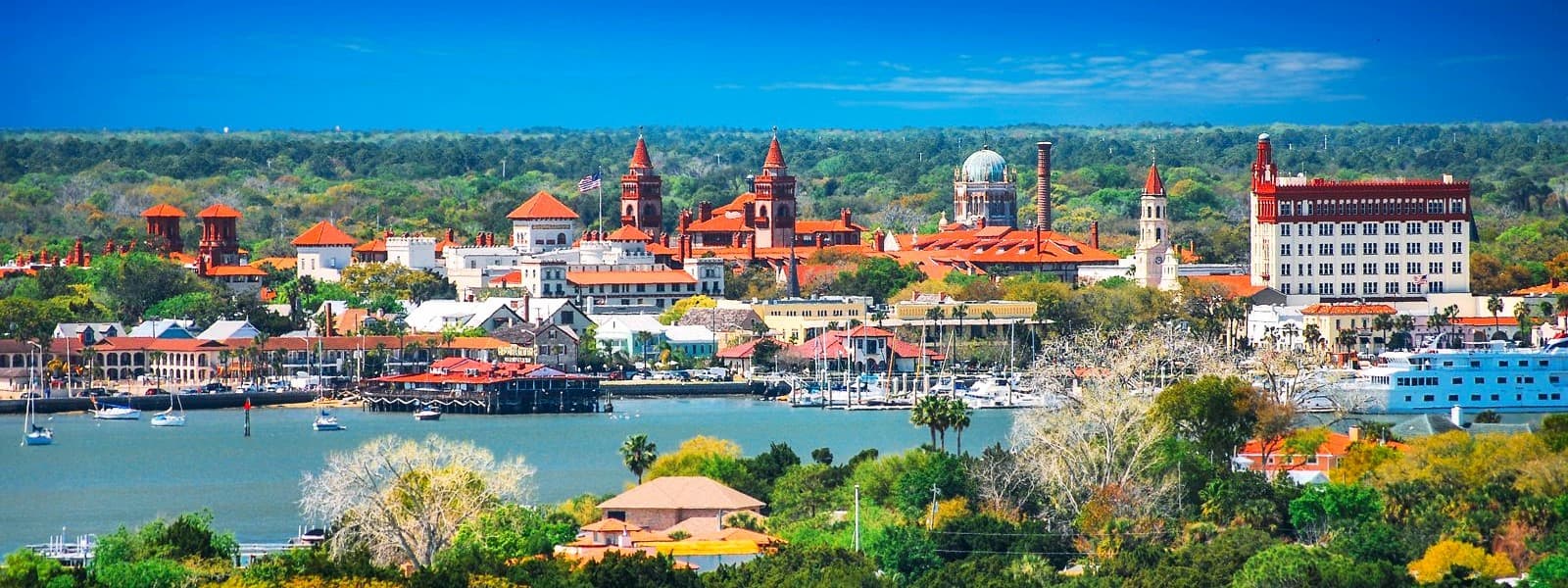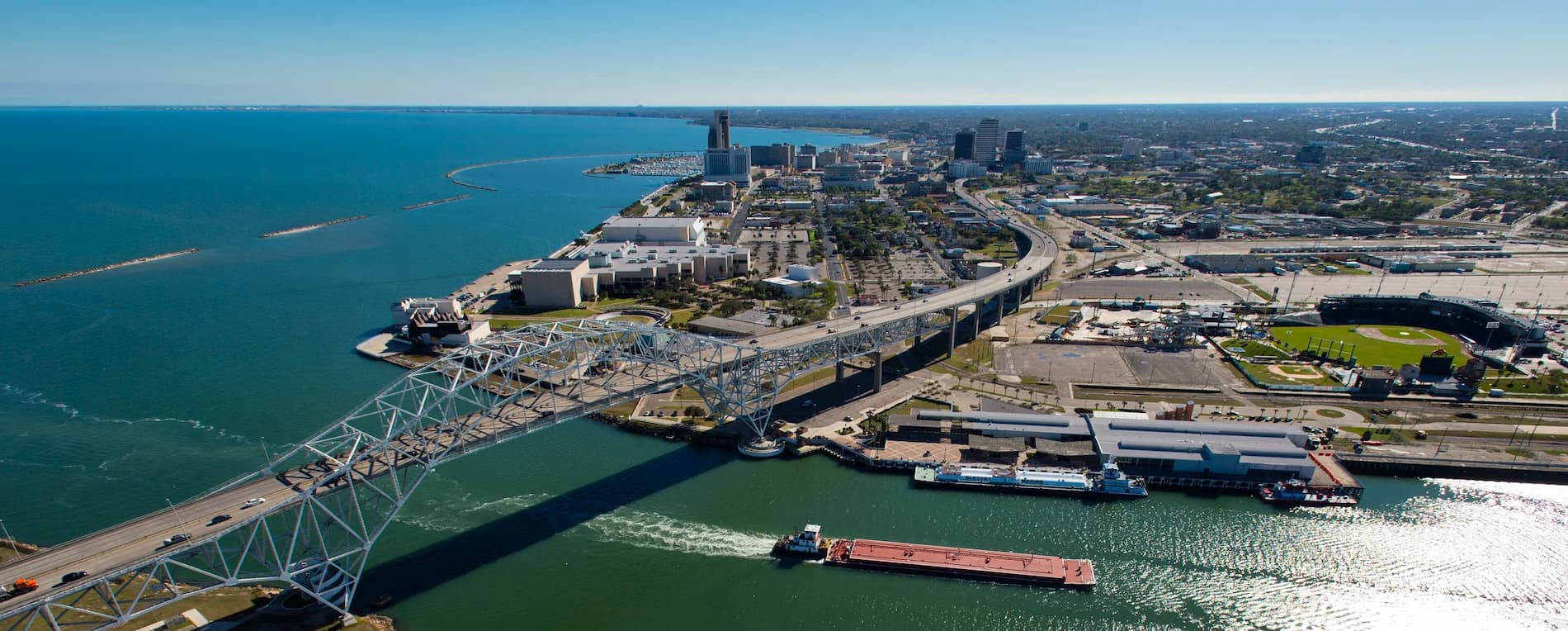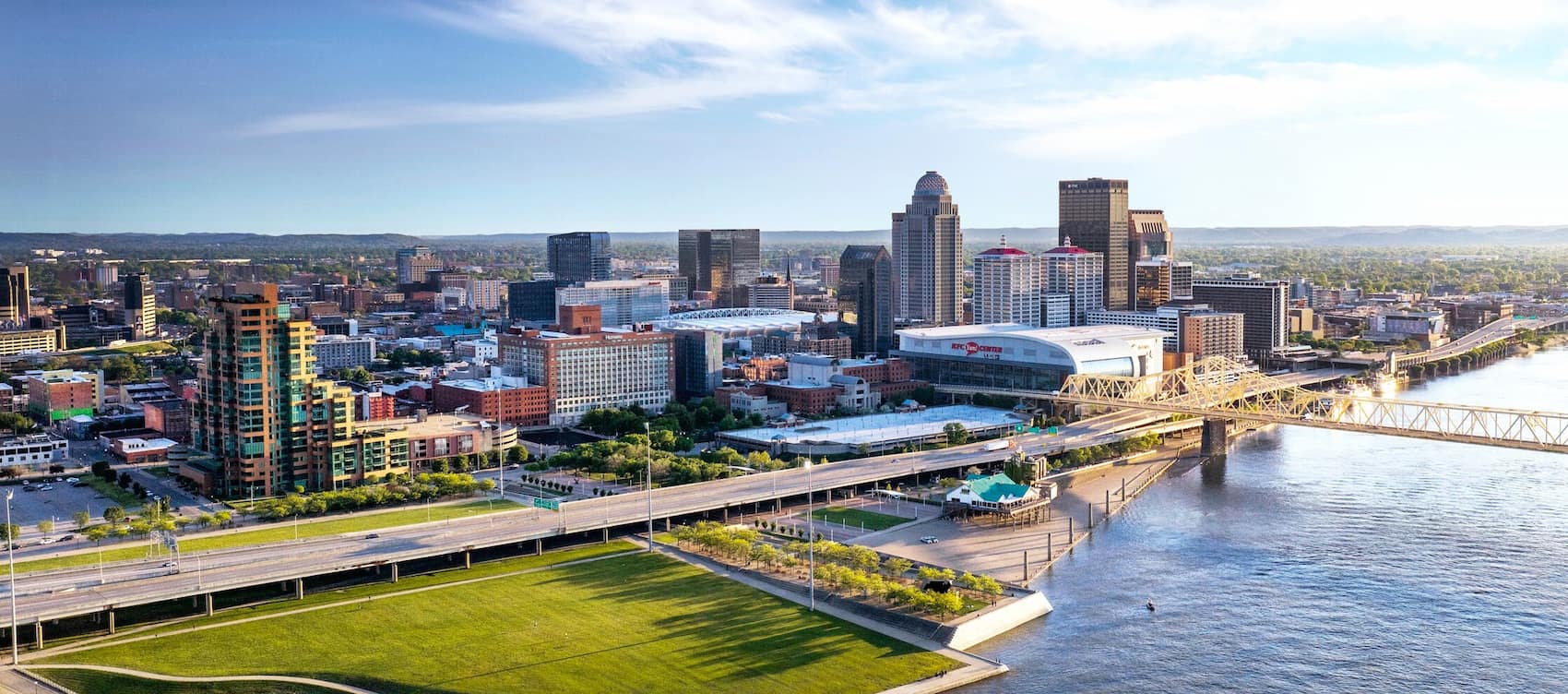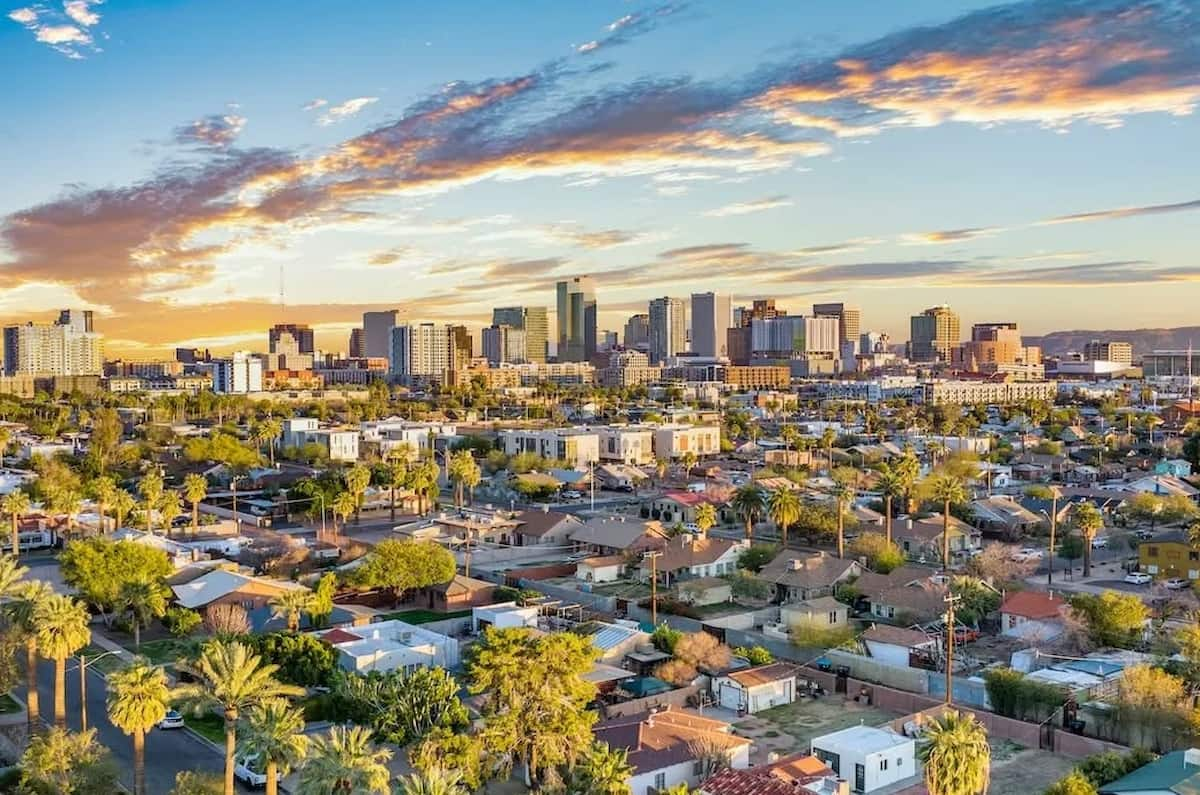Hot Springs, Arkansas is a charming spa town nestled in the Ouachita Mountains, famous for its natural thermal pools and rich history. Known as America’s first spa town, it offers a unique blend of natural beauty, historic architecture, and family-friendly attractions. The city is centered around Hot Springs National Park, where visitors can experience the healing mineral waters that have drawn people for generations.
🏠 Where to Stay in Hot Springs
- 💎 Luxury Hotel: 1884 Wildwood Bed and Breakfast Inn, Hot Springs
- 🏨 4-Star: DoubleTree by Hilton Hot Springs, Hot Springs
- 🛏️ 3-Star: The Hotel Hot Springs, Hot Springs
- 💸 Cheap: Best Western Winners Circle, Hot Springs
- 🏢 Apartment: The Hamilton - Lakefront & Studio Suites, Hot Springs
- 👨👩👧👦 For Families: Embassy Suites by Hilton at Hot Springs Convention Center, Hot Springs
- 🏩 For Couples: Baymont on the lake by Wyndham Hot Springs, Hot Springs
💁 Best Guided Tours
- Hot Springs: The Maxwell Blade Theatre of Magic from € 25 (⭐4.8/5)
- Hot Springs Hop from € 35 (⭐4.7/5)
- Hot Springs NP Self-Guided Driving and Walking Audio Tour from € 15 (⭐4.6/5)
Best Things to Do in Hot Springs
1. Garvan Woodland Gardens
Natural Beauty. I still remember the first time I visited Garvan Woodland Gardens, the 210-acre botanical paradise located just outside Hot Springs proper. The meticulously landscaped paths immediately transported me away from the hustle of everyday life into a world of seasonal blooms and tranquil water features. What struck me most was how the gardens change their personality with each season – from the vibrant tulips and daffodils of spring to the rich chrysanthemums of fall.

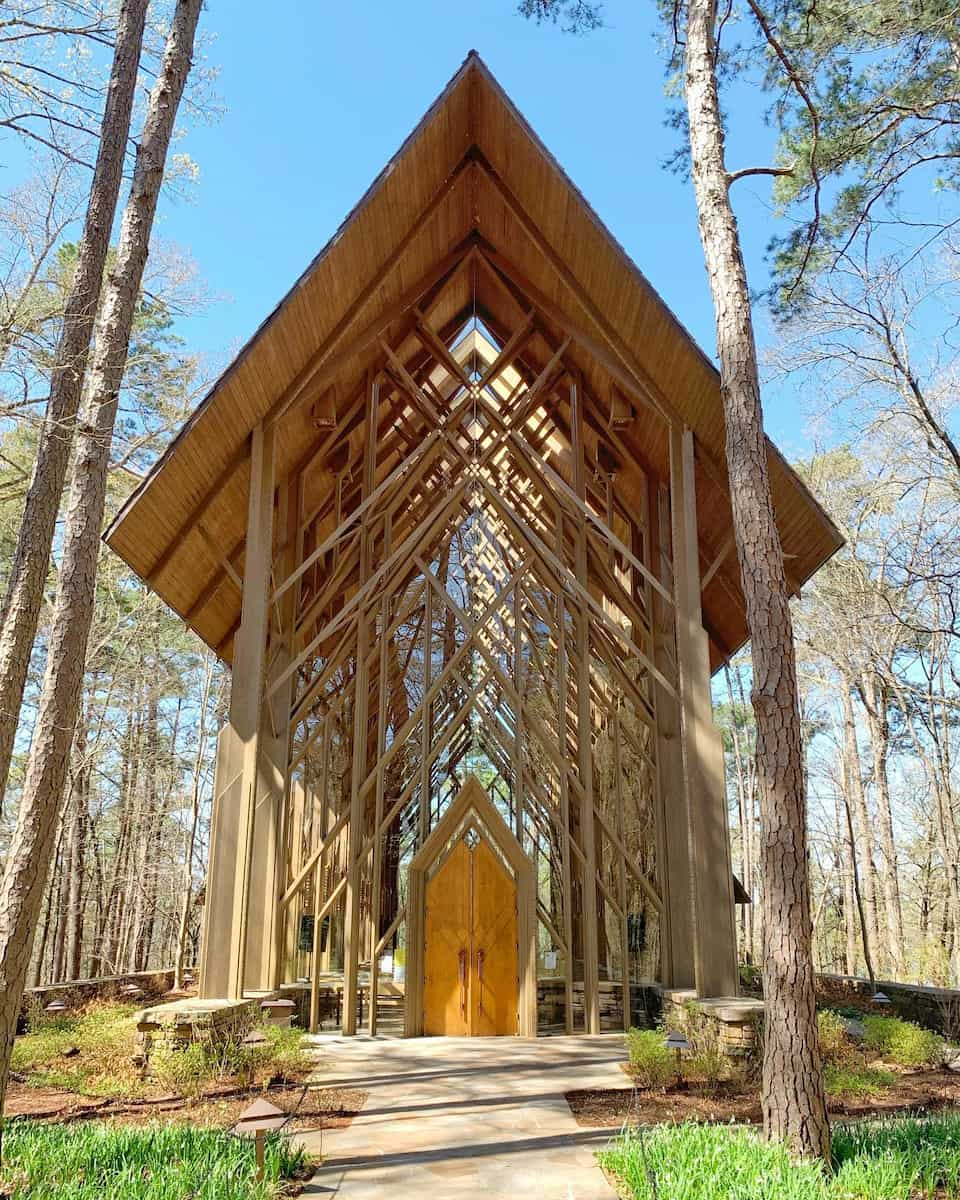
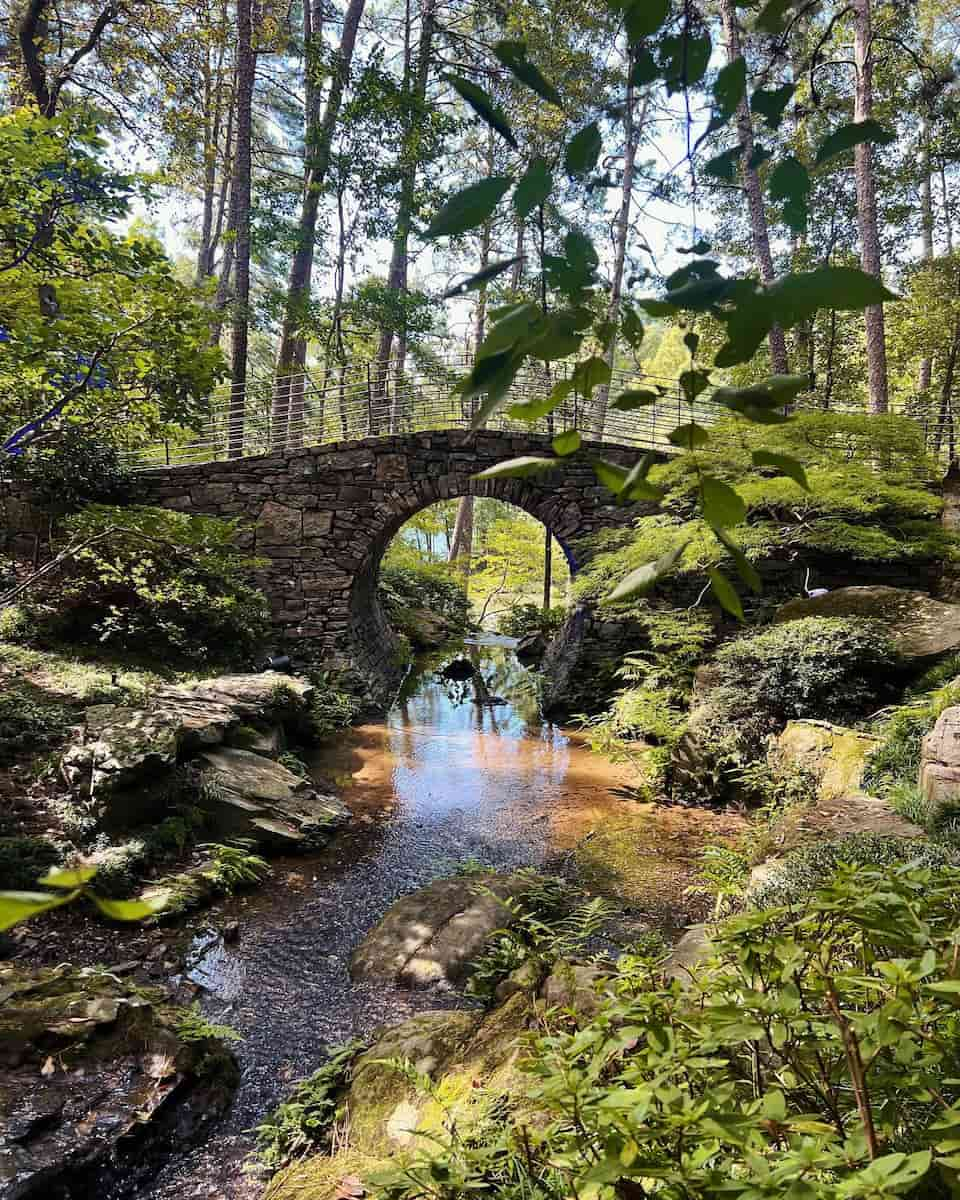
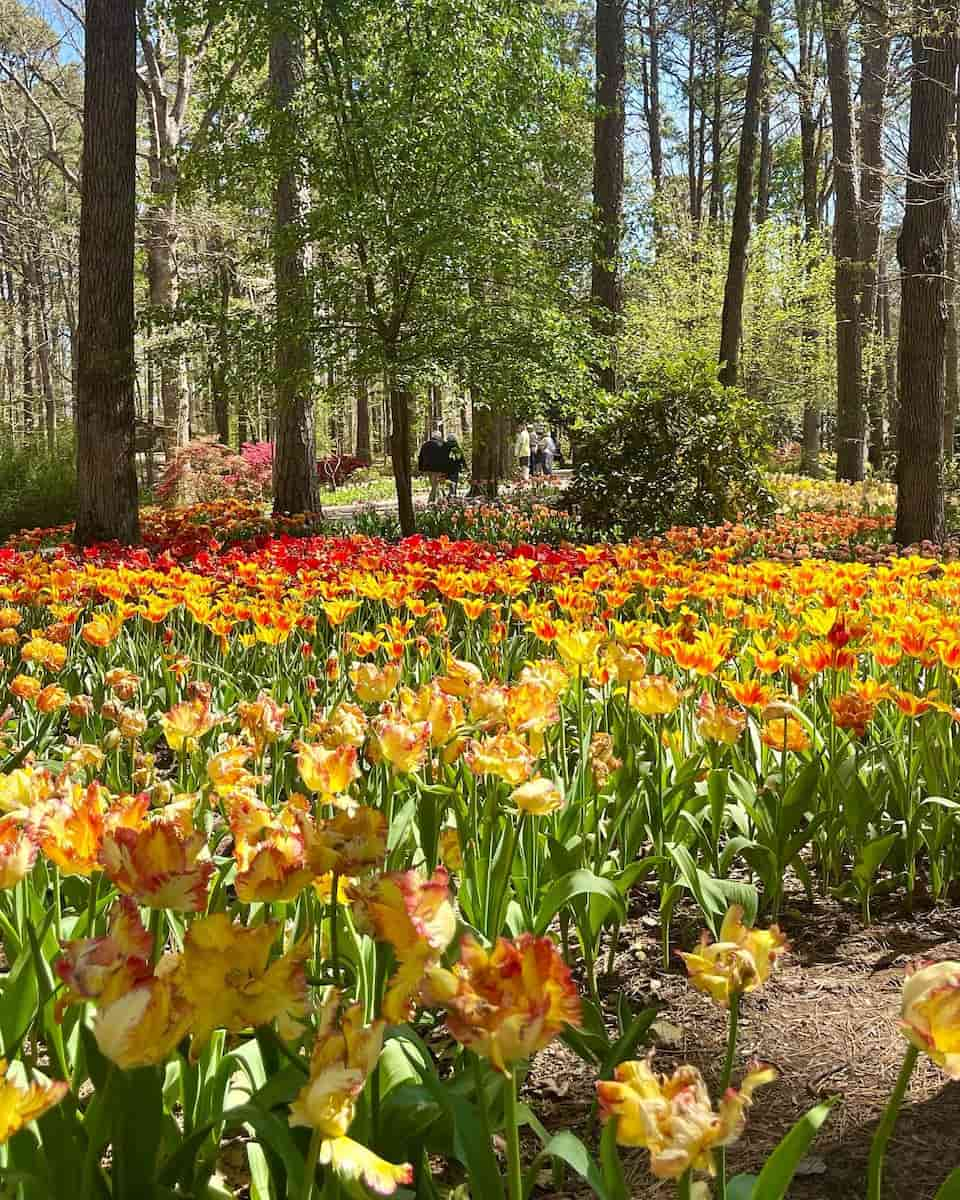

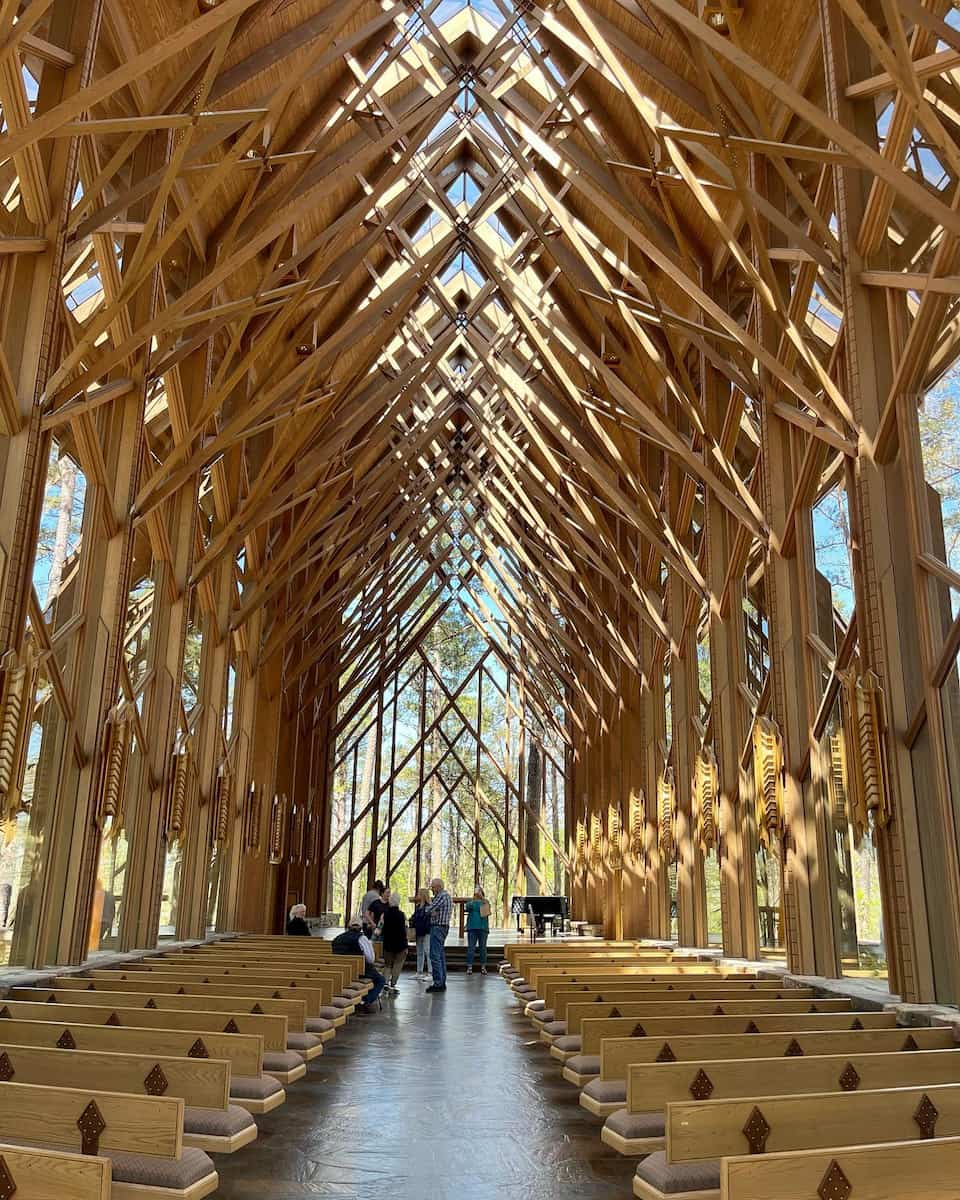
Architecture Meets Nature. The crown jewel of the gardens has to be Anthony Chapel, a stunning glass structure nestled among the trees that seems to blur the line between indoor and outdoor space. I’ve visited numerous botanical gardens across America, but the way sunlight filters through this chapel’s soaring windows creates an almost spiritual experience that’s unmatched elsewhere. Many visitors come just for the chapel, but I’d encourage you to explore beyond it.
Seasonal Spectacles. During my winter visit, I was fortunate to experience the Holiday Lights display, where millions of twinkling lights transform the gardens into a magical wonderland. In spring, the explosion of azaleas, dogwoods, and Japanese maples creates a photographer’s dream. Summer brings lush hydrangeas and daylilies, while fall offers spectacular foliage. No matter when you visit, there’s always something in bloom according to their detailed bloom calendar.
| Admission Prices | Cost |
|---|---|
| Adults (13+) | $15 |
| Children (4-12) | $5 |
| Children under 3 | Free |
| Dogs | $5 each (one handler per dog required) |
2. Fordyce Bathhouse
Historic Immersion. Walking into the Fordyce Bathhouse felt like stepping through a time portal to the early 20th century when Hot Springs was America’s premier spa destination. As the current park Visitor Center, this meticulously restored bathhouse offers self-guided tours that showcase the heritage of thermal water use. I spent nearly two hours exploring its three floors and basement, each telling a different chapter in the story of America’s spa culture.
Architectural Splendor. What impressed me most were the ornate details that wealthy patrons would have enjoyed during the bathhouse’s heyday – marble floors in the lobby, stained glass transoms filtering colorful light, and the stunning assembly room on the third floor with its remarkable stained glass skylight. The men’s and women’s bath halls on the first floor still contain the original marble partitions and bathing equipment, offering a glimpse into the segregated spa practices of the era.
Underground Discovery. Don’t miss the basement level where you can actually see the thermal springs in action. The constant 143°F water bubbles up from deep within the earth, and standing near the spring, I could feel the heat and humidity rising – a tangible connection to the geothermal wonders that made Hot Springs famous. The basement also houses fascinating exhibits on the science behind the springs.
Cultural Context. Beyond just bathing facilities, the Fordyce reveals how “taking the waters” was a complete health and social experience. The second-floor gymnasium reflects the fitness aspect of the bathhouse era, while the cooling room on the third floor shows where guests would relax after treatments. The 15-minute orientation film provides excellent context about the park’s geology and history.
| Visitor Information | Details |
|---|---|
| Hours | 9 AM – 5 PM daily |
| Admission | Free |
| Accessibility | Wheelchair accessible with ramps and elevators |
| Tours | Self-guided or guided (with advance notice) |
3. Hot Springs National Park
America’s Spa Heritage. The park holds the distinction of being one of America’s oldest protected areas, predating even Yellowstone as a federal reservation. What makes this park unique is how it blends seamlessly with the downtown area – you can literally walk from urban streets into forested mountain trails in minutes. During my visit, I was struck by how this park preserves not just natural wonders but also cultural heritage through its historic bathhouses.
Thermal Wonders. The park’s main attraction is, of course, the natural hot springs that emerge from the Hot Springs Mountain at a constant 143°F. These mineral-rich waters have drawn visitors seeking healing and relaxation for centuries. While you can’t bathe directly in the natural springs anymore (they’re too hot!), I enjoyed seeing the steaming water at display springs along the Grand Promenade and filling my water bottle at the public fountains where the water is cooled to drinking temperature.
Hiking Adventures. Beyond the springs themselves, I discovered a network of hiking trails that offer everything from easy strolls to more challenging treks. The Hot Springs Mountain Trail provided stunning views of the surrounding beautiful Ouachita Mountains, while the Gulpha Gorge Trail led me alongside a bubbling creek. What surprised me was how quickly I could escape the town and find myself in peaceful forest settings teeming with wildlife and native plants. Hiking in Hot Springs National is an unforgettable experience, offering not only beautiful landscapes but also a deep connection with nature.
Historical Immersion. Walking along Bathhouse Row, I’ll call this street BRow, the collection of eight historic bathhouses dating from the early 20th century, gave me a tangible connection to the past. Each building showcases different architectural styles, from Renaissance Revival to Spanish Colonial. While some now house museums or restaurants, others still offer traditional spa services.
| Park Information | Details |
|---|---|
| Hours | Park grounds: 5 AM – 10 PM daily |
| Entrance Fee | Free |
| Hiking Trails | Multiple options ranging from 0.5 to 10+ miles |
| Thermal Water | Free at public fountains (bring containers) |
4. Bathhouse Row
Historic Heart. Walking along Bathhouse Row, I immediately felt transported to a more elegant era. This National Historic Landmark features eight beautifully preserved bathhouses built between 1892 and 1923, each with its own architectural personality. The ornate facades, ranging from Spanish Colonial Revival to Renaissance Revival styles, create a stunning visual timeline of American architecture. What makes this experience special is that these aren’t just museum pieces – several bathhouses have been repurposed while maintaining their historic integrity.
Modern Transformations. I was fascinated by how these historic structures have evolved for contemporary visitors. The Superior Bathhouse now operates as the only facility using thermal waters in a U.S. National Park. The Buckstaff continues the tradition of offering thermal baths and spa treatments, while the Quapaw has been modernized into a spa with communal bathing pools. Each building tells its own story of adaptation and preservation.
Cultural Significance. Beyond their architectural beauty, these bathhouses represent an important chapter in American health culture. Before modern medicine, “taking the waters” was prescribed for everything from arthritis to digestive disorders. As I toured the buildings, I learned how the bathhouses were once segregated by gender and social class, reflecting the social structures of their time. The row also witnessed the Prohibition era, when Hot Springs became a playground for gangsters seeking both relaxation and illegal entertainment.
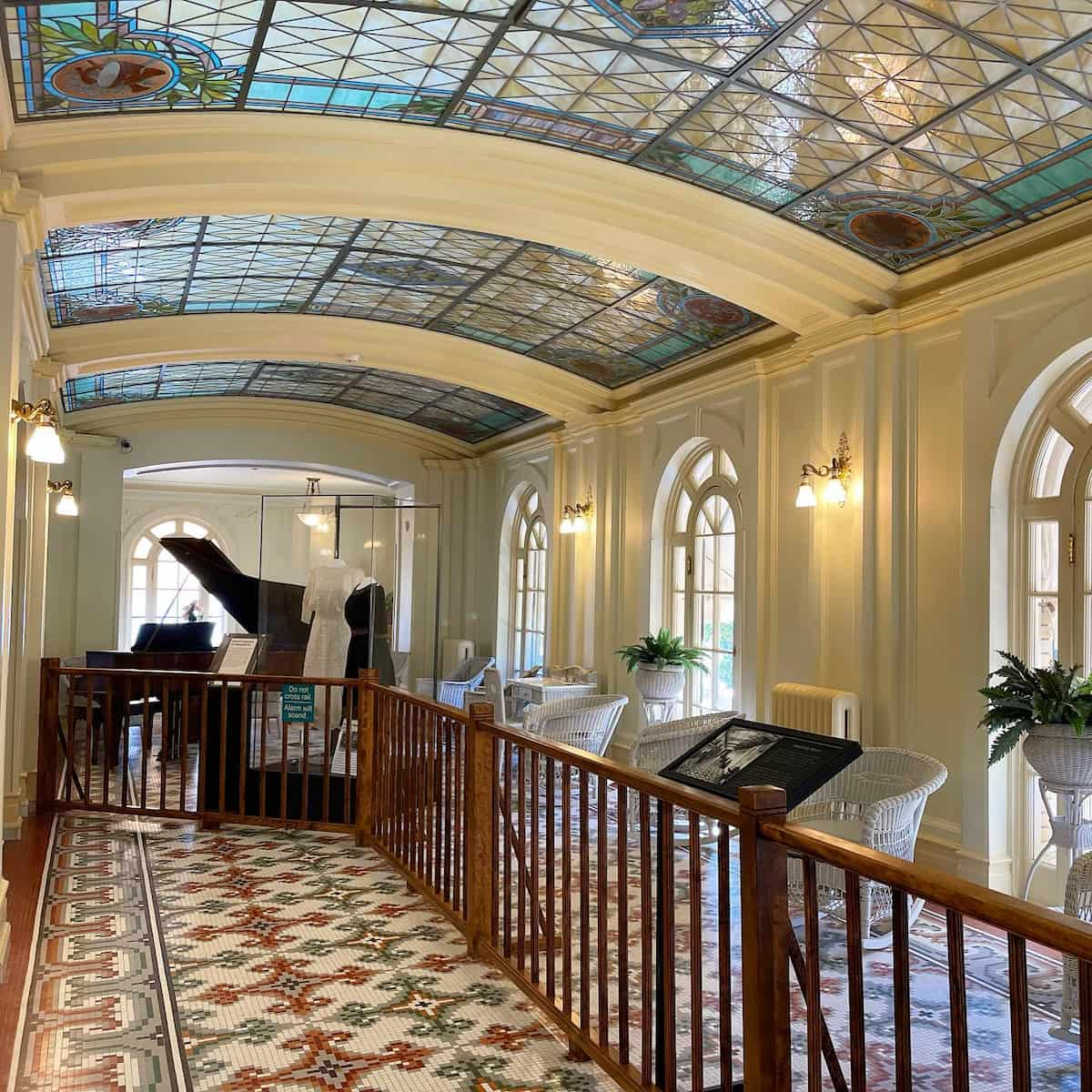
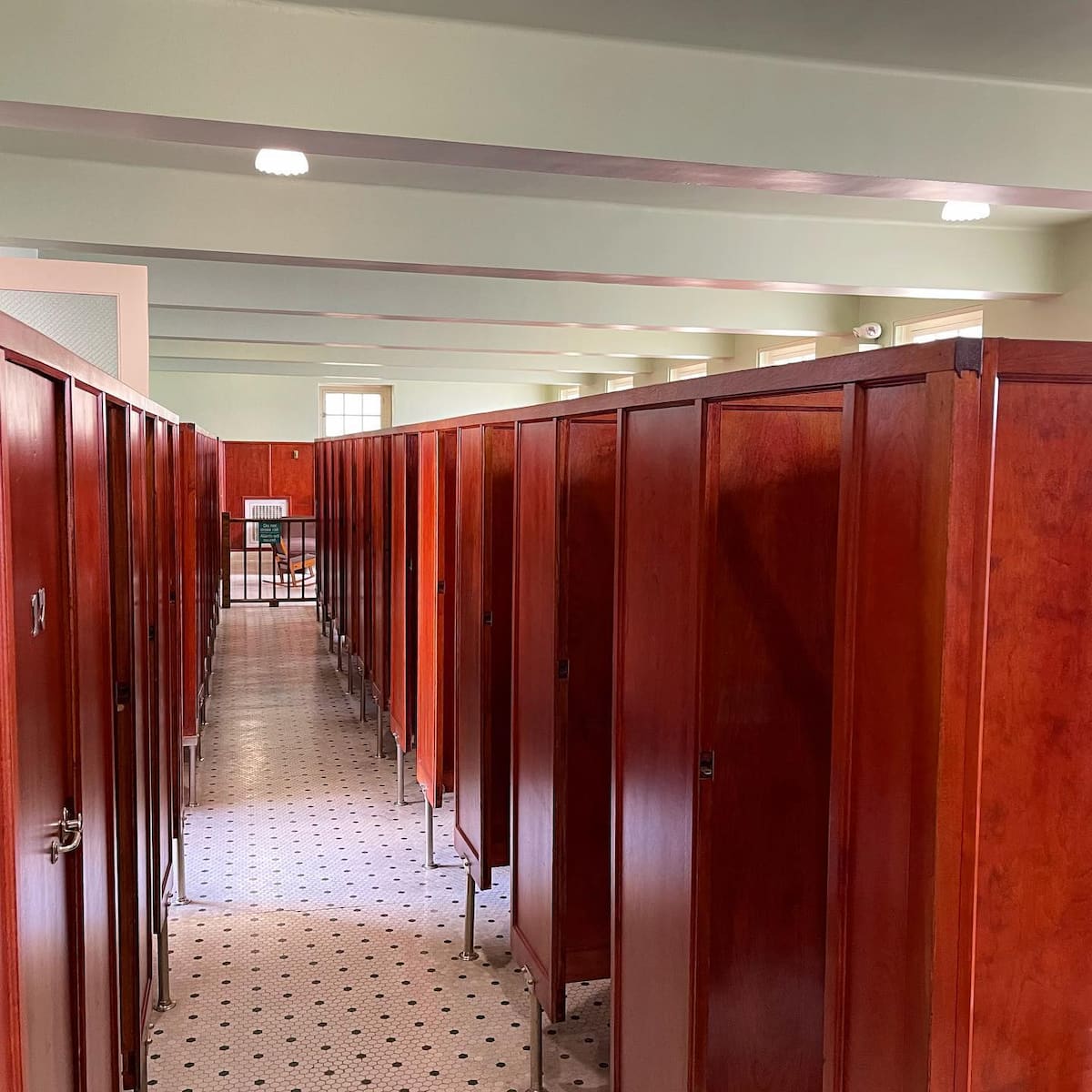
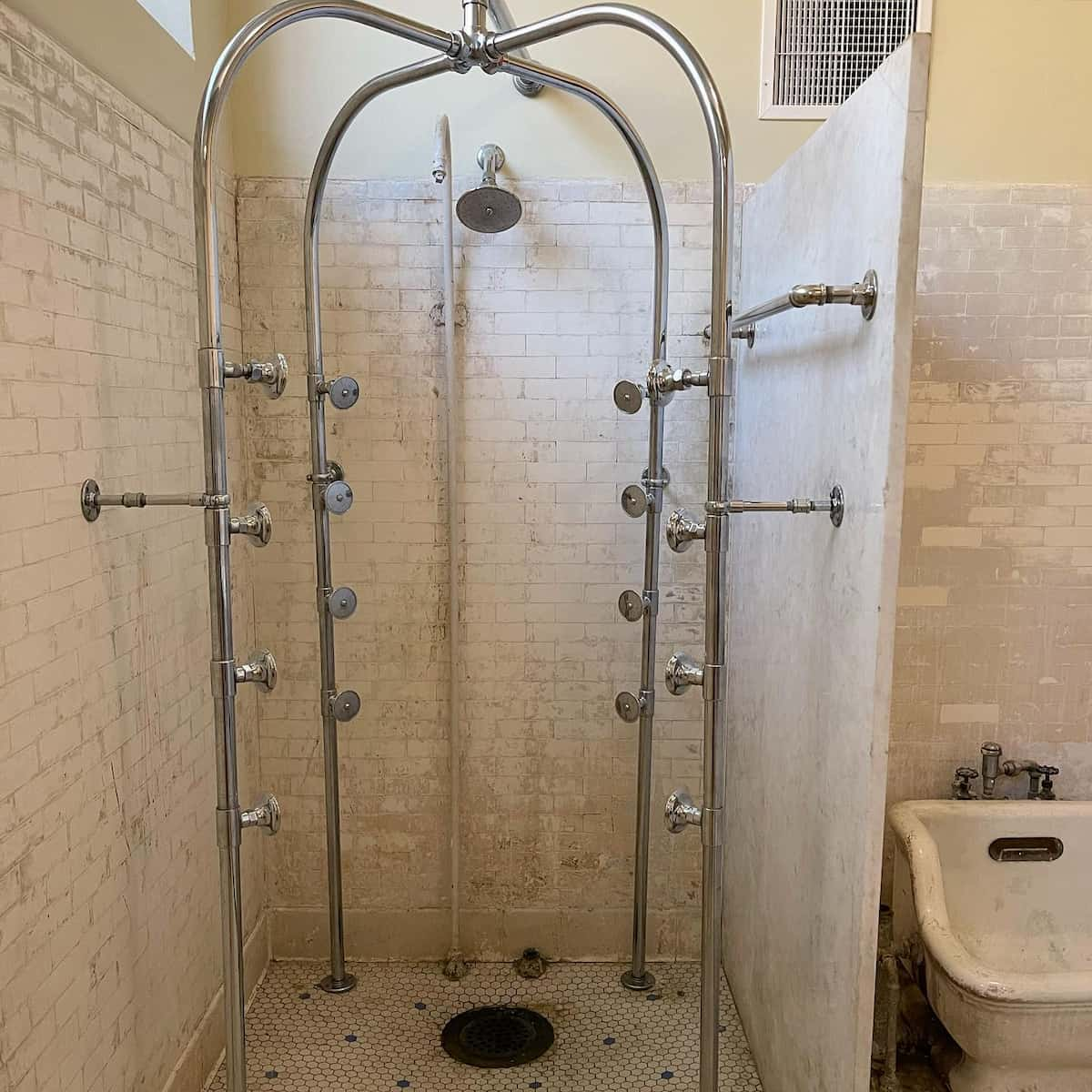
The Grand Promenade. Behind Bathhouse Row runs the Grand Promenade, a half-mile brick walkway that offers a peaceful perspective on the historic district. I spent a pleasant hour strolling this 100-year-old path, stopping at various hot springs displays and taking in views of the bathhouses from behind. The contrast between the manicured promenade and the forested hillside rising above it perfectly captures the unique urban-meets-nature character of Hot Springs.
| Bathhouse Experiences | Approximate Cost |
|---|---|
| Traditional bath at Buckstaff | $40-90 |
| Modern spa at Quapaw | $25-150 |
| Beer flight | $12-15 |
| Fordyce Museum tour | Free |
5. Hot Springs Mountain Tower
Panoramic Perspectives. My visit to Hot Springs wouldn’t have been complete without ascending the Hot Springs Mountain Tower. Standing 216 feet tall and perched atop Hot Springs Mountain, this observation tower offers truly breathtaking 360-degree views that extend for about 140 square miles. I arrived just before sunset, which I’d highly recommend as the golden light bathing the mountains created a photographer’s dream. The elevation of 1,256 feet above sea level provides a unique vantage point to understand the geography that created the famous hot springs.
Historical Context. What many visitors don’t realize is that the current tower is actually the third observation structure to stand on this spot. As I learned from the exhibits on the lower observation deck, the first was built in 1877, followed by a replacement in 1906. The current tower, constructed in 1983, blends modern engineering with historical aesthetics. These exhibits also provide fascinating insights into the park’s development and the geological forces that created the thermal springs.
Dual Experiences. The tower offers two distinct viewing experiences – the upper open-air deck where I felt the mountain breeze while taking in unobstructed views, and the lower enclosed deck that provides air-conditioned comfort along with educational exhibits. I spent time on both, appreciating how they complement each other. The enclosed deck was particularly valuable for understanding what I was seeing from above, with displays identifying key landmarks visible from the tower.
Accessibility. I was pleased to see that despite being a tower attraction, it’s fully accessible thanks to elevators that whisk visitors to the observation decks. The surrounding area offers free parking and well-maintained pathways, making it approachable for visitors of all mobility levels. The gift shop at the base provides unique souvenirs related to Hot Springs’ natural and cultural heritage.
| Admission Prices | Cost |
|---|---|
| General Admission (12-54) | $10.00 |
| Senior Citizens (55+) | $8.00 |
| Military/First Responders | $7.00 |
| Park Pass Holders | $6.00 |
| Youth (5-11) | $5.50 |
| Children under 4 | Free |
⭐ Best Activities
- Hot Springs NP Self-Guided Driving and Walking Audio Tour – Explore Hot Springs National Park at your own pace with this audio-guided driving and walking tour. Perfect for independent travelers who love a flexible adventure!
6. Superior Bathhouse Brewery
Brewing Innovation. I’ve visited breweries across the country, but Superior Bathhouse Brewery offers something truly unique – it’s not only the only brewery in the United States operating within a park and the only one using thermal spring water in its brewing process, but it also sets itself apart from other breweries in the world with its innovative approach. Housed in the historic Superior Bathhouse on BRow, this establishment perfectly blends preservation with innovation. The water mineral content creates distinctive flavor profiles you simply can’t find elsewhere in the world.
Historic Surroundings. What struck me immediately upon entering was how thoughtfully they’ve incorporated the building’s original features into design. The high ceilings, large windows, and tile work all speak to the bathhouse’s 1916 origins, while modern brewing equipment creates an interesting contrast. I found myself imagining the building’s previous life as a place of relaxation while enjoying my flight of craft beers.
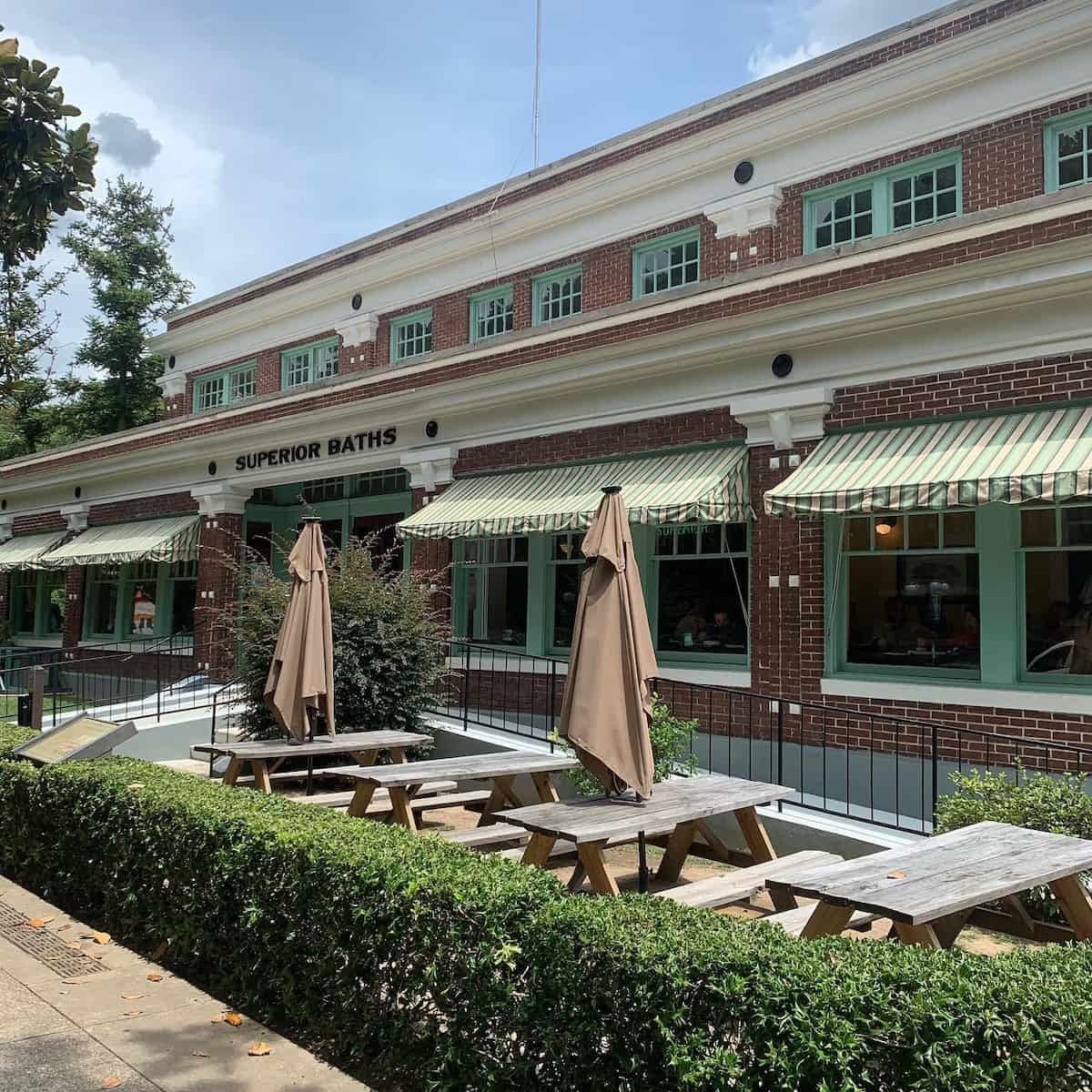

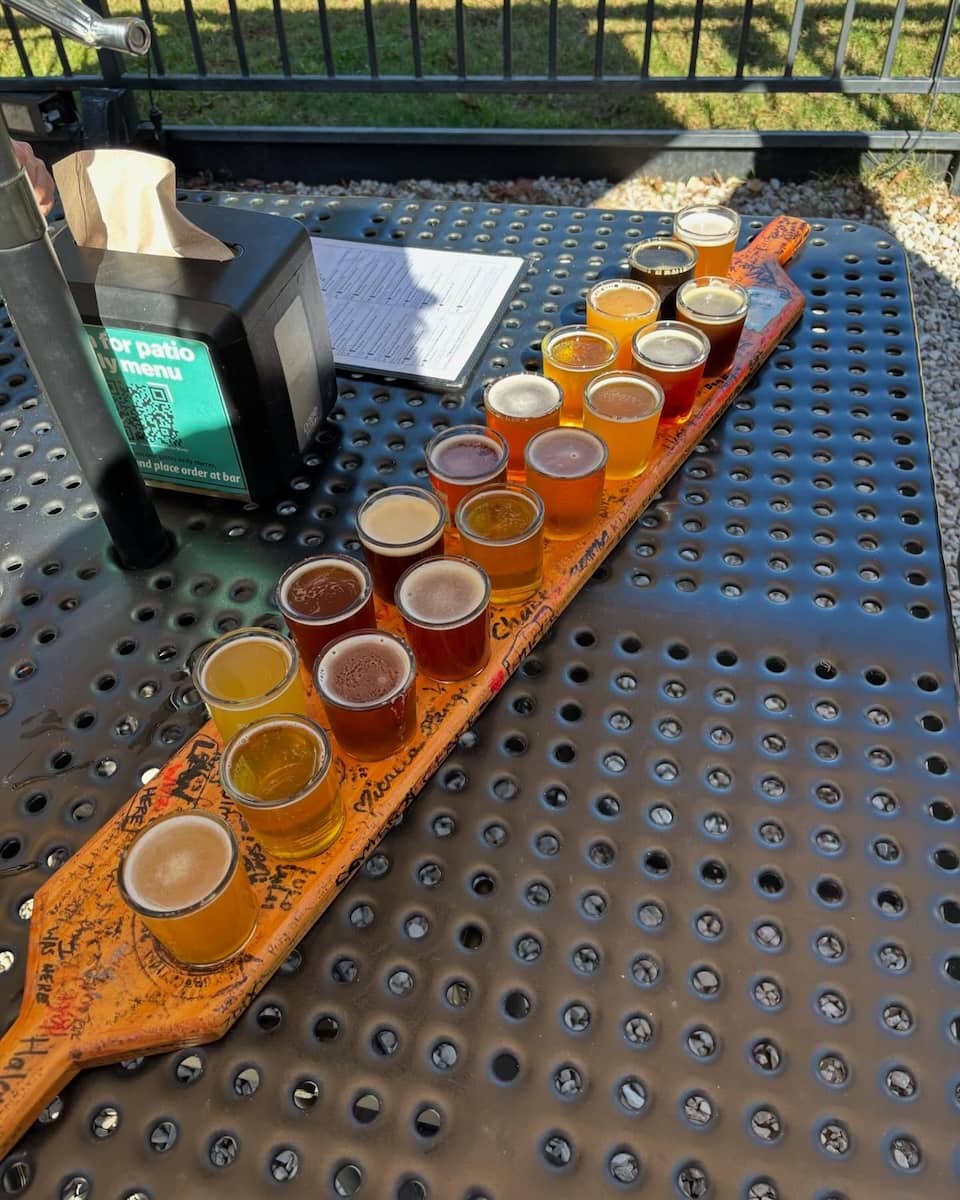
Culinary Complements. Beyond just great beer, I discovered that Superior offers an impressive food menu that goes well beyond typical pub fare. Their chef creates dishes that incorporate local ingredients and even uses spent grain from the brewing process in some recipes. I particularly enjoyed their beer cheese soup made with their own craft brew – a perfect example of their sustainable, full-circle approach to food and beverage.
Tasting Experience. During my visit, I opted for a flight of four different beers, which allowed me to sample their range from light lagers to complex stouts. The knowledgeable staff explained how this water affects each style differently and pointed out subtle mineral notes in the finish.
| Offerings | Approximate Cost |
|---|---|
| Beer Flight (4 samples) | $10-12 |
| Pint of Beer | $6-8 |
| Appetizers | $8-14 |
| Entrees | $12-22 |
| Growler Fill | $16-22 |
7. Gangster Museum of America
Criminal History. I’ve always been fascinated by the Prohibition era, so discovering the Gangster Museum of America in historic downtown Hot Springs was a highlight of my trip. Few visitors realize that this charming spa town once served as a neutral playground for America’s most notorious criminals. Through engaging audio-visual exhibits, I learned how figures like Al Capone, Lucky Luciano, and even Bonnie and Clyde frequented Hot Springs during its heyday as a gambling and vice haven in the early 20th century.
Immersive Galleries. The museum is divided into several themed galleries, each focusing on different aspects of Hot Springs’ gangster connections. What impressed me was the collection of authentic artifacts – from vintage gambling equipment to weapons and period photographs. The gallery dedicated to the illegal casinos that once operated openly in Hot Springs particularly captured my imagination, complete with original gaming tables and slot machines that visitors actually used.
Local Connections. Beyond just famous national criminals, I was surprised to learn about local figures like Owen “Owney” Madden, who retired from New York mob life to become a respected Hot Springs citizen. The museum does an excellent job connecting these colorful characters to specific locations around town that still exist today. After my visit, I found myself looking at certain historic buildings downtown with new appreciation, knowing their secret histories.
Interactive Experience. Unlike many museums where you simply read placards, the guided tour format here creates a more engaging experience. Our guide shared fascinating anecdotes and answered questions throughout the 90-minute tour. The final gallery includes a short film featuring interviews with local residents who remember the gambling era firsthand – these personal recollections brought the history to vivid life in a way that artifacts alone couldn’t.
| Visitor Information | Details |
|---|---|
| Admission (Adults) | ~$15 |
| Hours | 10 AM – 5 PM (extended on weekends) |
| Tour Duration | Approximately 90 minutes |
| Location | Downtown Hot Springs |
8. Downtown Hot Springs
Historic Charm. Wandering through Hot Springs feels like stepping into a perfectly preserved slice of early 20th-century America, but with modern amenities. The historic buildings along Central Avenue, hereinafter referred to as CA ,many dating from the 1900s-1920s, have been lovingly maintained with their original facades intact. What struck me most was how walkable the entire downtown area is – I parked once and spent an entire day exploring on foot, from BRow at the north end to the vibrant shopping district further south.
Artistic Discoveries. One of my unexpected pleasures was finding the numerous murals and public art installations throughout downtown. These colorful works depict everything from the area’s history to natural landscapes and add a contemporary creative energy to the historic setting. I particularly enjoyed the “Hot Springs Music Festival” mural.
Culinary Adventures. Downtown Hot Springs offers an impressive range of dining options within a compact area. I found everything from classic Southern comfort food to international cuisine, often in historic buildings with stories of their own. The Ohio Club, Arkansas’s oldest bar (established 1905), served up both excellent burgers and fascinating history – it operated as a speakeasy during Prohibition and hosted gangsters like Al Capone. For breakfast, I’d recommend the crepes at Café 1217, which uses locally sourced ingredients.

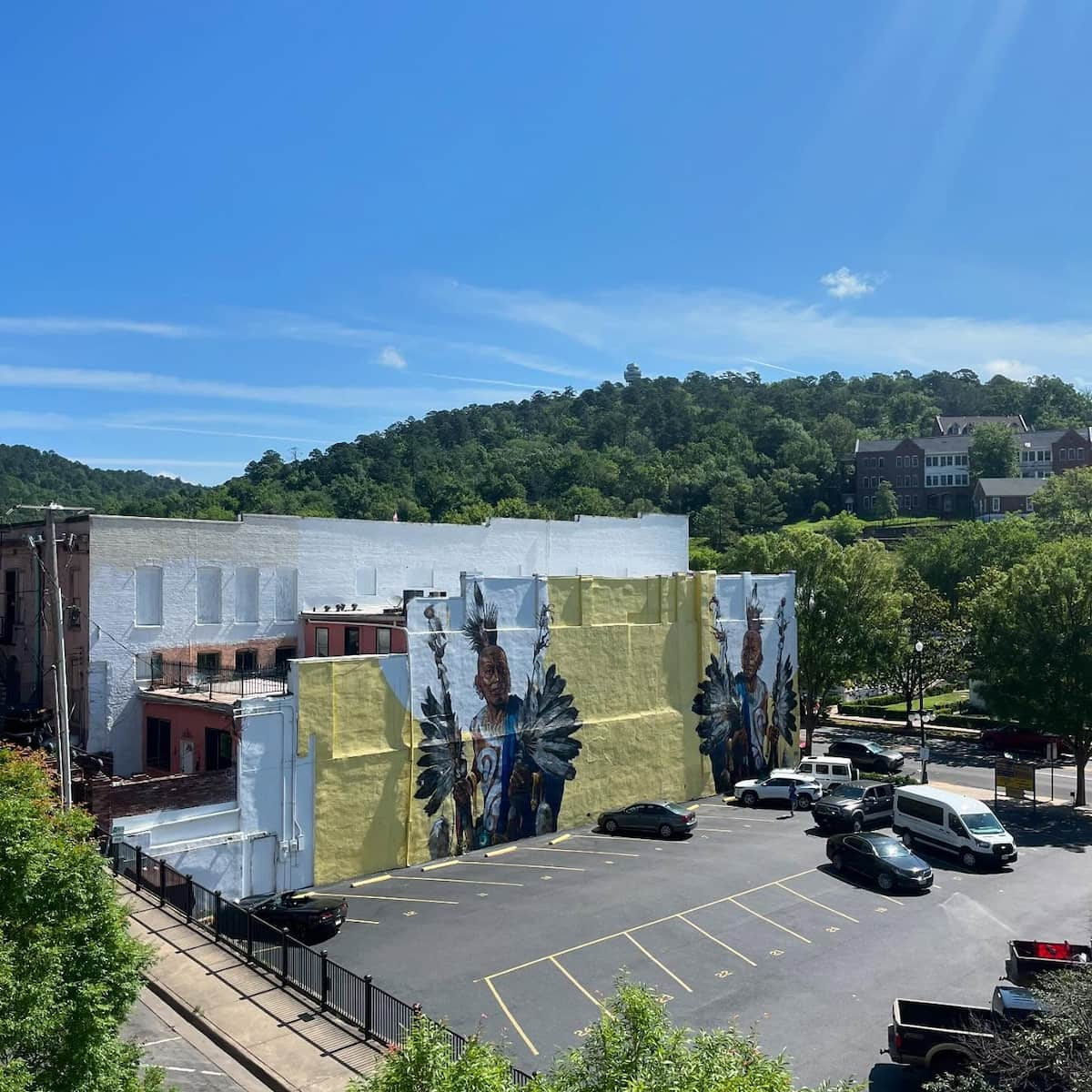

Shopping Treasures. Beyond the expected souvenir shops, Hot Springs features a surprising number of unique boutiques, art galleries, and specialty stores. I spent hours browsing handcrafted jewelry, local artwork, and specialty foods. The BRow Emporium inside the Lamar Bathhouse offers park-themed merchandise and locally made crafts. For something truly unique, I visited Bathhouse Soapery, where they make artisanal soaps inspired by the mineral waters.
| Downtown Highlights | Location |
|---|---|
| Ohio Club (historic bar) | 332 CA |
| Quapaw Baths & Spa | 413 CA |
| Bathhouse Row Emporium | 515 CA |
| Hot Springs Farmers Market | 121 Orange Street (seasonal) |
⭐ Best Activities
- Hot Springs Hop – Hop on and off this fun city tour to discover the highlights of Hot Springs. Great for first-time visitors who want to see it all without the hassle!
9. Lake Catherine State Park
Natural Retreat. Just a 20-minute drive from Hot Springs, I discovered the peaceful oasis of Lake Catherine State Park. This 2,000-acre park centers around a pristine lake created in the 1920s as part of a hydroelectric project. What immediately struck me was the contrast between the bustling tourist atmosphere of Hot Springs and the tranquil natural setting here. The crystal-clear waters reflect the surrounding mountains, creating postcard-worthy views from nearly every angle.
Waterfall Discovery. The highlight of my visit was hiking the Falls Branch Trail, a moderate 2-mile loop that leads to a picturesque waterfall. The trail follows a bubbling creek through a forest of pine and hardwood trees before revealing the falls cascading over rocky ledges into a swimming hole below. I visited in early spring when the waterfall was flowing vigorously from recent rains, but locals told me it’s still beautiful in summer, just with less water volume. The large rocks around the falls create perfect natural seating for a picnic lunch.
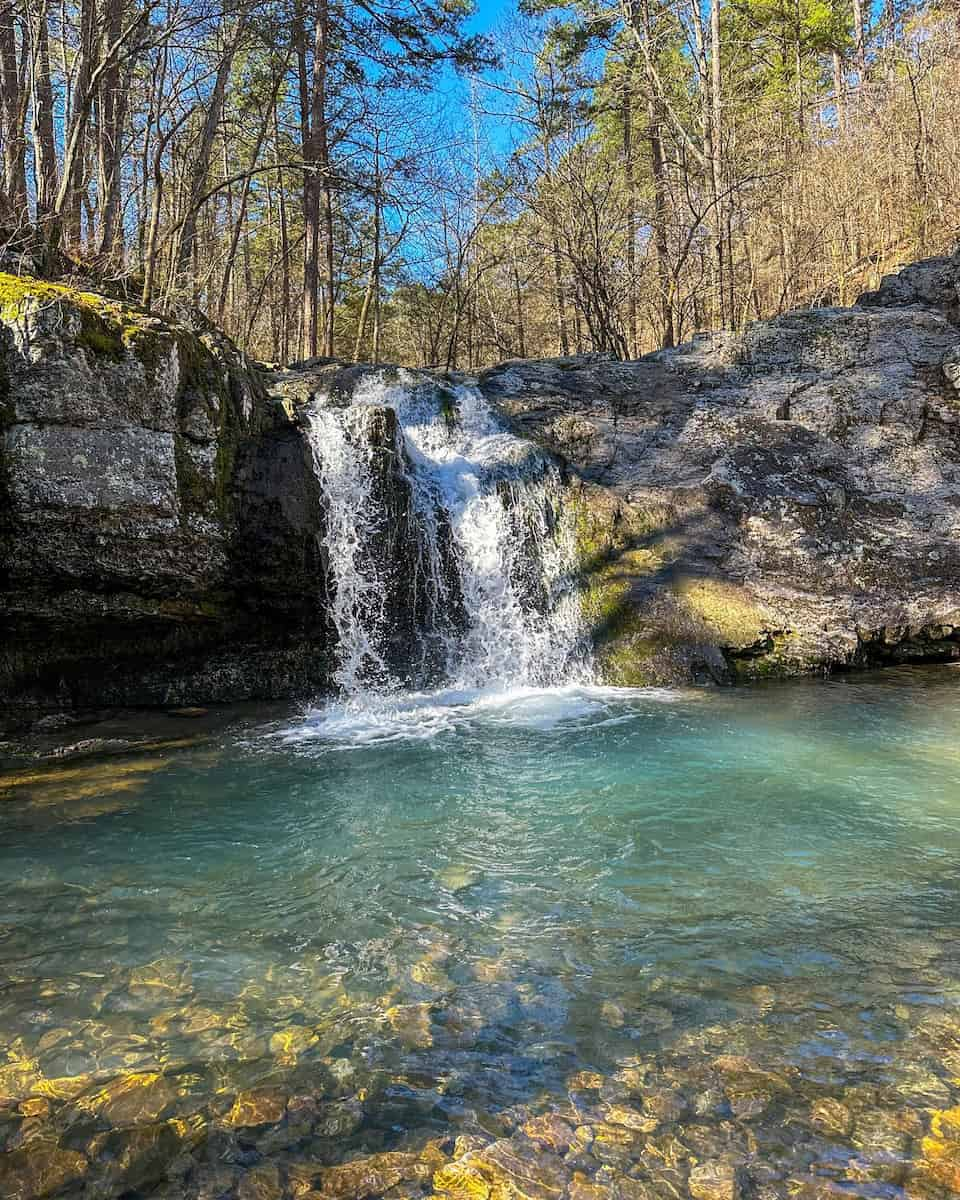
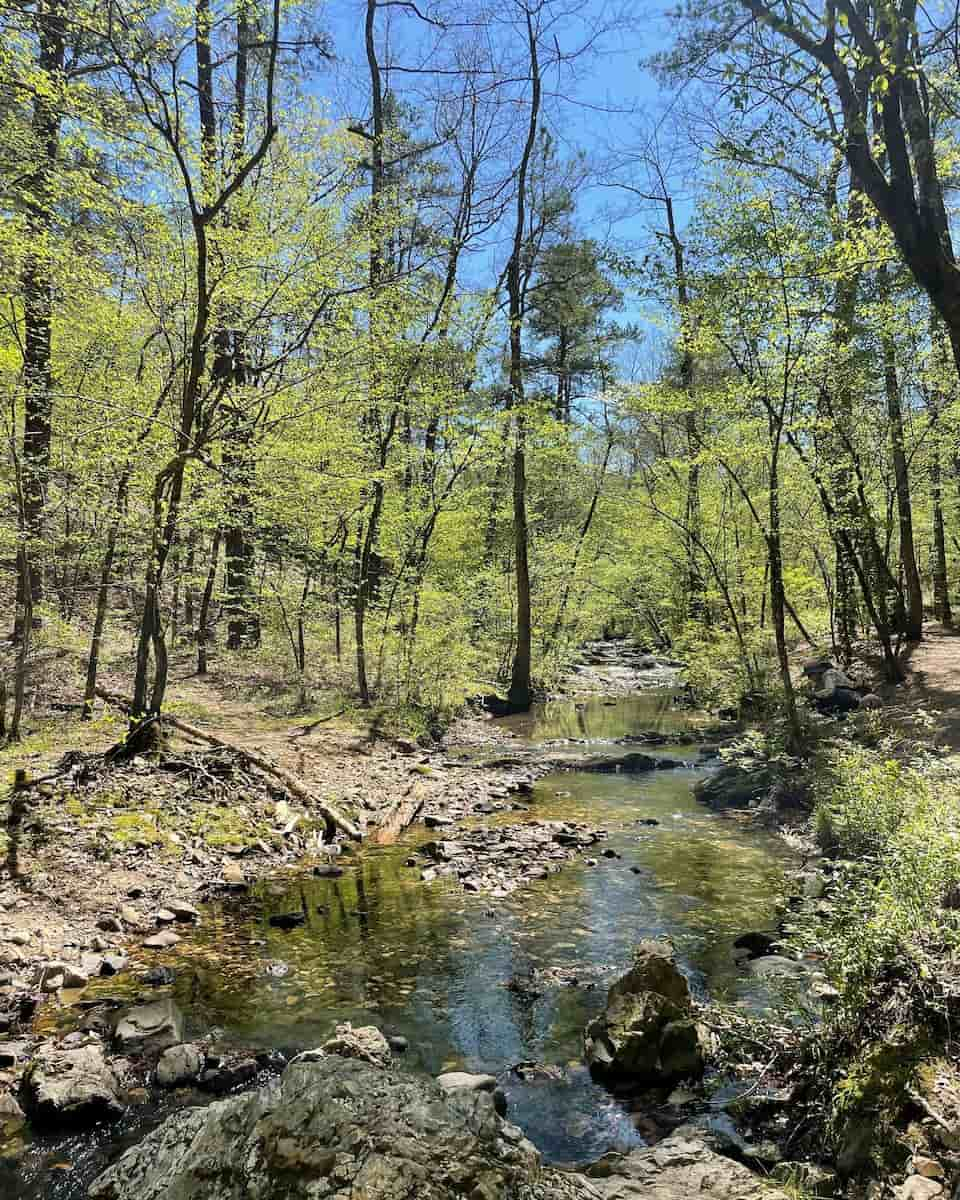
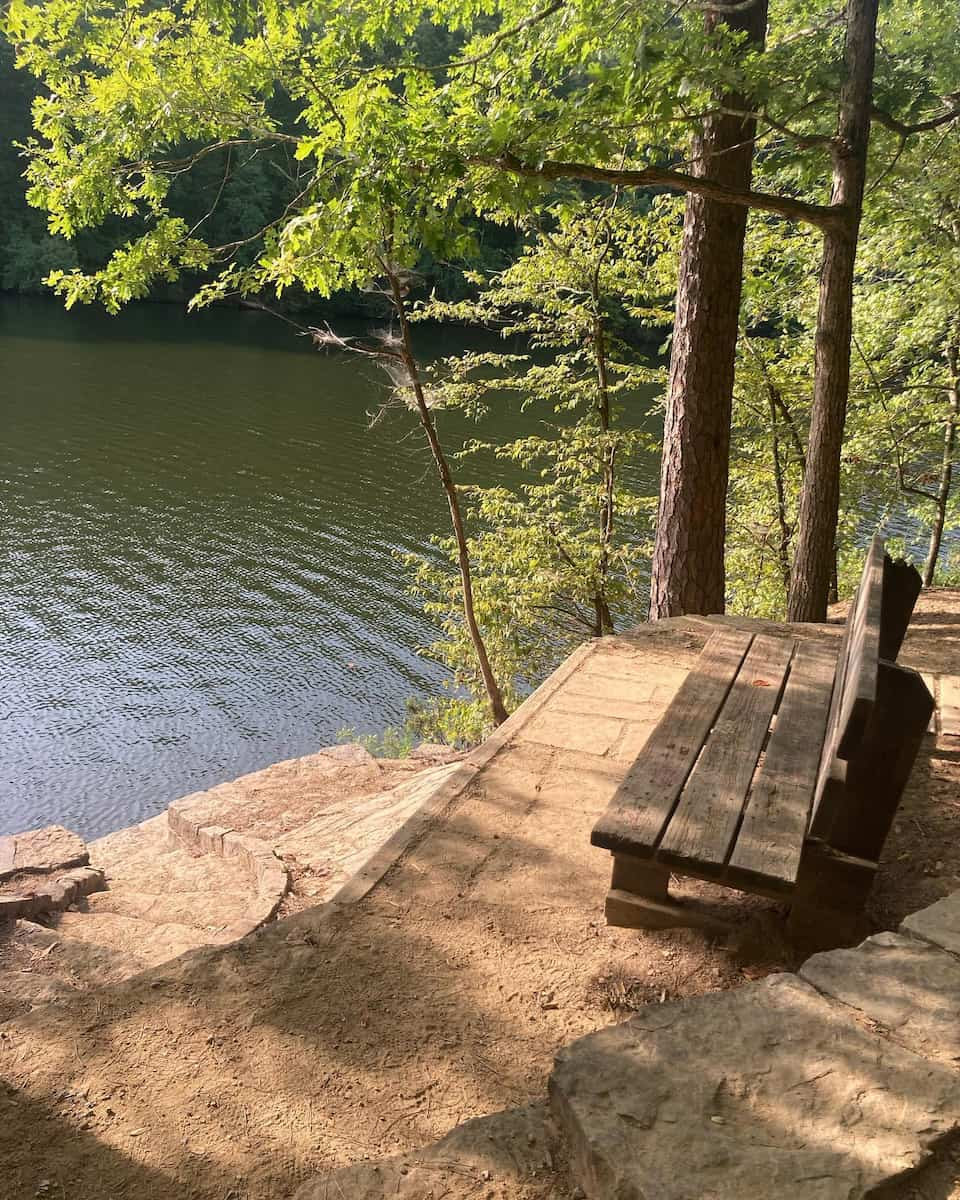
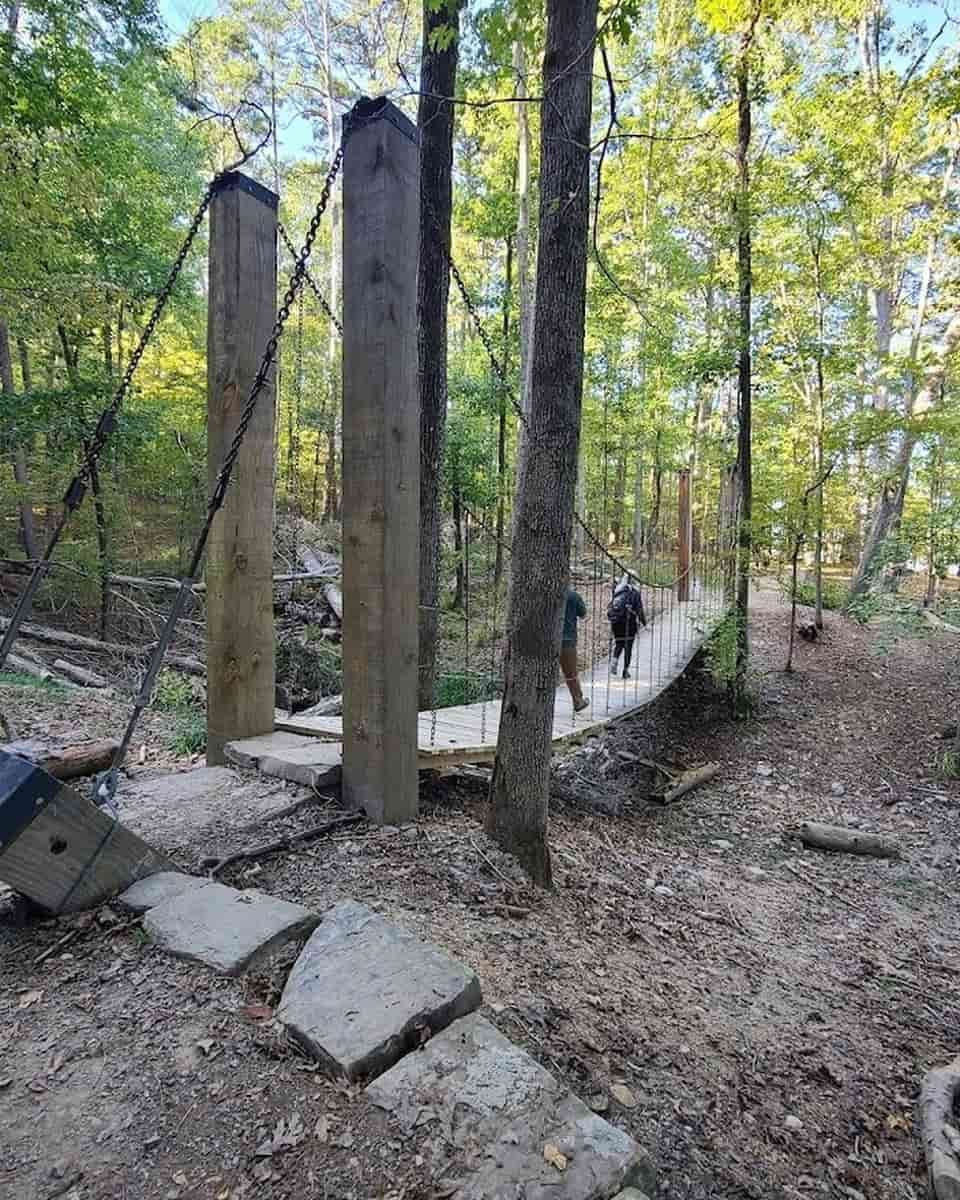
Water Adventures. Lake Catherine offers excellent opportunities for water recreation that I hadn’t expected to find so close to Hot Springs. I rented a kayak from the marina (approximately $10/hour) and spent a peaceful morning exploring the lake’s many coves and inlets. The park also offers fishing boats, canoes, and even party barges for larger groups. Fishing is popular here, with bass, crappie, bream, and catfish being common catches – just remember that an Arkansas fishing license is required.
Accommodations in Nature. While I visited as a day trip, I was tempted by the park’s overnight options. The campground offers sites with water and electrical hookups for around $28-36 per night, while the cabins provide a more comfortable option. What caught my eye were the CCC-built cabins dating from the 1930s that combine historic charm with modern amenities. These fully-equipped cabins (starting around $100/night) feature stone fireplaces and private decks overlooking the lake.
| Park Amenities | Details |
|---|---|
| Hiking Trails | 4 trails ranging from 0.5 to 2 miles |
| Boat Rentals | Kayaks, canoes, fishing boats, party barges |
| Camping | 70 sites with hookups ($28-36/night) |
| Cabins | 20 units, including historic CCC cabins ($100-150/night) |
10. Ouachita National Forest
Wilderness Expanse. Surrounding Hot Springs on three sides, the vast Ouachita National Forest provided me with a perfect complement to the city’s attractions. Covering 1.8 million acres across Arkansas and Oklahoma, this forest offers an almost limitless playground for outdoor enthusiasts. What makes the Ouachitas unique is their unusual east-west mountain orientation (most North American ranges run north-south), creating distinctive ecosystems and spectacular ridge views that I hadn’t experienced elsewhere.
Trail Adventures. During my visit, I hiked a section of the Ouachita National Recreation Trail, a 223-mile path that traverses the entire range. Even tackling just a few miles gave me a sense of the forest’s diversity – from pine-covered ridges to hardwood valleys with clear-running streams. For less ambitious hikers, I’d recommend the Charlton Recreation Area trails, which offer several loop options ranging from 1-3 miles with moderate elevation changes and excellent wildlife viewing opportunities.
Scenic Drives. One of my most memorable experiences was driving the Talimena Scenic Byway, which follows ridgetops offering spectacular vistas across the mountains. While the full byway extends into Oklahoma, even the Arkansas portion provides numerous overlooks where I stopped to photograph the rolling mountains stretching to the horizon. In autumn, this drive becomes truly magical as the hardwood forests erupt in red, orange, and gold foliage.
Wildlife Encounters. The Ouachitas host an impressive diversity of wildlife, and during my hikes, I spotted white-tailed deer, wild turkeys, and numerous bird species. More elusive residents include black bears, bobcats, and bald eagles. I found early morning and dusk to be the best times for wildlife observation, particularly around streams and open meadows. The forest is also home to unique plant communities, including stands of old-growth pine and rare wildflower species that bloom in spring.
| Forest Activities | Best Locations |
|---|---|
| Hiking | Ouachita Trail, Lake Sylvia Recreation Area |
| Mountain Biking | Womble Trail, Cedar Glades Park |
| Fishing | Lake Ouachita, Mountain Fork River |
| Scenic Drives | Talimena Scenic Byway, Highway 7 |
Entertainment for Families and Children
1. Magic Springs Theme and Water Park
Dual Excitement. I still remember the thrill of walking through the entrance of Magic Springs Theme and Water Park, Arkansas’s only combination theme and water park. Located just a short drive from Hot Springs, this family-friendly attraction immediately impressed me with its beautiful setting nestled among the mountains. The park cleverly divides into two distinct experiences – a traditional theme park with roller coasters and family rides on one side, and a refreshing water park with slides and pools on the other. What makes this place special is how seamlessly you can transition between thrilling rides and cooling water attractions on hot Arkansas days.
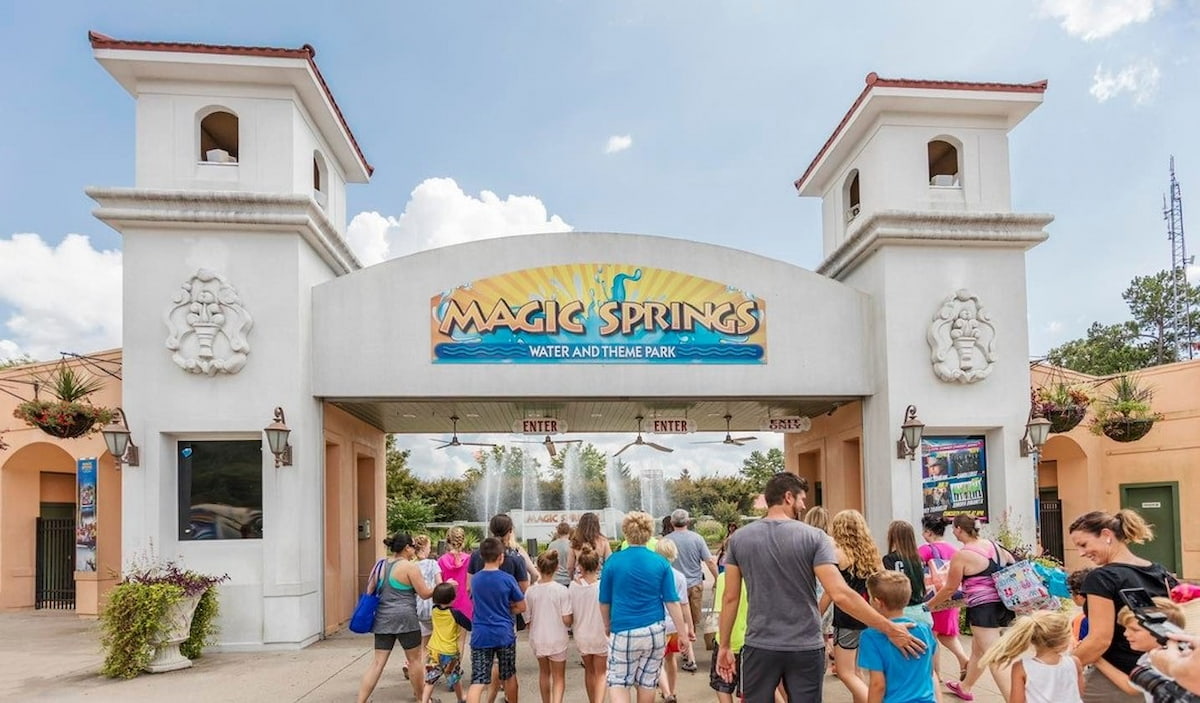
Adrenaline Adventures. As someone who enjoys a good thrill, I couldn’t resist testing out the park’s signature roller coasters. The X-Coaster, with its 150-foot drop and complete inversions, definitely got my heart racing, while the Arkansas Twister provided that classic wooden coaster experience with plenty of airtime moments. What surprised me was the range of intensity levels available – from these high-octane experiences to gentler options like the Carousel and Diamond Falls log flume. This makes Magic Springs ideal for families with children of different ages and thrill tolerances.
Water Wonderland. When the Arkansas summer heat became too intense, I made my way to Crystal Falls Water Park section where seven acres of water attractions await. The massive 350,000-gallon wave pool became my favorite spot to cool off between rides, while Kodiak Canyon Adventure River offered a more relaxing float experience. For families with younger children, I noticed Splash Island, Bear Cub Bend, and Grizzly Creek Splash Zone provided scaled-down water fun with interactive features that had kids squealing with delight. The sound of laughter mixed with splashing water created a joyful atmosphere throughout this section.
Entertainment Bonus. One aspect that truly sets Magic Springs apart from other regional theme parks is the Timberwood Amphitheater’s Summer Concert Series. Included free with admission, these concerts feature well-known performers across various music genres. During my visit, I caught a country music performance that had the whole audience singing along as the sun set behind the mountains – a magical experience that added unexpected value to my day at the park. The amphitheater’s natural setting, with the forested hills as a backdrop, creates a concert venue unlike any other I’ve experienced.
| Admission Options | Regular Price | Online Price |
|---|---|---|
| Single-Day Ticket | $59.99 | $44.99 |
| Regular Season Pass | $99.99 | $69.99 |
| Gold Season Pass (includes meals) | $169.98 | $139.98 |
| Parking | $15 | Free with Gold Pass |
2. Mid-America Science Museum
Interactive Discovery. Walking into the Mid-America Science Museum felt like entering a playground for curious minds of all ages. Located about 6.5 miles west of Hot Springs center on Mid-America Boulevard, this award-winning museum houses over 100 hands-on exhibits that invite visitors to touch, experiment, and play while learning scientific principles. What immediately struck me was how the exhibits appealed to different learning styles – some were purely tactile, others more visual or auditory. The museum’s setting in a wooded 21-acre park adds to its charm, with large windows throughout the building framing views of the surrounding forest.
Electrifying Experiences. The undisputed star attraction has to be the Tesla Theater, home to one of the most powerful conical Tesla coils in the world. I timed my visit to catch one of the regularly scheduled demonstrations, and the experience was truly unforgettable. Standing in the darkened theater as 1.5 million volts of electricity created spectacular lightning-like discharges accompanied by music had both children and adults gasping in amazement. The presenter’s engaging explanation of Nikola Tesla’s work made complex electrical concepts accessible even to the youngest visitors, sparking conversations that continued long after the show ended.
Outdoor Adventures. What many visitors miss is the museum’s outdoor components, which I found equally impressive. The 40-foot high Skywalk extends into the forest canopy, providing a squirrel’s-eye view of the surrounding woodland. Walking across this gently swaying bridge gave me a unique perspective on the Ouachita forest ecosystem. The nature trails winding through the property offer a perfect opportunity to burn off energy between indoor exhibits, with interpretive signs connecting natural phenomena to the scientific principles demonstrated inside the museum.
Whimsical Wonders. One of my unexpected delights was discovering the collection of Rowland Emett’s kinetic sculptures, including several that appeared in the classic film “Chitty Chitty Bang Bang.” These whimsical “things” (as Emett called them) combine art, engineering, and humor in fascinating contraptions that perform seemingly simple tasks in deliberately complicated ways. I spent nearly half an hour watching “The Featherstone-Kite Openwork Basketweave Mark Two Gentleman’s Flying Machine” in motion, mesmerized by its intricate movements and the children’s delighted reactions to it.
| Admission | Price |
|---|---|
| Adults | $12 |
| Children (3-12) | $10 |
| Seniors (65+) | $11 |
| Military (with ID) | $11 |
| Children under 3 | Free |
3. Arkansas Alligator Farm and Petting Zoo
Historic Attraction. Stepping into the Arkansas Alligator Farm and Petting Zoo feels like traveling back to a simpler era of roadside attractions. Established in 1902, this is Hot Springs’ oldest tourist destination after the famous bathhouses, and it retains much of its vintage charm. Located on Whittington Avenue just a short drive from downtown, I was charmed by the unassuming entrance that belies the fascinating experience within. H.L. Campbell founded this attraction believing Hot Springs needed more than just thermal baths to entertain visitors – a visionary idea that has stood the test of time for over 120 years.
Reptilian Residents. The main attraction, of course, is the alligator pit where dozens of these prehistoric-looking creatures lounge in the sun or glide through the water. During my visit, I was lucky enough to catch a feeding demonstration where the keeper explained alligator behavior while tossing chicken pieces to the suddenly animated reptiles. What fascinated me most was the small headstone visible in the pit – a memorial to a fox terrier that met an unfortunate end here in 1906. This quirky historical detail adds to the farm’s unique character and speaks to its long history.
Beyond Alligators. While the name emphasizes alligators, I was pleasantly surprised by the variety of other animals on display. The petting zoo section houses friendly goats, sheep, and other domestic animals that children can safely interact with – a gentle counterpoint to the more intimidating reptiles. Throughout my visit, I encountered various species of turtles, including impressive logger-head specimens, as well as colorful tropical birds and playful monkeys. The diversity of creatures makes this a more well-rounded experience than I initially expected.
Curious Oddities. The small museum section houses a collection that can only be described as eclectic. Mounted alligators of various sizes demonstrate the growth stages of these ancient reptiles, while vintage photographs document the attraction’s early days. The strangest exhibit has to be the mummified “Merman” – similar to those found in Ripley’s Believe It or Not! museums. While obviously a fabrication combining monkey and fish parts, this curiosity represents the kind of roadside oddity that was once a staple of American tourism. I found it charmingly retro rather than deceptive, a window into entertainment history.
| Admission | Price |
|---|---|
| Adults | $10 |
| Children (3-12) | $8 |
| Seniors | $9 |
| Children under 3 | Free |
4. Anthony Chapel Complex
Architectural Wonder. My first glimpse of Anthony Chapel through the trees literally stopped me in my tracks. Located within Garvan Woodland Gardens, this soaring glass and wood structure rises 57 feet toward the sky, creating an almost ethereal presence in the forest. Designed by architects Maurice Jennings and David McKee in 2006, the chapel represents a masterful blend of architectural innovation and natural harmony. What makes this space so special for families is how it inspires wonder in visitors of all ages – I watched children crane their necks upward, pointing at the intricate wooden beams with the same awe as their parents.
Natural Sanctuary. Stepping inside, I was immediately struck by how the massive glass walls dissolve the boundary between interior and exterior space. Sunlight filters through the surrounding pine forest, creating ever-changing patterns on the stone floors and wooden pews. The chapel accommodates up to 200 people, but during my mid-week visit, only a handful of visitors wandered through, speaking in hushed tones as if in recognition of the space’s serene power. The acoustics are remarkable – even the quietest whisper seems to carry with perfect clarity, while outside sounds are mysteriously muted.
Family Moments. What surprised me was how engaging this seemingly adult-oriented attraction proved for children. The younger visitors I observed were fascinated by the way light played through the structure, creating rainbow prisms on surfaces throughout the chapel. Several families used the visit as an opportunity to discuss architecture, nature, and even spirituality in age-appropriate ways. The open design invites exploration, and the surrounding gardens and children’s adventure garden provide space for children to move freely after the quiet contemplation of the chapel interior.
Photographic Paradise. For families who enjoy photography, Anthony Chapel offers unparalleled opportunities for memorable vacation images. The interplay of light, wood, and stone creates naturally beautiful backdrops without any effort. I noticed many families taking advantage of the setting for impromptu photo sessions, capturing images that looked professional thanks solely to the extraordinary environment. The chapel’s beauty transcends religious associations, making it welcoming to visitors of all backgrounds who appreciate architectural excellence and natural beauty.
| Chapel Information | Details |
|---|---|
| Location | Within Garvan Woodland Gardens |
| Garden Hours | 9 AM – 6 PM (seasonal variations) |
| Best Lighting | Morning or late afternoon |
| Photography | Permitted (no professional equipment without permission) |
Free Things to Do in Hot Springs
1. Hot Springs National Park Trails
Natural Wonders. Unlike most parks that require entrance fees, Hot Springs National Park surprised me with its completely free access to all 26 miles of hiking trails. On my first morning in Hot Springs, I laced up my hiking boots and hit the Sunset Trail, the park’s longest at 10 miles round trip. The trail winds through diverse ecosystems – from dense pine forests to open meadows dotted with wildflowers. What struck me most was the silence just minutes away from downtown, broken only by birdsong and the occasional rustle of wildlife in the underbrush. The elevation changes provided enough challenge to feel accomplished without being exhausting.
Trail Diversity. During my three-day visit, I managed to explore several different trails, each with its own character. The Hot Springs Mountain Trail offered spectacular views of the surrounding mountains, while the Peak Trail rewarded me with panoramic vistas of the city below. For a more relaxed experience, I particularly enjoyed the Gulpha Gorge Trail which follows a bubbling creek where I spotted several families enjoying picnics and children splashing in the shallow water. The well-maintained paths feature informative signage about the local flora, fauna, and geological features that make this area so unique.
Thermal Features. What makes hiking here truly special is encountering the park’s namesake thermal features along certain trails. Following the advice of a park ranger, I took the short but steep Goat Rock Trail where steam visibly rises from the ground in cooler weather. The Display Spring on Arlington Lawn showed me just how hot these waters truly are – a scorching 143°F! Standing near the spring, I could feel the heat radiating from the water and smell the slight mineral scent that characterizes these ancient waters. It’s fascinating to think these same waters fall as rain and spend thousands of years underground before emerging naturally heated.
Dog-Friendly Adventure. As a dog owner, I was delighted to discover that all 26 miles of trails welcome four-legged companions (on leashes no longer than six feet). My border collie, Max, seemed just as enchanted with the new smells and sights as I was with the views. We encountered several other friendly dogs and their owners along the way, creating a sense of community among hikers. The trails vary in difficulty, so there are options suitable for everyone from casual walkers to serious hikers.
| Trail Name | Distance | Difficulty | Features |
|---|---|---|---|
| Sunset Trail | 10 miles | Moderate | Longest trail, diverse ecosystems |
| Hot Springs Mountain Trail | 1.7 miles | Easy-Moderate | Mountain views, thermal features |
| Gulpha Gorge Trail | 0.6 miles | Easy | Creek access, picnic areas |
| Peak Trail | 1.5 miles | Moderate | Panoramic city views |
2. Thermal Water Jug Fountains
Liquid History. One of my most unique experiences in Hot Springs was filling my water bottle at the thermal water jug fountains scattered throughout downtown. These aren’t your ordinary water fountains – they dispense the same mineral-rich water that made this city famous, cooled from its natural 143°F to a drinkable temperature. Standing at the historic Libbey Fountain on Reserve Street, I watched locals arrive with multiple empty gallon jugs, clearly making their regular pilgrimage for this prized water. The ritual of collecting this water connects visitors to a tradition that has continued for over a century.
Mineral Magic. The taste surprised me – unlike typical tap water, Hot Springs thermal water has a clean, slightly sweet flavor with subtle mineral notes. According to the informational plaque I read, the water contains 47 different minerals including calcium, magnesium, and potassium. What fascinated me most was learning that this water fell as rain nearly 4,000 years ago before slowly filtering through the earth’s crust, heating up, and emerging through the springs we see today. Each sip felt like drinking liquid history.
Local Culture. While filling my bottles at the jug fountain near the Maurice Bathhouse, I struck up a conversation with a woman who had been collecting this water weekly for over 30 years. “It’s the best water in the world,” she told me, explaining how she uses it for everything from drinking to cooking. This interaction revealed how deeply the springs are woven into local identity. I noticed people from all walks of life – tourists with store-bought bottles, locals with specialized carriers, and even one man filling containers for his restaurant – all sharing in this free natural resource.
Practical Experience. Finding the fountains became a fun scavenger hunt during my downtown explorations. The most convenient ones for tourists are located along BRow, with the fountain behind the Maurice Bathhouse being particularly accessible. I discovered that mornings are best for collection as the fountains can get busy in the afternoons, especially on weekends. The water flows continuously 24/7, so even late-night collection is possible if you’re looking to avoid crowds completely.
| Fountain Location | Water Type | Best Time to Visit | Notes |
|---|---|---|---|
| Behind Maurice Bathhouse | Hot thermal (cooled) | Early morning | Most accessible |
| Libbey Fountain (Reserve St) | Hot thermal (cooled) | Weekday mornings | Popular with locals |
| Hill Wheatley Plaza | Cold spring | Anytime | Less crowded |
| Central Avenue (near Superior) | Hot thermal (cooled) | Early evening | Good photo spot |
3. The Grand Promenade
Historic Pathway. My favorite morning ritual during my stay in Hot Springs quickly became a leisurely stroll along the Grand Promenade, a half-mile brick walkway that runs behind the historic BRow. Built in the 1930s by the Civilian Conservation Corps, this elevated pathway offers a perfect balance of natural beauty and historical significance. Walking on the same bricks that have supported visitors for nearly a century created a tangible connection to the past. The morning fog rising from the hot springs along the path added a mystical quality to my walks, especially in the early hours before other tourists arrived.
Architectural Views. What makes the Grand Promenade particularly special is how it provides a unique vantage point of the bathhouses’ rear facades – a perspective most visitors miss. From this elevated position, I could appreciate architectural details invisible from CA, including ornate stonework and the original utility systems. The contrast between the manicured promenade and the forested mountainside rising steeply behind it perfectly captures Hot Springs’ blend of civilization and wilderness. Information plaques along the route helped me understand the significance of various buildings and thermal features.
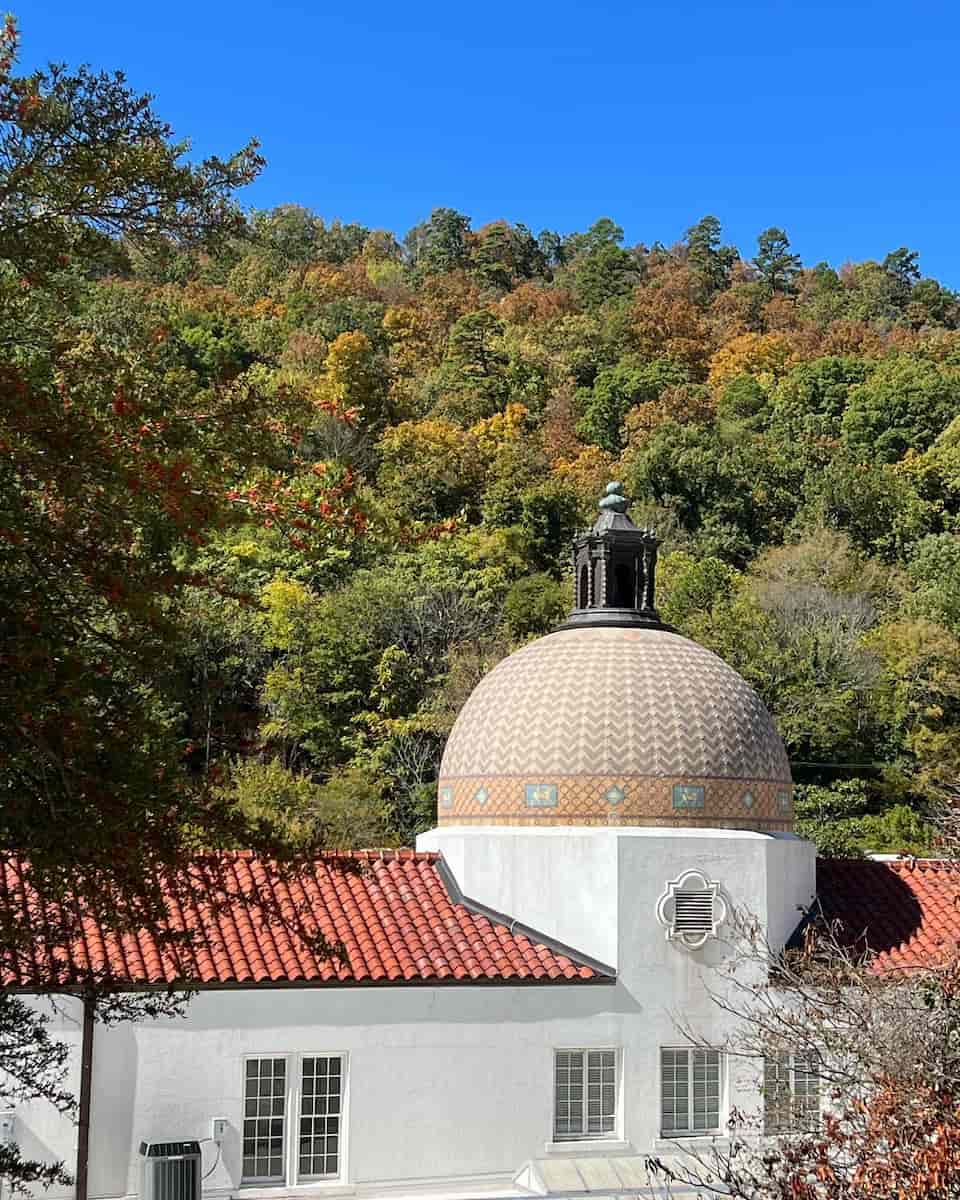

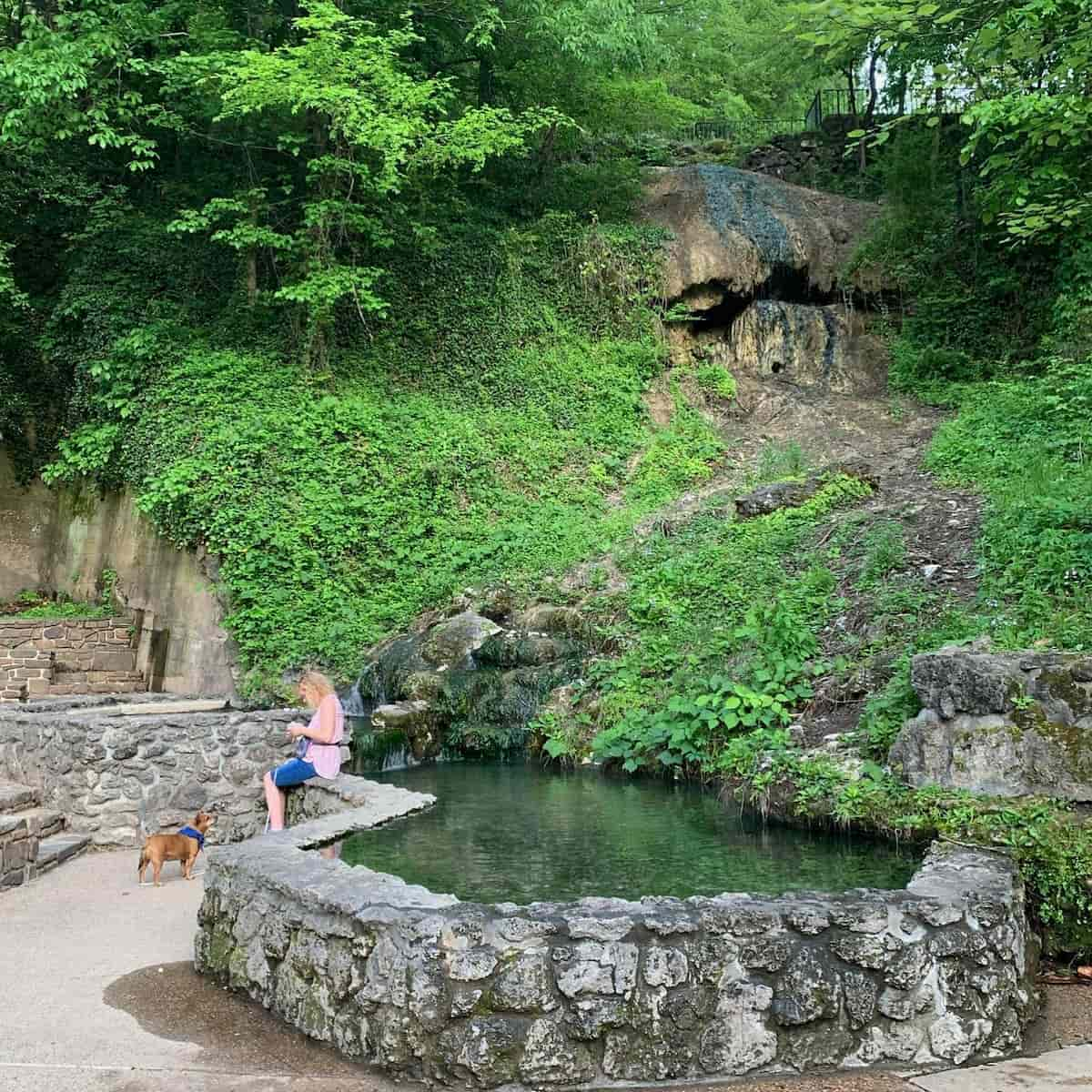
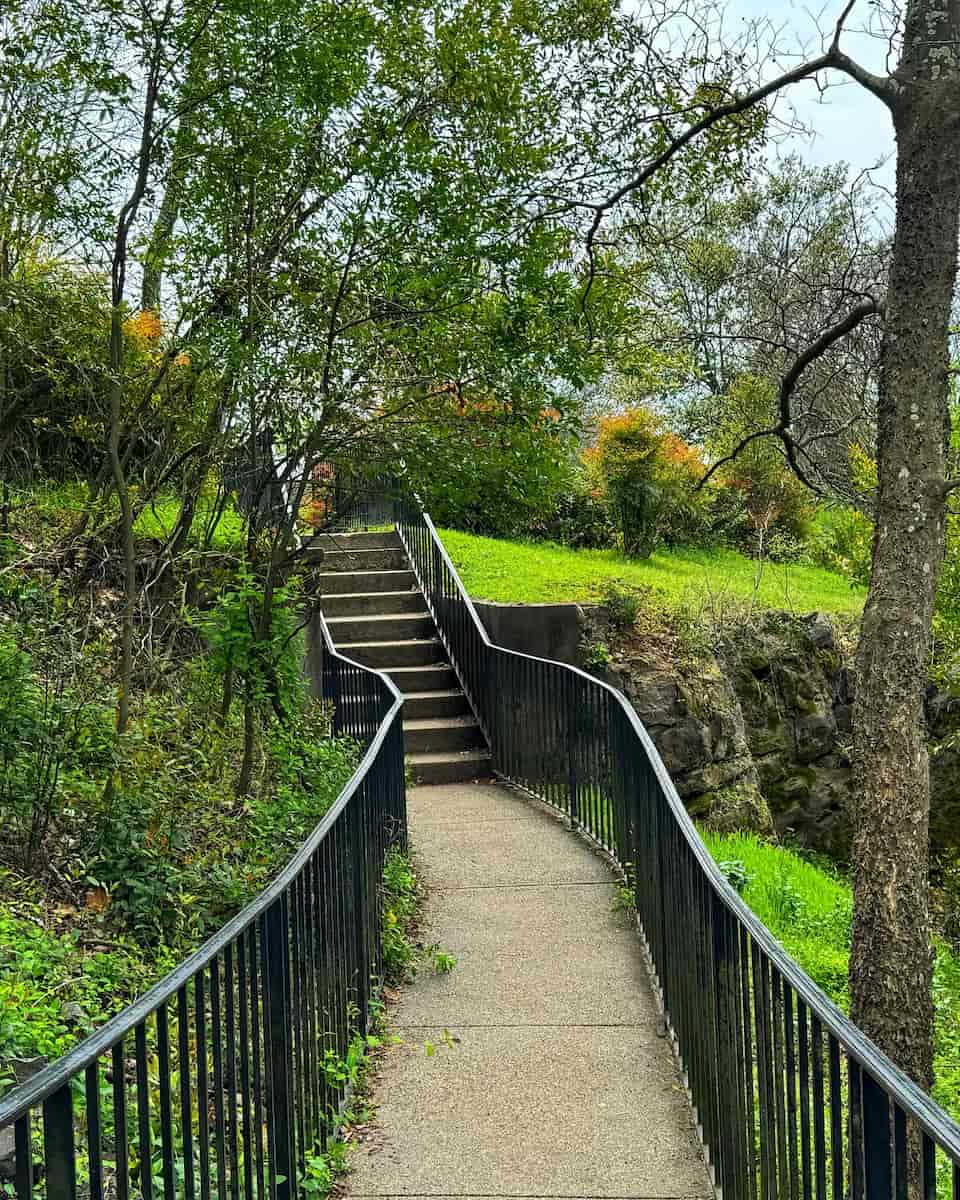
Natural Encounters. Beyond its historical aspects, the Grand Promenade offers close encounters with the park’s natural thermal features. I discovered several hot springs displays along the walkway, including small seeps where steam rises from cracks in the ground and more developed features with informational signs. The most impressive was the quartz-lined display spring that showcases the crystal-clear 143°F water bubbling up from deep underground. Standing near these thermal features, I could feel their heat and smell the slight mineral scent that characterizes these ancient waters – a sensory experience that deepened my appreciation for the park’s unique geology.
Accessibility and Ambiance. What impressed me about the Grand Promenade was its accessibility – the brick pathway is wide, relatively flat, and well-maintained, making it suitable for visitors of all mobility levels. Numerous benches along the route provide perfect spots for resting and people-watching. During my morning walks, I encountered locals power-walking for exercise, couples enjoying romantic strolls, and photographers capturing the interplay of light and steam. The atmosphere changes throughout the day, from peaceful solitude in early mornings to a more social environment as the day progresses.
| Grand Promenade Features | Location | Best Time to Visit |
|---|---|---|
| Main Entrance | Behind Fordyce Bathhouse | Any time |
| Display Hot Spring | Mid-promenade | Early morning (more steam) |
| Maurice Spring | Southern end | Afternoon (good lighting) |
| Scenic Overlook | Northern section | Sunset |
4. Street Art Tour
Urban Gallery. One of my most unexpected delights in Hot Springs was discovering the vibrant street art scene that transforms downtown into an open-air gallery. Armed with a free map from the visitor center, I embarked on a self-guided mural tour that led me through both main streets and lesser-known corners of the historic district. The “Playing Cards” mural at 204 Malvern Avenue immediately caught my eye with its larger-than-life royal flush spread across the building façade – a nod to Hot Springs’ gambling history. Each mural I discovered told a different story about the city’s rich cultural heritage.
Historical Narratives. What fascinated me most was how these artworks capture different chapters of Hot Springs’ colorful past. Standing before the “Black Broadway” mural at 350 Malvern Avenue, I learned about the vibrant African American entertainment district that once thrived here, hosting legends like Duke Ellington and Ella Fitzgerald. The “Remember” mural at 112 CA depicts the city’s heyday as a health tourism destination, with vintage-style illustrations of visitors “taking the waters.” These visual stories provided context that deepened my appreciation for Hot Springs beyond its natural attractions.
Artistic Diversity. As I continued my exploration, I was struck by the variety of artistic styles represented throughout downtown. The “Quapaw Mural” at 502 CA features bold, graphic designs inspired by Native American motifs, while “Verna’s Dream” at 320 CA employs a more photorealistic approach to celebrate local history. My personal favorite was the whimsical “SQZBX Mural” at 236 Ouachita Avenue, with its vibrant colors and playful imagery surrounding the entrance to a local pizza joint and radio station. Each piece reflected not just different artistic visions but also the diverse communities that have shaped Hot Springs over generations.
Interactive Experience. What makes this free attraction particularly engaging is its interactive nature. Unlike museum art viewed from behind velvet ropes, these murals invite physical interaction and photography. I watched families posing for photos, children pointing out details, and artists sketching interpretations. Many murals include QR codes that link to information about the artists and historical context, adding an educational dimension to the experience. The scattered locations of the artworks also led me to discover charming shops and cafes I might otherwise have missed.
| Notable Murals | Location | Artist | Theme |
|---|---|---|---|
| “Playing Cards” | 204 Malvern Ave | Pepe Gaka | Gambling history |
| “Black Broadway” | 350 Malvern Ave | Adrien Heckstall | African American heritage |
| “Quapaw Mural” | 502 Central Ave | Collaborative | Native American influence |
| “Sister City Mural” | 833 Central Ave | Pepe Gaka | International connections |
Seasonal Events in Hot Springs
Spring Blooms and Festivals
Tulip Spectacle. My first spring visit to Hot Springs coincided with the Tulip Extravaganza at Garvan Woodland Gardens, and I’m still dreaming about those vibrant colors. Scheduled for March 1, this annual event transforms the already beautiful botanical gardens into a kaleidoscope of over 150,000 tulips in full bloom. I spent hours wandering through meticulously designed beds where crimson, yellow, and purple blooms created patterns that looked almost too perfect to be natural. The morning light filtering through the trees cast a magical glow on the petals, creating ideal conditions for photography enthusiasts like myself.
Cultural Celebration. One of my most unexpected discoveries was the Arkansas Cherry Blossom Festival, scheduled for April 11-12. This free event celebrates Japanese culture with performances that engage all your senses. I watched in awe as the St. Louis Osuwa Taiko drummers created thunderous rhythms that you could feel reverberating through your chest. The elegant movements of traditional Japanese dancers in vibrant kimonos provided a beautiful contrast to the energetic drumming. What made this festival particularly special was its authentic cultural immersion – from hands-on workshops in kintsugi (the art of repairing broken pottery with gold) to traditional tea ceremonies that taught me the mindfulness behind this ancient ritual.
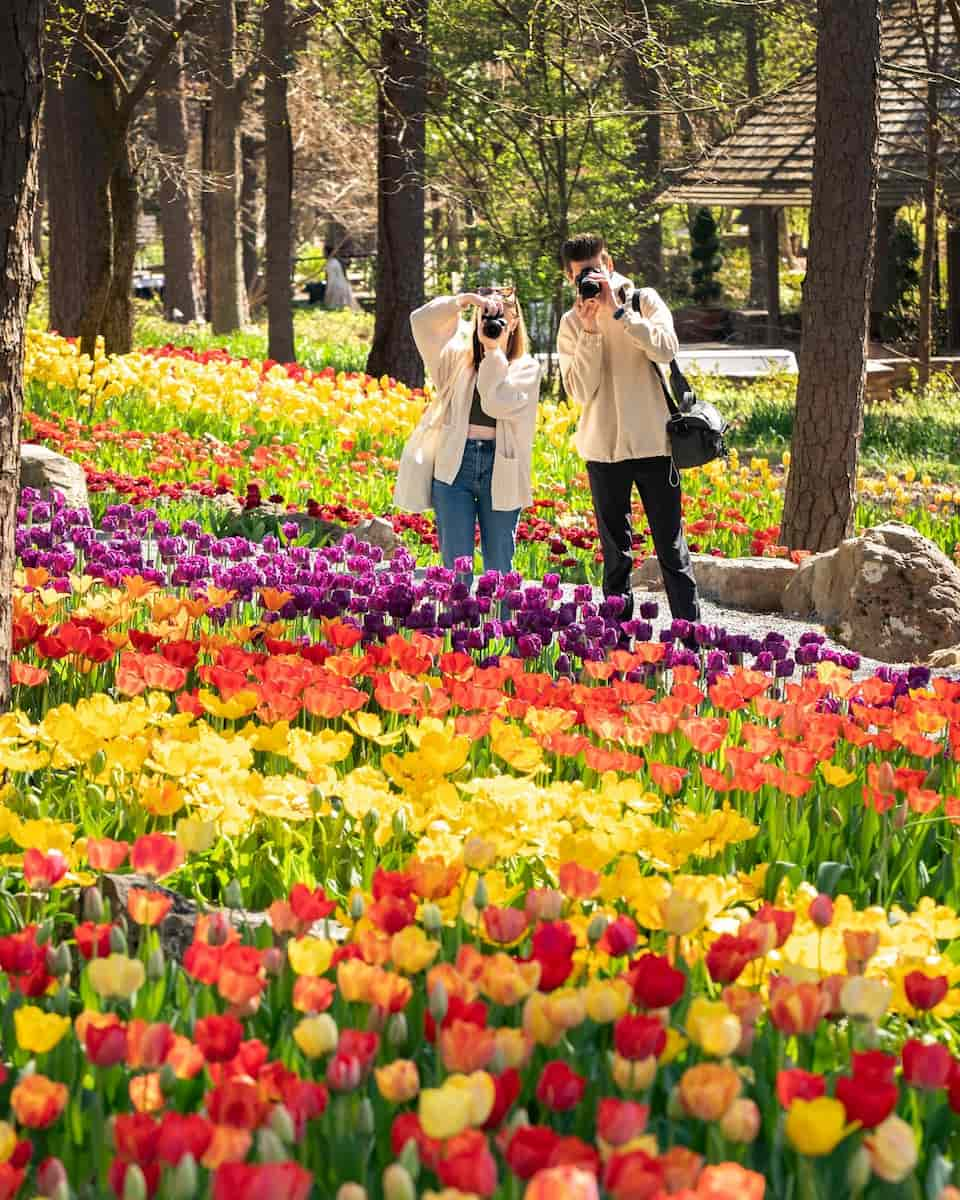
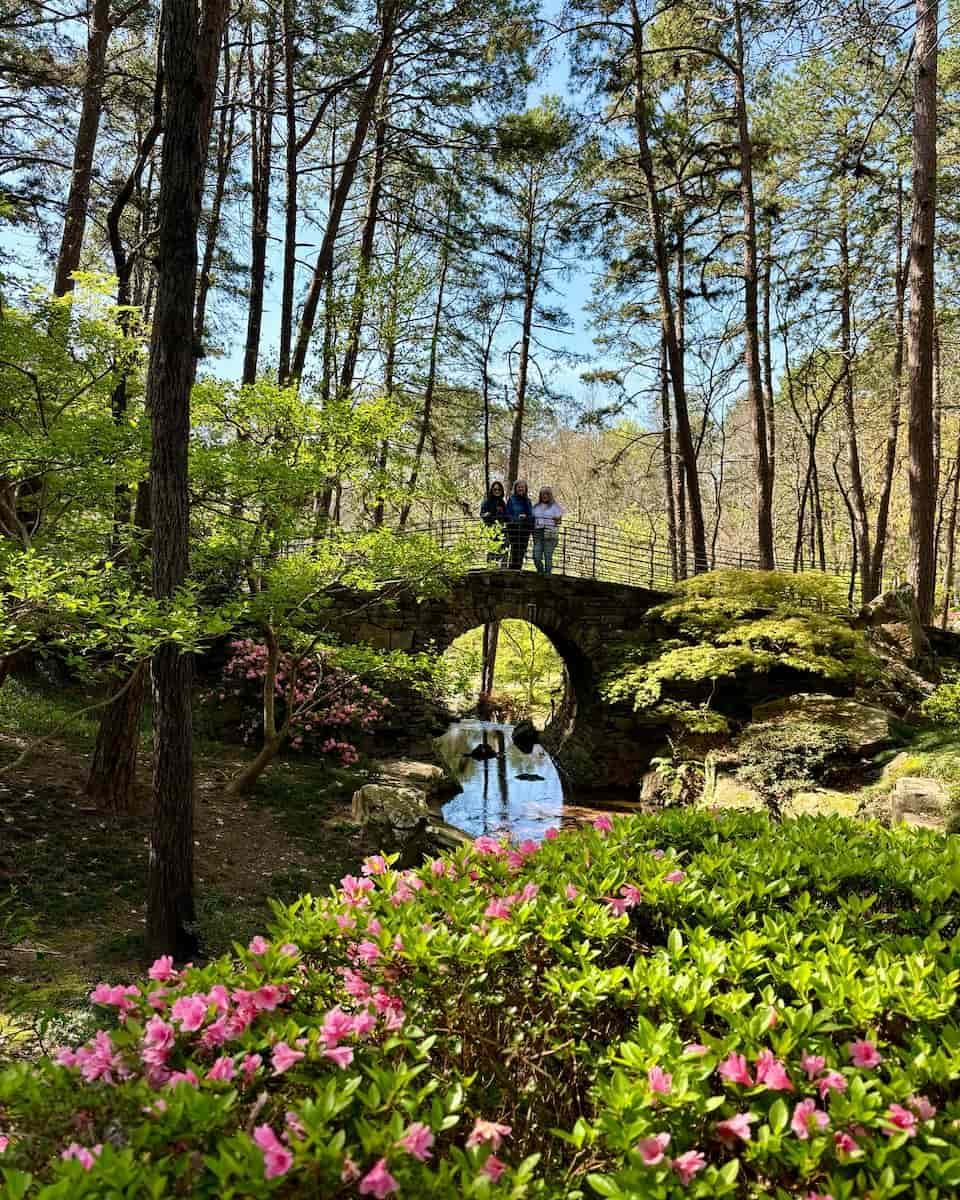
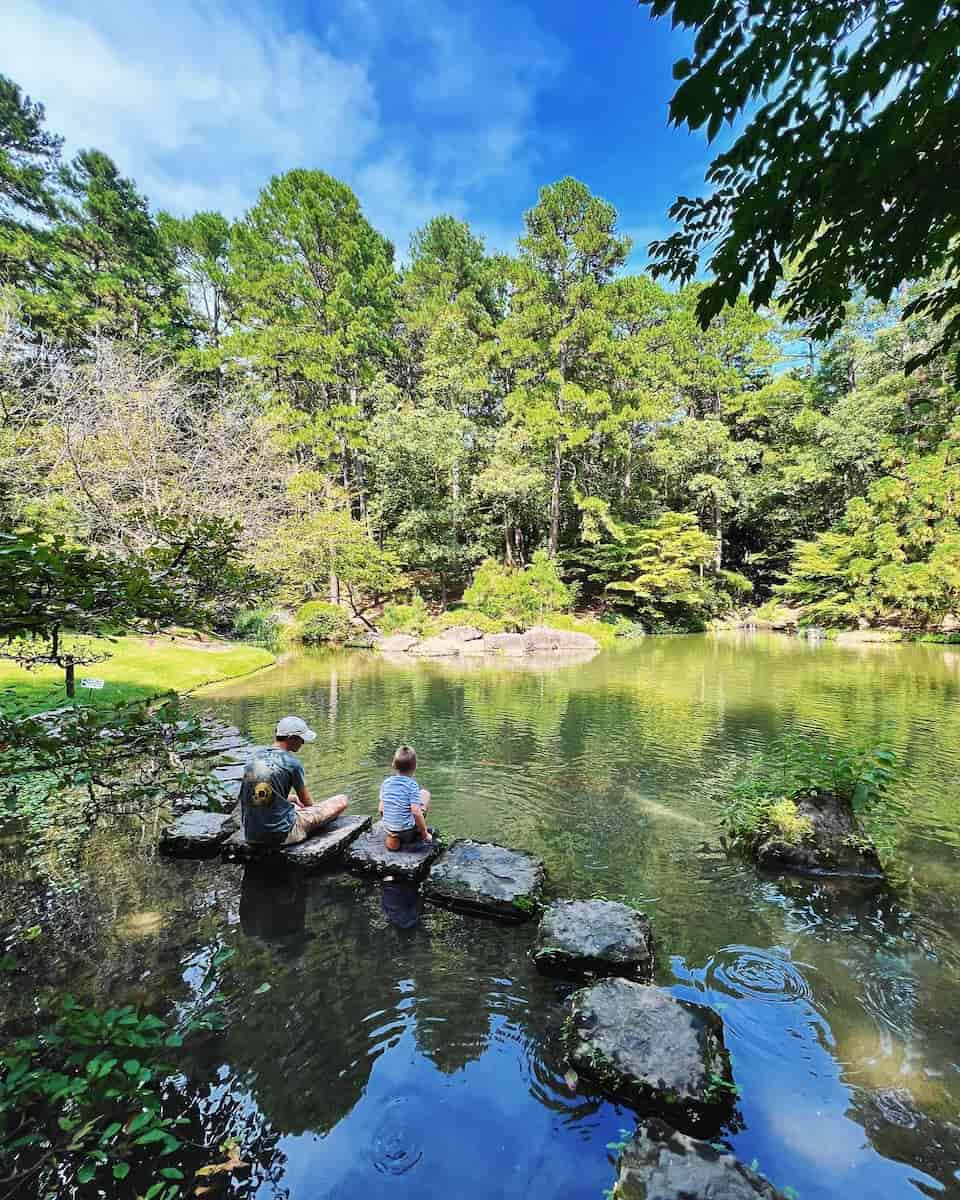
Quirky Traditions. Nothing prepared me for the delightful absurdity of the World’s Shortest St. Patrick’s Day Parade, happening March 17. Taking place on 98-foot Bridge Street, this event packs more entertainment into its tiny route than parades ten times its size. I joined thousands of spectators lining both sides of the world’s shortest street in everyday use, cheering as celebrities, quirky floats, and green-clad revelers passed by. The festive atmosphere was infectious – complete strangers became fast friends as we shared laughs and the occasional green beer from nearby pubs. The celebration continues well into the evening with the Bridge Street LIVE! Entertainment District hosting live music and dancing.
Racing Excitement. The thundering of hooves and roar of the crowd at Oaklawn Hot Springs created one of my most exhilarating spring experiences. The thoroughbred racing season extends through spring, culminating with the prestigious Arkansas Derby on March 29. I spent a thrilling afternoon at the track, the smell of fresh popcorn mixing with the earthy scent of the track as magnificent horses thundered past. What surprised me most was the accessibility – general admission is free, making this an affordable entertainment option. Even as a racing novice, I found the atmosphere electric and the experience addictive, especially when my modest $2 bet on a longshot actually paid off!
| Spring Event | Dates | Admission | Location |
|---|---|---|---|
| Tulip Extravaganza | March 1 | $15 adults, $5 children | Garvan Woodland Gardens |
| World’s Shortest St. Patrick’s Day Parade | March 17 | Free | Bridge Street |
| Arkansas Derby | March 29 | Free general admission | Oaklawn Racing Casino Resort |
| Cherry Blossom Festival | April 11-12 | Free | Downtown Hot Springs |
Summer Entertainment
Bathtub Races. I never imagined I’d find myself cheering for people racing decorated bathtubs down Central Avenue, but the World Championship Running of the Tubs on June 6-7, proved to be one of my most memorable Hot Springs experiences. This wacky event pays homage to the city’s bathhouse heritage in the most hilarious way possible. Teams dressed in bathrobes and slippers push decorated tubs on wheels while spectators armed with super soakers try to slow them down. I laughed until my sides hurt watching the creative costumes and inevitable mishaps. The competitive spirit was surprisingly intense – these teams take their bathtub racing seriously despite the absurdity of it all!
Musical Evenings. The summer soundtrack of Hot Springs came alive for me during the Bridge Street LIVE! Concert Series, happening every Thursday in June. I joined locals and visitors alike for this weekly block party featuring free live music ranging from blues and jazz to rock and country. The atmosphere was electric yet relaxed – families spread blankets on grassy areas while others danced on the street. Local food vendors offered everything from barbecue to artisanal ice cream, creating a feast for all senses. The music echoed off the historic buildings, creating a natural amphitheater effect that enhanced the performances. What I appreciated most was the genuine community feel – this wasn’t a tourist trap but an authentic local gathering that welcomed visitors. I also caught glimpses of the city’s music scene, which reminded me of what I might expect at vapors independent music festival.
Lakeside Celebrations. One of my most magical summer evenings in Hot Springs was spent watching fireworks illuminate Lake Hamilton during the Fourth of July celebration. The reflection of colorful explosions dancing across the water’s surface created a double display that had me mesmerized. I followed a local’s advice and booked a spot on one of the dinner cruise boats (approximately $65 per person) for an unobstructed view away from the crowds. The gentle rocking of the boat, the collective “oohs” and “aahs” from fellow passengers, and the spectacular finale of red, white, and blue bursts created a perfect summer memory. Similar displays occur on Memorial Day and Labor Day, offering multiple opportunities to experience this spectacular show.
Baseball Heritage. I discovered Hot Springs’ surprising connection to America’s favorite pastime during Baseball Weekend, scheduled for August 8-9. Few visitors realize that Hot Springs was once the birthplace of Major League Spring Training, attracting legends like Babe Ruth and Cy Young who came to “boil out” the toxins of off-season indulgences. The weekend features appearances by former Major Leaguers, historic tours of training sites, vintage baseball games played by 19th-century rules, and various sporting events.
| Summer Event | Dates | Admission | Location |
|---|---|---|---|
| Running of the Tubs | June 6-7 | Free | Bathhouse Row |
| Bridge Street LIVE! Concerts | Thursdays in June | Free | Bridge Street |
| Fourth of July Fireworks | July 4 (rain date July 5) | Free (viewing areas) | Lake Hamilton |
| Baseball Weekend | August 8-9 | Varies by event | Downtown Hot Springs |
Fall Foliage and Events
Mountain Biking Festival. My fall visit to Hot Springs coincided with the Güdrun Mountain Biking Festival, scheduled for November 7-9, and it revealed a side of the city I hadn’t expected. It’s now one of my favourite festivals in North America. The Northwoods Trails system transforms into a hub of activity as mountain bikers from across the country descend on Hot Springs for this three-day celebration of all things off-road cycling. Even as a casual rider, I found the festival welcoming and inclusive. I rented a bike from a local outfitter ($45 for a half-day) and joined a guided “beginner-friendly” group ride through Hot Springs Off-Road Park, where forests ablaze with autumn colours provided the perfect backdrop. The crisp fall air filled with the earthy scent of fallen leaves created ideal riding conditions, while the camaraderie among participants made me feel instantly connected to this passionate community. Besides the mountain biking, the festival also featured some exciting racing and gaming events that added an extra layer of fun and excitement to the atmosphere.
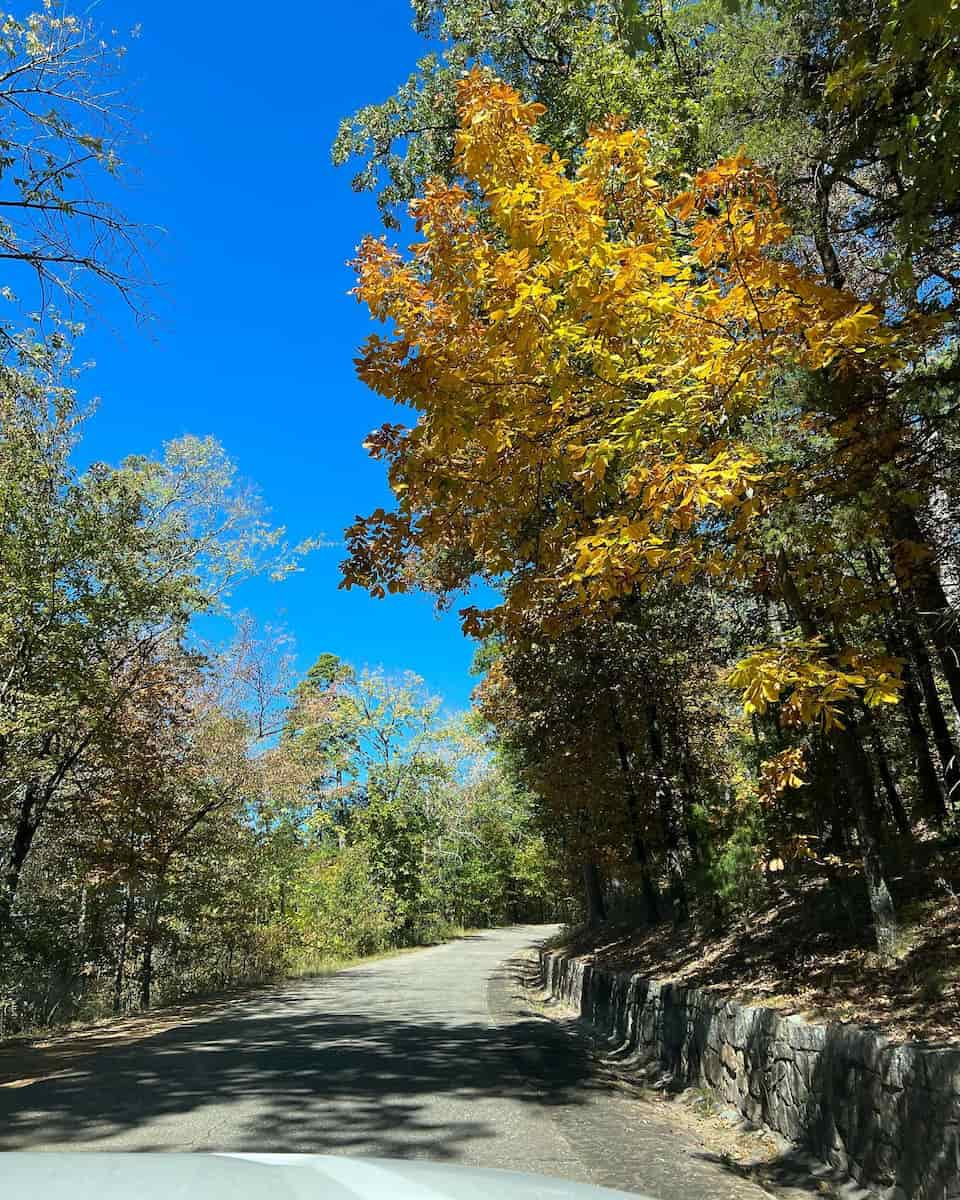
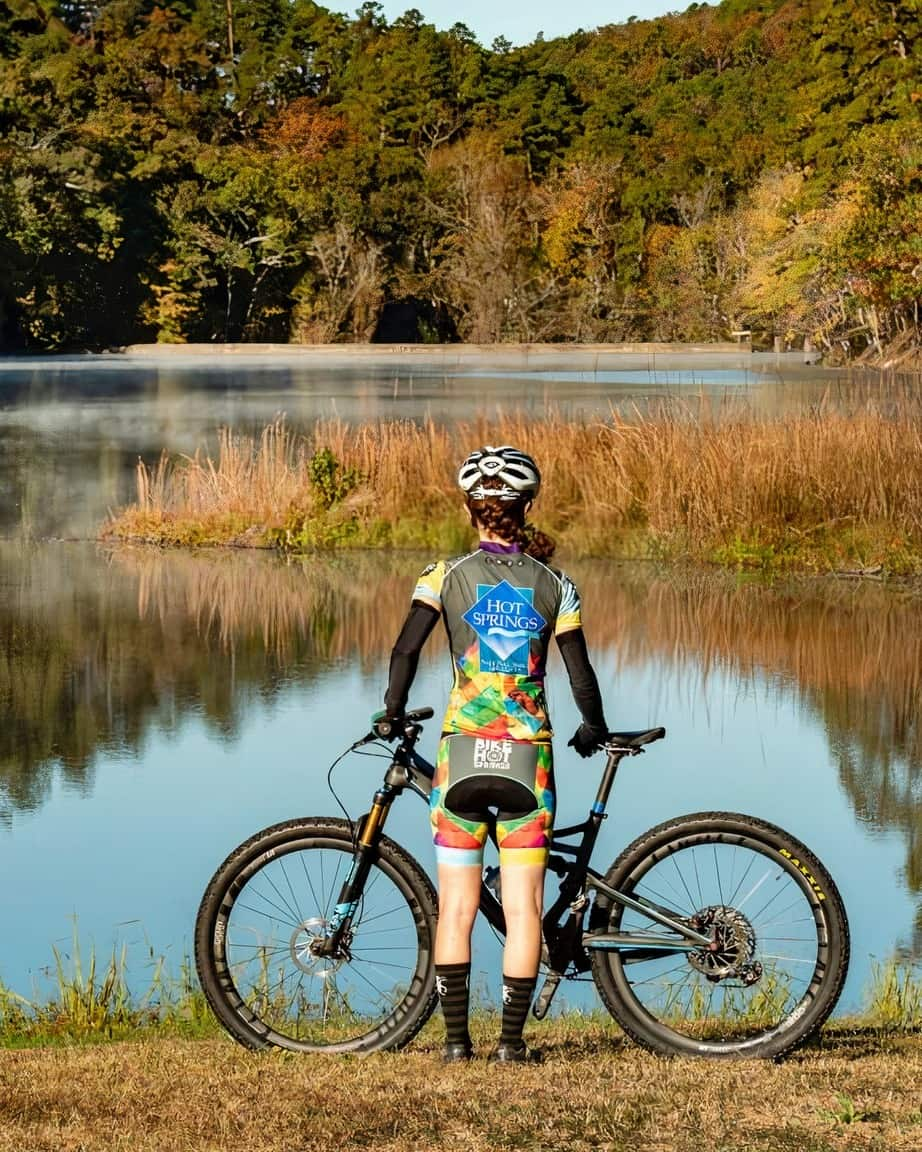
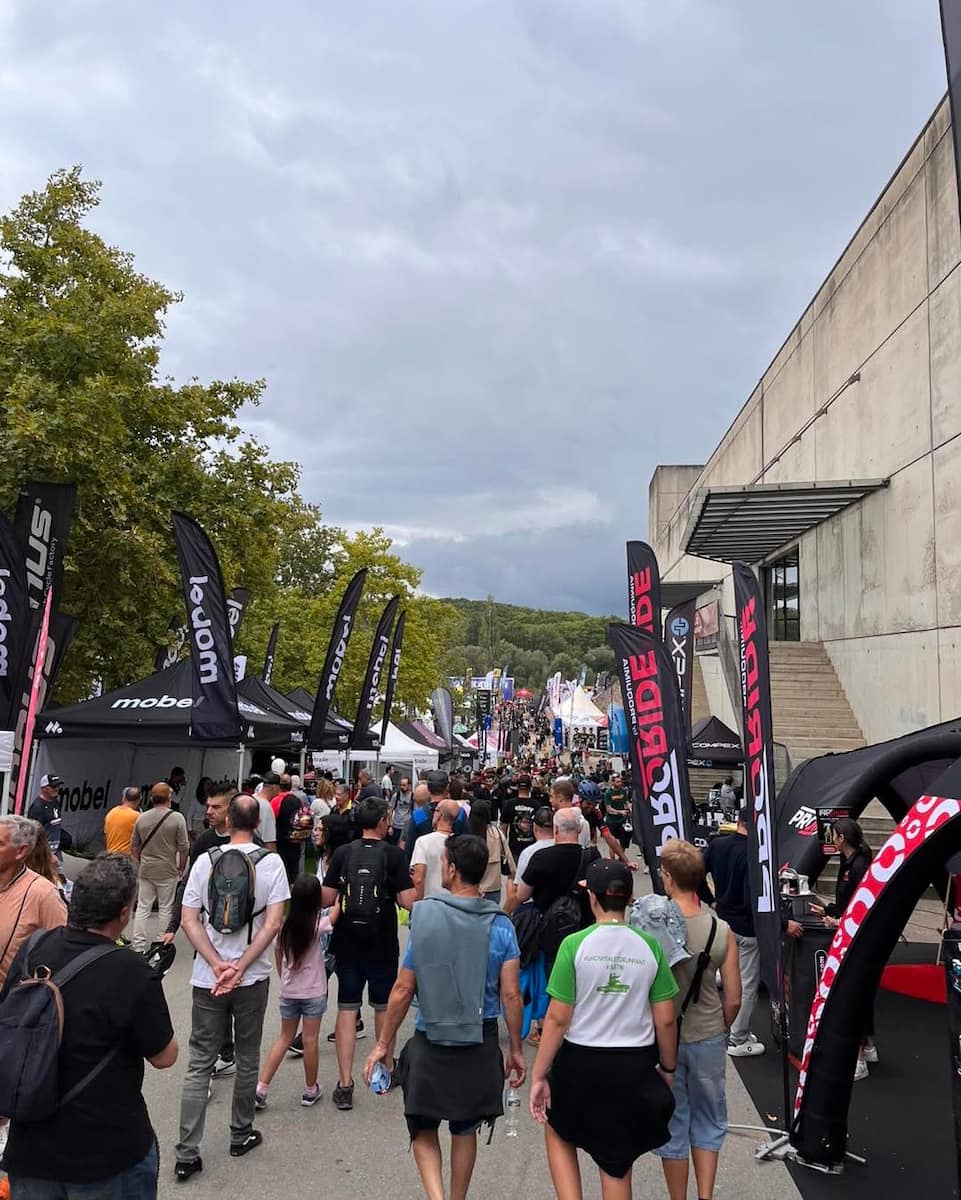
Film Culture. The Hot Springs Documentary Film Festival (October 10-18) surprised me with its world-class programming and intimate atmosphere. As North America’s longest-running documentary film festival and an Academy Award qualifier, it attracts compelling stories and filmmakers from around the globe. I spent three days immersed in powerful documentaries, attending filmmaker Q&As, and even bumping into directors and producers at local cafes between screenings. What makes this festival special is its accessibility – unlike larger festivals where celebrities remain distant, here I found myself discussing film techniques with award-winning documentarians over coffee at Kollective Coffee+Tea. The historic Malco Theatre and other venues around downtown create perfect settings for this celebration of non-fiction storytelling.
| Fall Event | Dates | Admission | Location |
|---|---|---|---|
| Spa-Con | September 19-21 | $25-75 (varies by pass type) | Hot Springs Convention Center |
| Documentary Film Festival | October 10-18 | $12 single screening, $150 all-access pass | Various downtown venues |
| Güdrun MTB Festival | November 7-9 | $45-120 (varies by events) | Northwoods Trails |
| Tom Daniel Chili Cook-Off | November 24 | $15 all-you-can-eat | Exchange Street Parking Deck |
Winter Holidays and Celebrations
Illuminated Gardens. My most magical winter trip to Hot Springs was spent wandering through Garvan Woodland Gardens’ Holiday Lights display, running from late November through January 1. Over 7 million lights transform this botanical wonderland into an enchanted forest that had me gasping with childlike wonder at every turn. Towering trees wrapped in colorful lights reflected in the garden’s ponds, while animated light displays of woodland creatures seemed to dance among the natural landscape. The crisp winter air carried the scent of pine and hot chocolate as I followed illuminated pathways through themed sections. The Anthony Chapel, with its soaring glass walls, became even more breathtaking when surrounded by the glow of thousands of twinkling lights.
Racing Season Kickoff. I discovered a unique winter tradition at Oaklawn Hot Springs, where the thoroughbred racing season begins in January with special themed weekends that draw crowds despite the cooler temperatures. Smarty Jones Day (January 4) commemorates one of Arkansas’s most famous racehorses with special races and festivities. The excitement in the grandstands was contagious as bundled-up spectators cheered their favorites to victory. The heated indoor areas provided comfortable retreats between races, where I enjoyed hot food and lively conversation with local racing fans.
Film Festival. The Persistence of Vision Film Festival (January 3-5) offered a perfect indoor activity during my winter visit. Housed in the historic Malco Theatre on CA, this celebration of short films provided a fascinating glimpse into the creative minds of filmmakers from Arkansas and beyond. The intimate theater setting created a communal viewing experience, with audience reactions becoming part of the enjoyment. Between screening blocks, I explored nearby cafes where festival-goers and filmmakers engaged in passionate discussions about the films we’d just watched.
| Winter Event | Dates | Admission | Location |
|---|---|---|---|
| Holiday Lights at Garvan Gardens | Late Nov – Jan 1 | $15 adults, $5 children | Garvan Woodland Gardens |
| Hot Springs Christmas Parade | First week of December | Free | Downtown CA |
| Persistence of Vision Film Festival | January 3-5 | $10 per block, $45 all-access | Malco Theatre |
| Smarty Jones Day Racing | January 4 | Free general admission | Oaklawn Racing Casino Resort |
Day Trips from Hot Springs
1. Crater of Diamonds State Park
Treasure Hunting. I still remember the thrill of digging my hands into the dark soil at Crater of Diamonds State Park, located about 60 miles southwest of Hot Springs near Murfreesboro. This 37.5-acre plowed field is the only public diamond mine in the world where visitors can search for and keep what they find. During my visit, a family three plots away found a small white diamond, and the collective excitement that rippled through the field was contagious.
Digging Experience. Armed with rented tools from the park visitor center (basic kit: $10 with a $35 refundable deposit), I spent a fascinating day sifting through soil using various methods demonstrated by helpful park staff. The field is regularly plowed to bring new diamonds to the surface, and recent rainfall had created ideal searching conditions. While I didn’t find a diamond, I discovered several pieces of jasper and quartz that made beautiful souvenirs.
Beyond Diamonds. What surprised me most about Crater of Diamonds was how much there is to do beyond the diamond field. After several hours of searching, I cooled off at the water park area (included with admission), which features a wading pool and water playground perfect for families. The visitor center houses fascinating exhibits on the area’s geological history and displays of significant diamond finds, including the 40.23-carat “Uncle Sam” diamond, the largest ever found in North America.
Natural Setting. The park’s location along the Little Missouri River creates a picturesque setting that contrasts beautifully with the exposed diamond field. The well-maintained picnic areas nestled under shade trees offered perfect spots for a lunch break with scenic views. For those drawn to the natural beauty and geology of Arkansas, combining a trip to Crater of Diamonds with a visit to a quartz crystal mine like Ron Coleman’s makes for a well-rounded adventure into the state’s hidden underground treasures.
| Admission | Price |
|---|---|
| Adults (13+) | $15 |
| Children (6-12) | $10 |
| Children under 6 | Free |
| 20-Admission Pass | $150 |
2. Little Rock
Capital Culture. Just 55 miles northeast of Hot Springs, I discovered that Arkansas’s capital city offers a perfect day trip filled with historical sites, cultural attractions, and urban energy that complements Hot Springs’ more natural appeal. My day began at the William J. Clinton Presidential Library, an impressive glass and steel structure overlooking the Arkansas River. Inside, I explored detailed exhibits chronicling Clinton’s presidency, including a full-scale replica of the Oval Office where I sat at the presidential desk.
Civil Rights History. The most moving part of my Little Rock visit was undoubtedly Little Rock Central High School National Historic Site. Standing before this still-functioning school where the “Little Rock Nine” braved angry mobs to integrate the all-white school in 1957 gave me chills. The visitor center across the street provides powerful exhibits with photographs and audio recordings that transport you back to this pivotal moment in civil rights history.
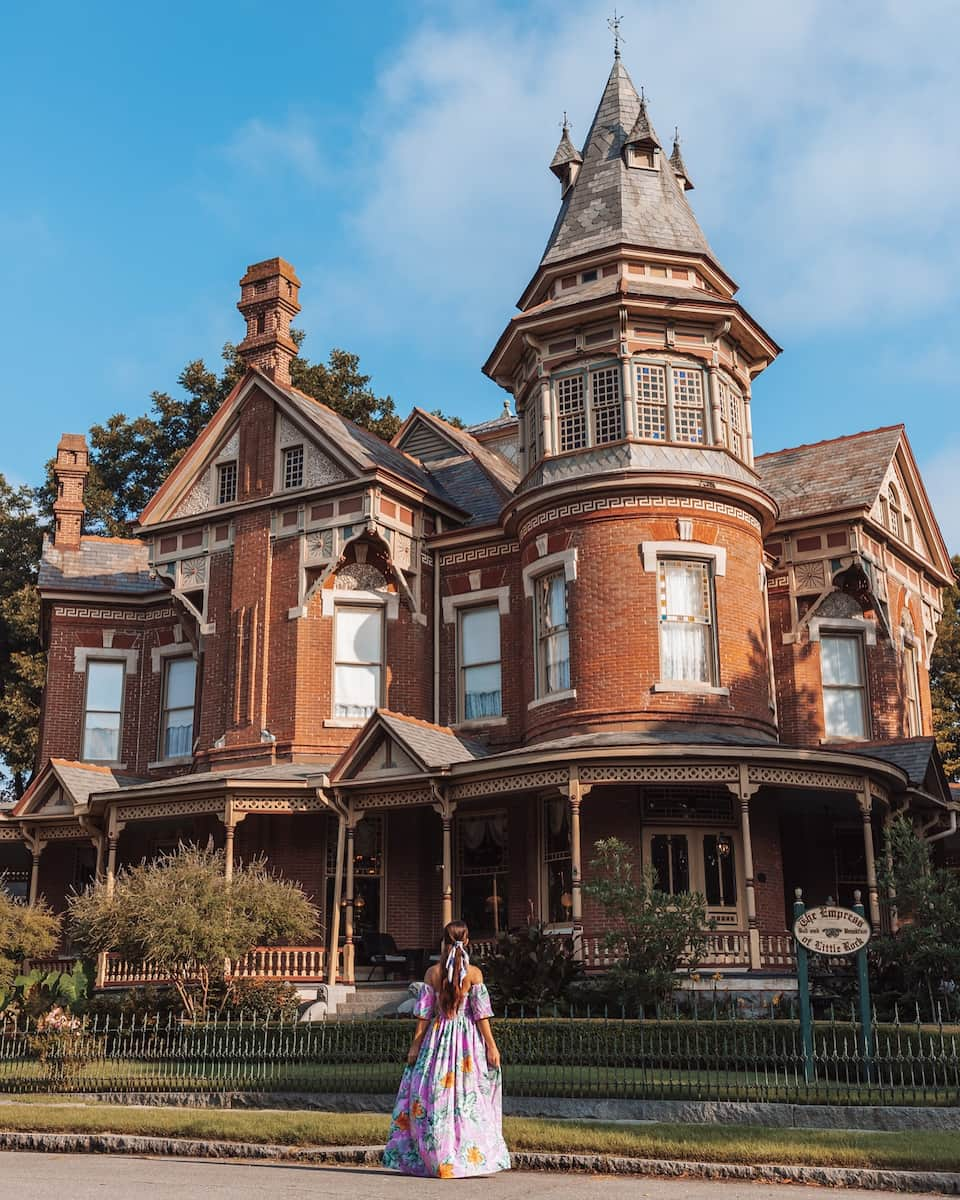
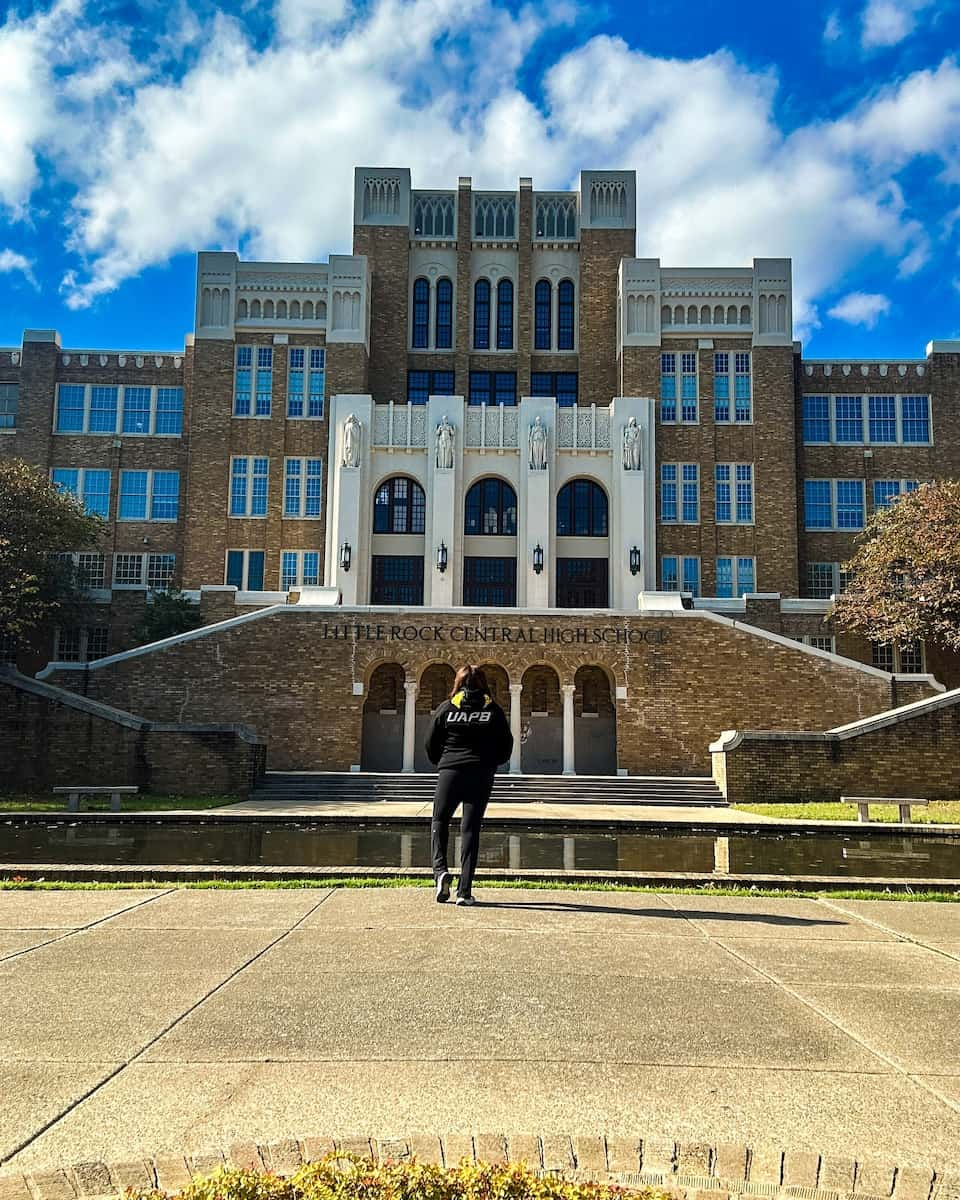
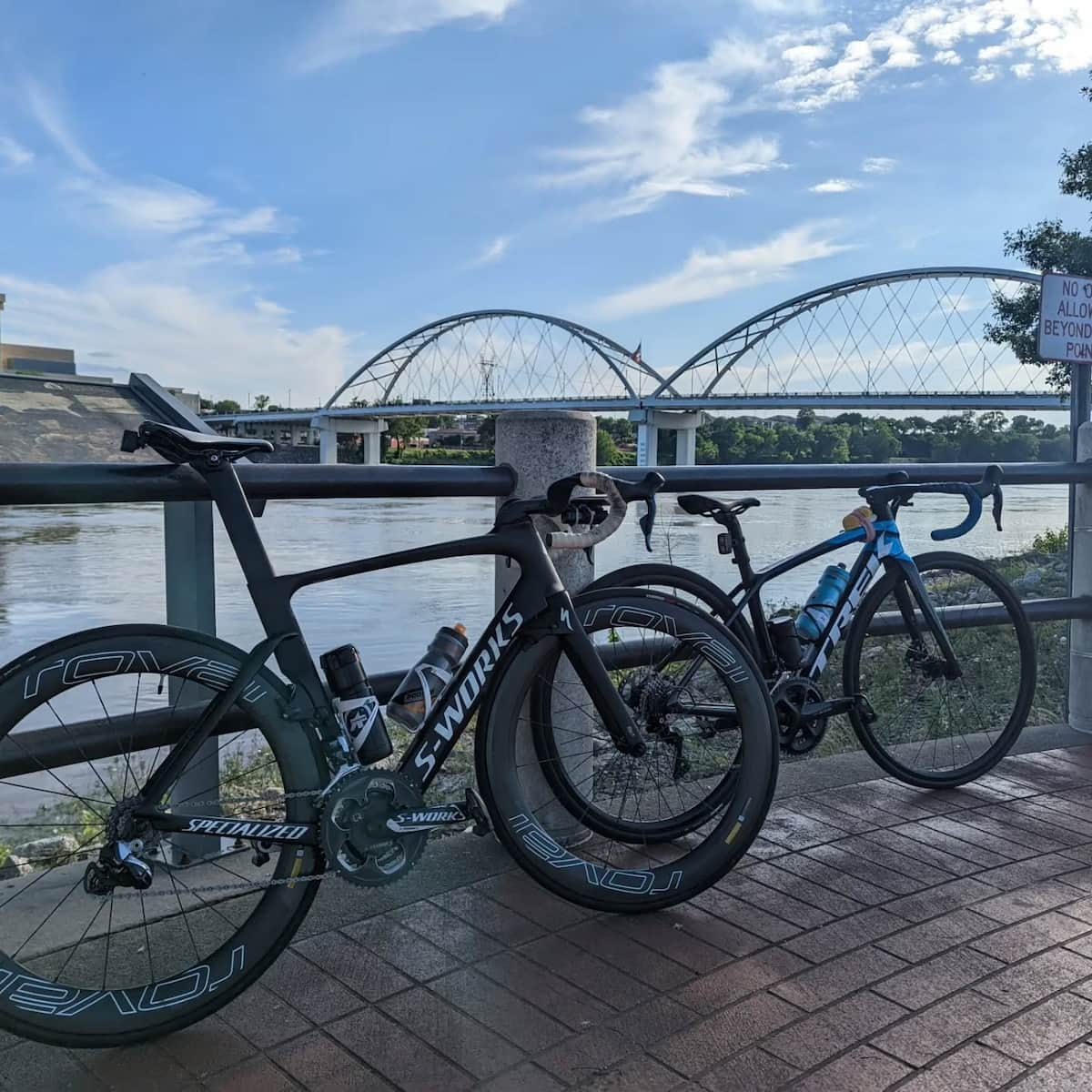
Riverside Recreation. After these more serious historical sites, I needed something lighter, so I headed to the Arkansas River Trail system. Renting a bike from Bobby’s Bike Hike ($15/hour), I cycled across the impressive Big Dam Bridge – at 4,226 feet, it’s North America’s longest pedestrian and cycling bridge built specifically for that purpose. The panoramic views of the Arkansas River from the bridge were spectacular, with the city skyline creating a perfect backdrop.
Culinary Exploration. My appetite worked up from cycling, I ventured to the River Market District, where the indoor market hall and surrounding streets house a variety of food vendors and restaurants. I opted for a late lunch at Three Fold Noodles & Dumpling Co. on Center Street, where the hand-made dumplings and chewy noodles rivaled anything I’ve had in larger cities.
| Little Rock Attraction | Admission | Hours |
|---|---|---|
| Clinton Presidential Library | $12 adults, $6 seniors/students | 9 AM – 5 PM |
| Central High Visitor Center | Free | 9 AM – 4:30 PM |
| Museum of Discovery | $10 adults, $8 children | 9 AM – 5 PM |
| Big Dam Bridge | Free | 24 hours |
⭐ Best Activities
- Wacky Walk Adventure Game Santa Clara – Turn Little Rock into your playground with this interactive scavenger hunt game. Ideal for families, friends, or anyone ready for a quirky urban adventure!
3. Lake Ouachita State Park
Crystal Waters. Just 30 minutes from Hot Springs, I discovered what locals call “Arkansas’s crown jewel” – Lake Ouachita State Park. This pristine reservoir boasts 40,000 acres of crystal-clear water surrounded by the verdant Ouachita National Forest. What immediately struck me was the water’s remarkable clarity – designated as one of the cleanest lakes in America, I could see several feet down to the rocky bottom near the shoreline.
Water Adventures. Renting a kayak from the marina ($40/day or $25/half-day), I spent a blissful morning paddling along the shoreline, exploring hidden coves and uninhabited islands. The calm waters made paddling easy even for a novice like me, while the surrounding forest created a peaceful soundtrack of rustling leaves and birdsong. For those seeking more excitement, the marina also offers fishing boats, party barges, and water sports equipment.
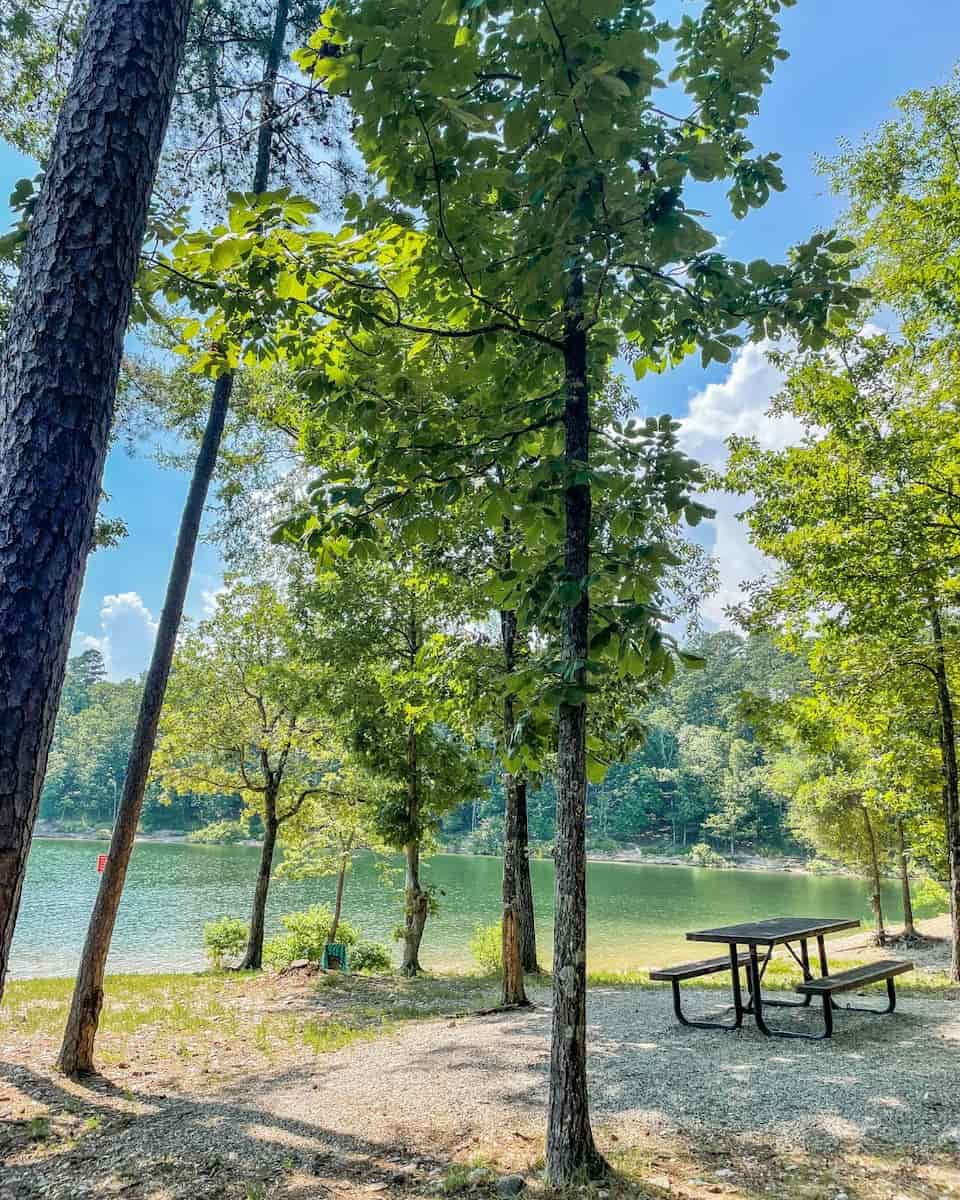

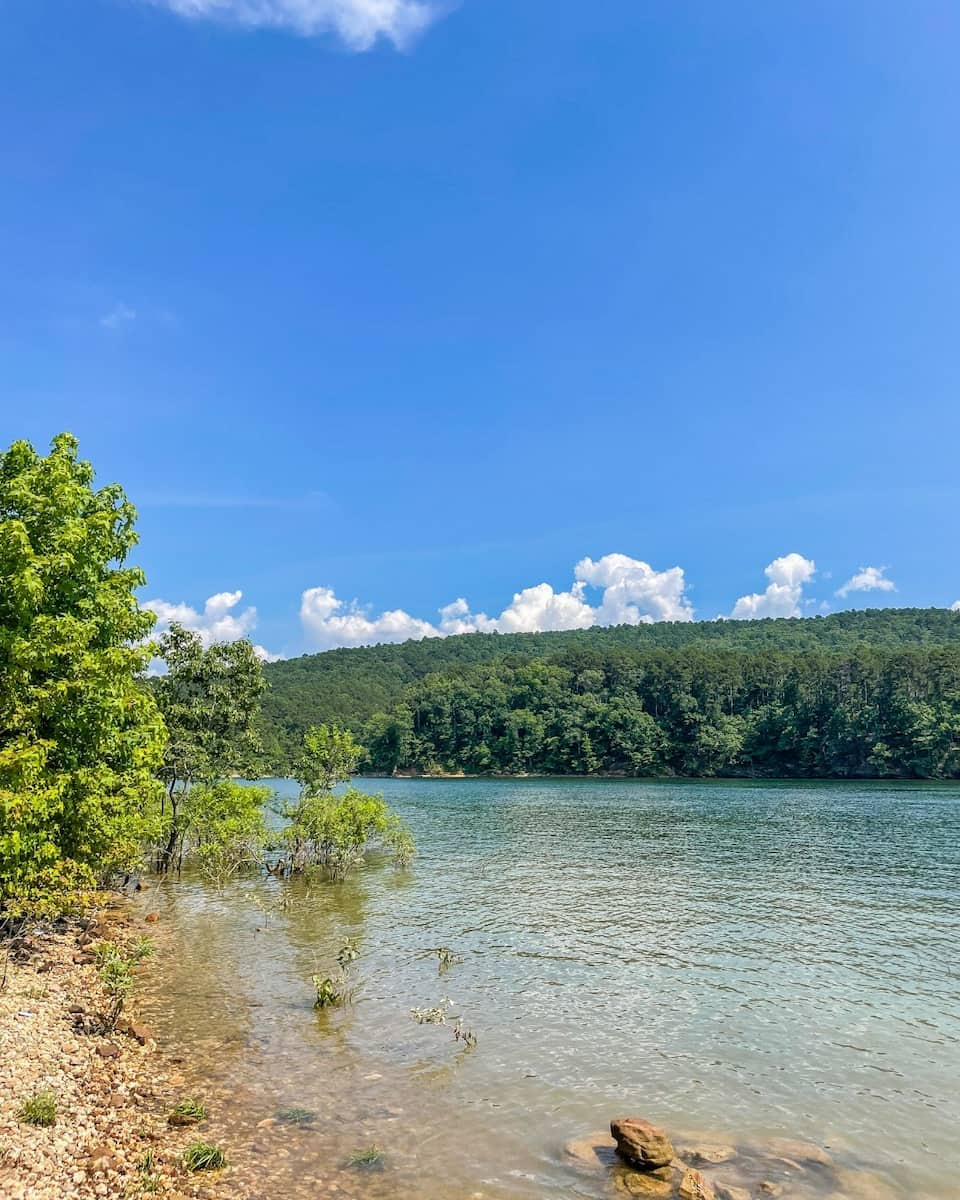
Hiking Trails. After returning my kayak, I explored the park’s well-maintained hiking trails. The Caddo Bend Trail, a moderate 4-mile loop, led me through diverse forest ecosystems and rewarded me with spectacular lake vistas from rocky outcroppings. What made this hike special was the variety of terrain – from dense woods to open meadows filled with wildflowers, and finally to dramatic overlooks where the expansive blue lake stretched to the horizon.
Visitor Amenities. The park’s facilities impressed me with their quality and cleanliness. The visitor center houses informative exhibits on lake ecology and offers free maps and trail guides. I particularly enjoyed the large three-dimensional model of the lake that helped me understand its massive scale and intricate shoreline. The park also features modern cabins for overnight stays, though I wasn’t staying the night.
| Rental Options | Full Day | Half Day | Hourly |
|---|---|---|---|
| Solo Kayak | $40 | $25 | $12.50 |
| Tandem Kayak | $50 | $30 | $15 |
| Fishing Boat | $265-350 | $200-265 | N/A |
| Party Barge | $440 | $380 | N/A |
| Pedal Boat | N/A | N/A | $10 |
4. Daisy State Park and Lake Greeson
Hidden Gem. About 60 miles southwest of Hot Springs, I discovered the tranquil beauty of Daisy State Park nestled along the shores of Lake Greeson. This lesser-known destination offered a welcome escape from the more crowded attractions closer to Hot Springs. As I drove through the park entrance (day pass: $15), the first thing that struck me was the pristine setting – 7,000 acres of clear blue water surrounded by the rolling mountains covered in pine and hardwood forests.
Waterfall Wonder. The highlight of my visit was undoubtedly the hike to Falls Creek Falls, a moderate 1.7-mile round trip that follows the shoreline before turning inland toward the falls. When I finally rounded a bend and saw the falls, I understood why this is considered one of the Ouachitas’ most beloved swimming holes. The 12-foot waterfall cascades over moss-covered rocks into a crystal-clear turquoise pool, creating a scene that looks like it belongs on a postcard. I spent nearly an hour here, dipping my feet in the refreshingly cool water and listening to the soothing sound of falling water.
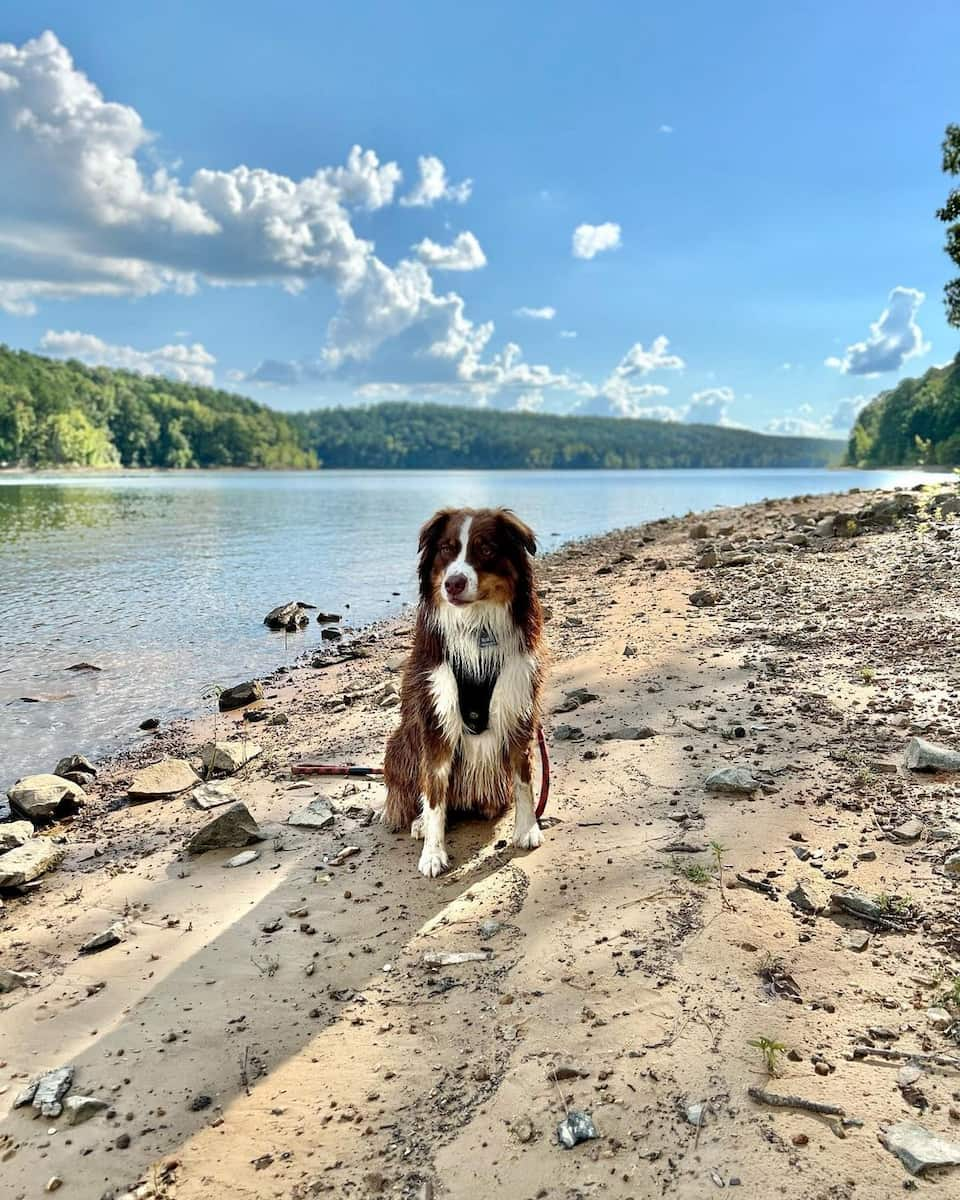


Lake Activities. Returning to the main park area, I rented a kayak from the marina ($15/hour) to explore Lake Greeson’s clear waters. Paddling along the shoreline, I discovered secluded coves and inlets impossible to reach by land. The lake is renowned for its fishing, and I watched several anglers reeling in impressive catches of bass, crappie, and catfish. One friendly local fisherman showed me his morning catch of striped bass and shared tips on the best fishing spots.
Evening Magic. One unexpected delight was participating in the park’s stargazing program led by a knowledgeable park interpreter. As darkness fell, we gathered at an open area away from lights where the night sky revealed itself in spectacular fashion. The lack of light pollution allowed the Milky Way to shine in brilliant detail, while the interpreter pointed out constellations and planets with a laser pointer. Through provided telescopes, I observed Saturn’s rings and Jupiter’s moons – celestial sights impossible to see from more populated areas.
| Daisy State Park Information | Details |
|---|---|
| Day Use Fee | $15 per vehicle |
| Boat Rental (Kayak) | $15/hour, $40/day |
| Camping | $25-32/night (if you want to stay) |
| Operating Hours | 8 AM – sunset (day use areas) |
FAQs about Visiting Hot Springs, Arkansas
1. When is the best time to visit Hot Springs?
Spring (April-May) and fall (September-October) offer the most pleasant temperatures and beautiful scenery. Summer provides full access to water activities but can be hot and crowded. Winter offers fewer crowds and holiday events, though some outdoor attractions may have limited hours.
2. Are the thermal baths safe for everyone?
Most people can safely enjoy the thermal baths, but those with certain medical conditions (heart problems, pregnancy, high blood pressure) should consult a doctor first. The mineral content is generally considered beneficial, but the high temperatures (typically 98-104°F) may not be suitable for everyone.
3. How many days should I plan for visiting Hot Springs?
A minimum of two full days is recommended to experience the main attractions. Three to four days would allow for a more relaxed pace and inclusion of day trips to surrounding areas. Many visitors combine Hot Springs with a larger Arkansas road trip.
4. Is Hot Springs family-friendly?
Absolutely! Hot Springs offers numerous family-oriented attractions including interactive museums, theme parks, hiking trails, and gardens. Many bathhouses offer family-friendly options, and the park provides junior ranger programs for children.
